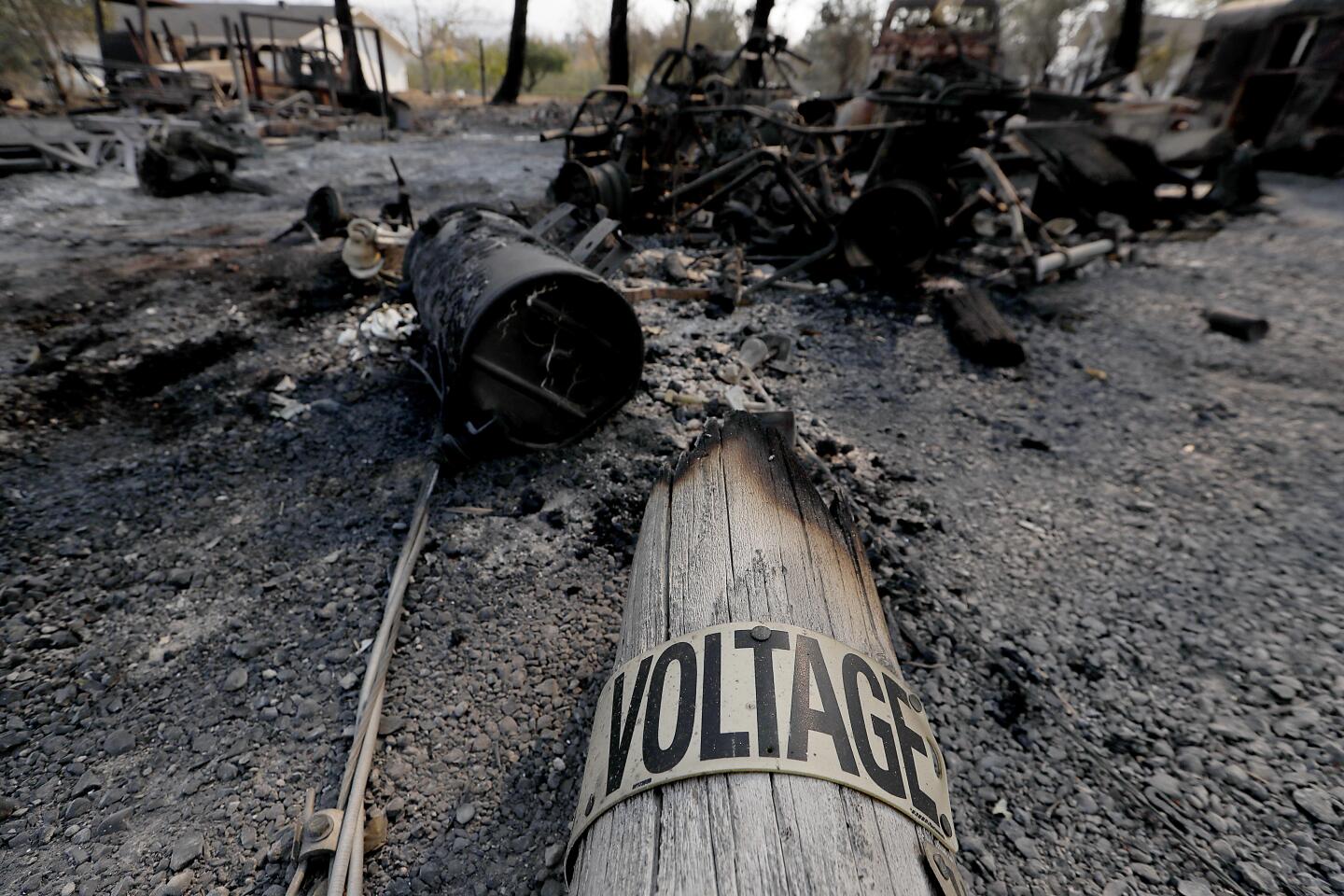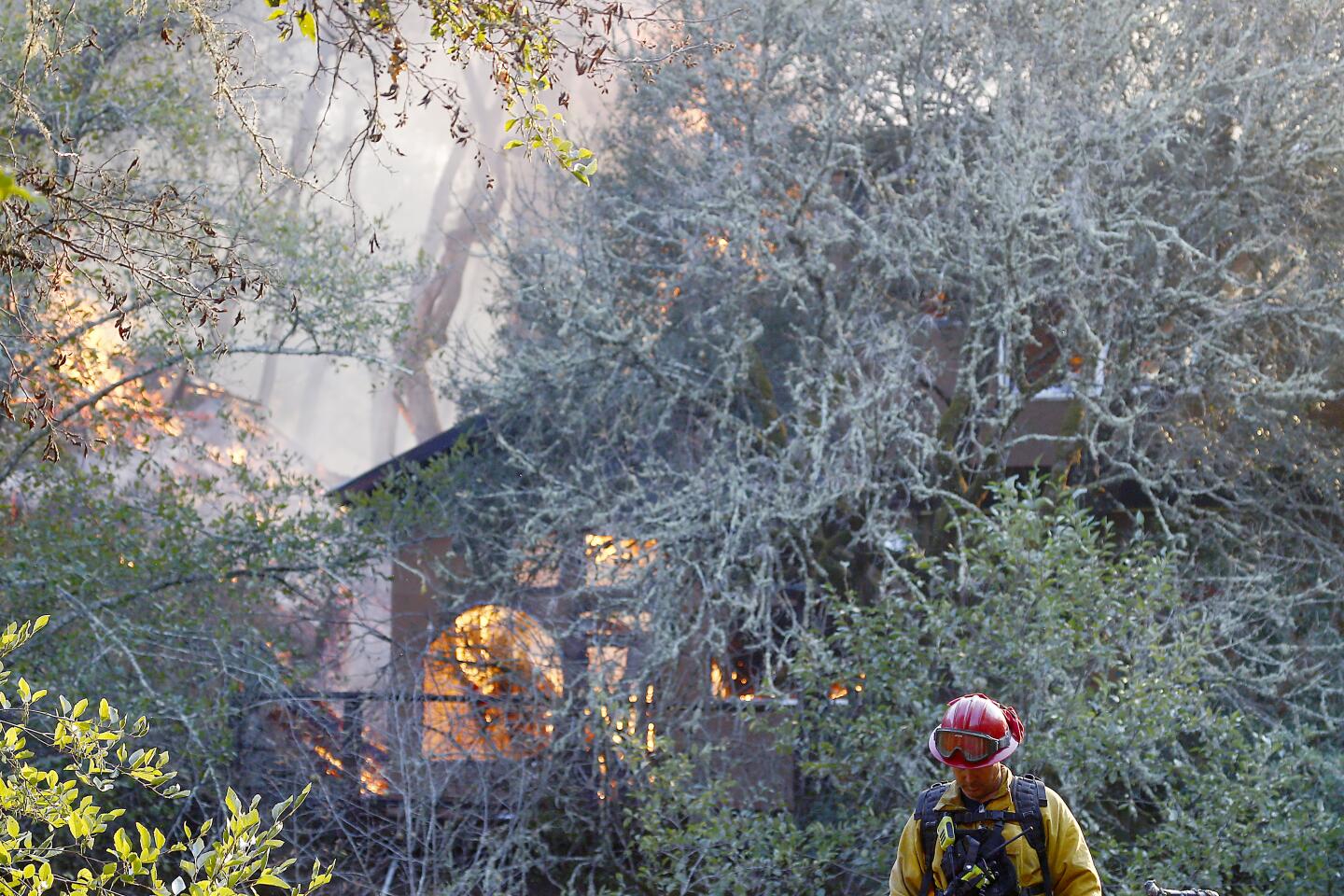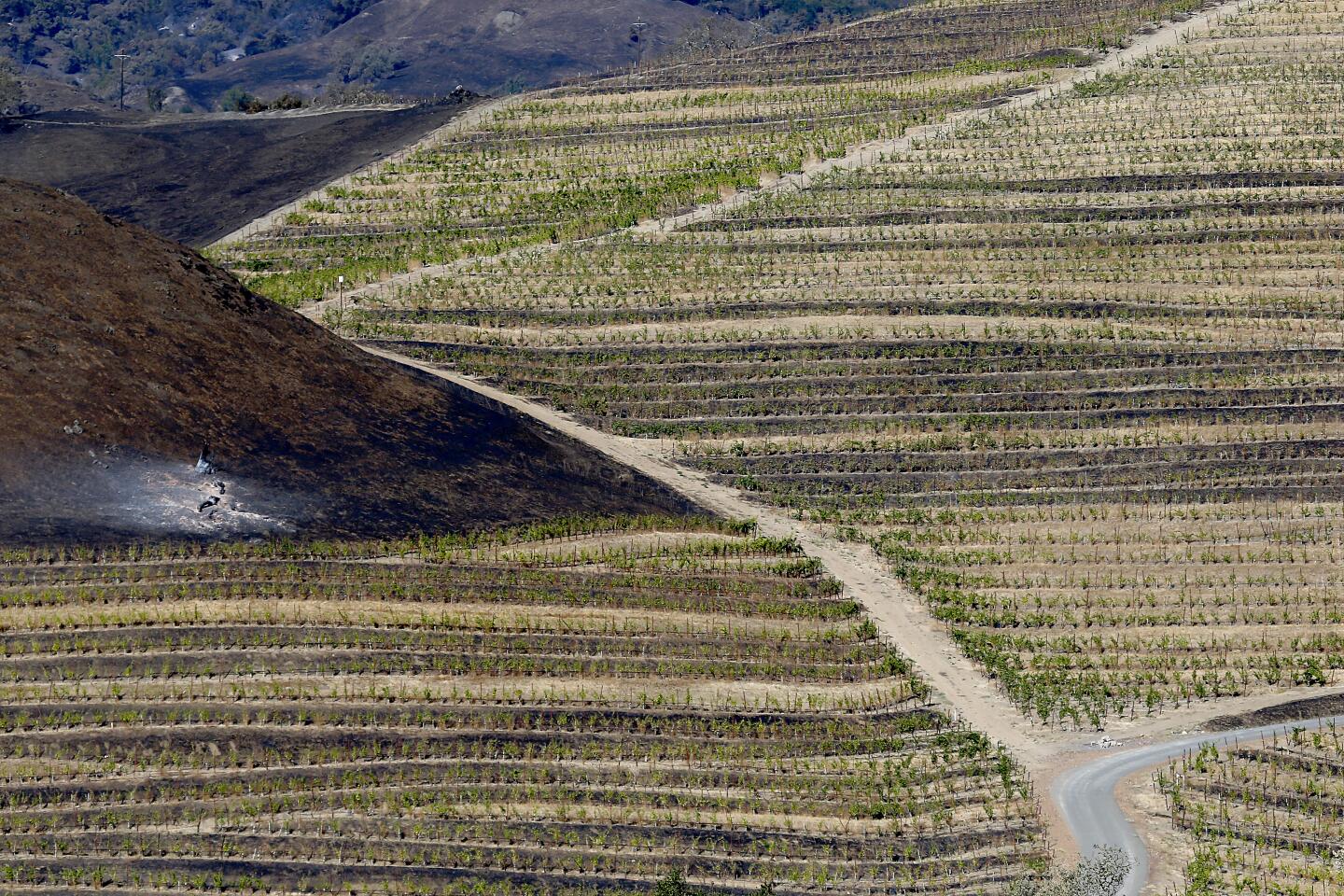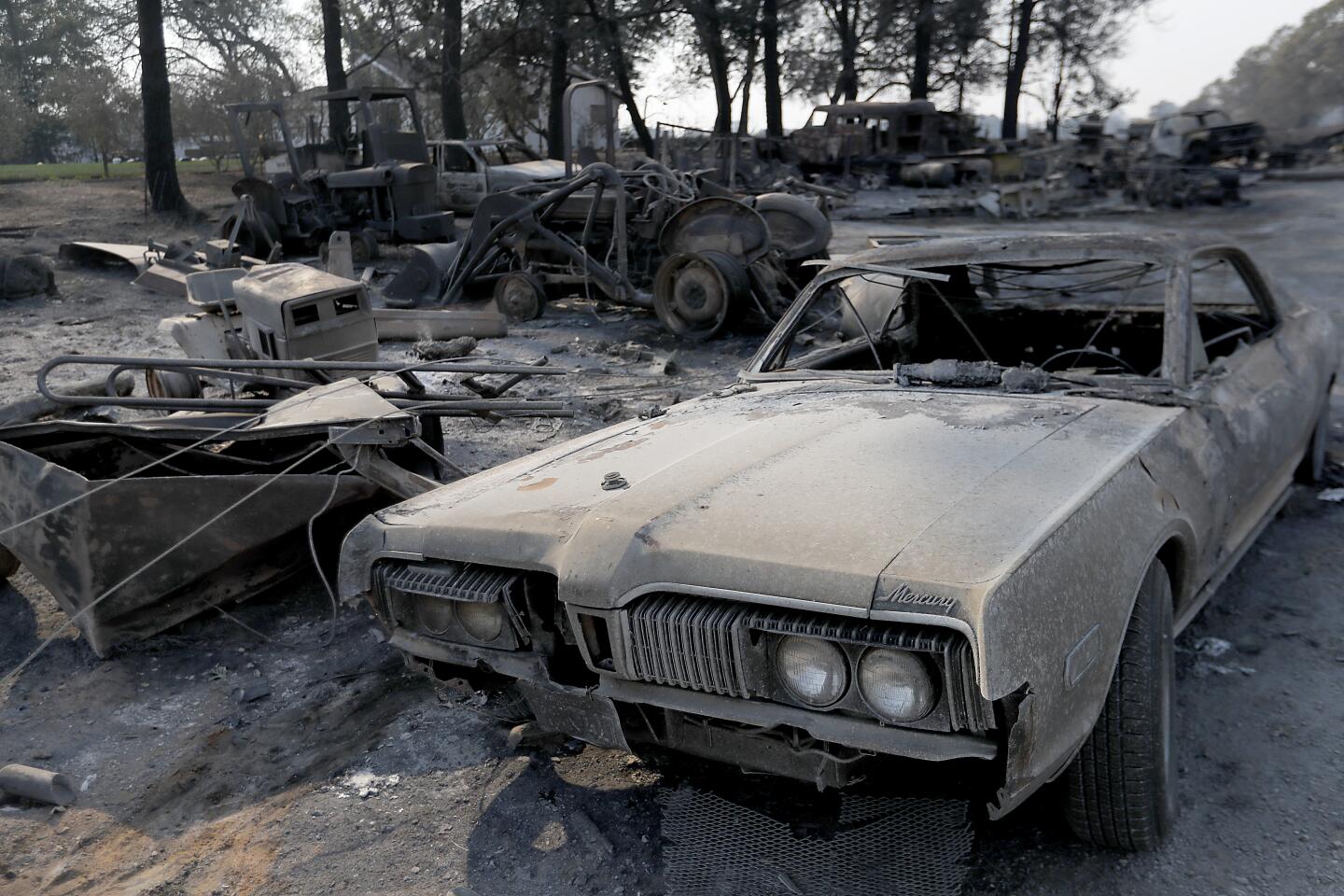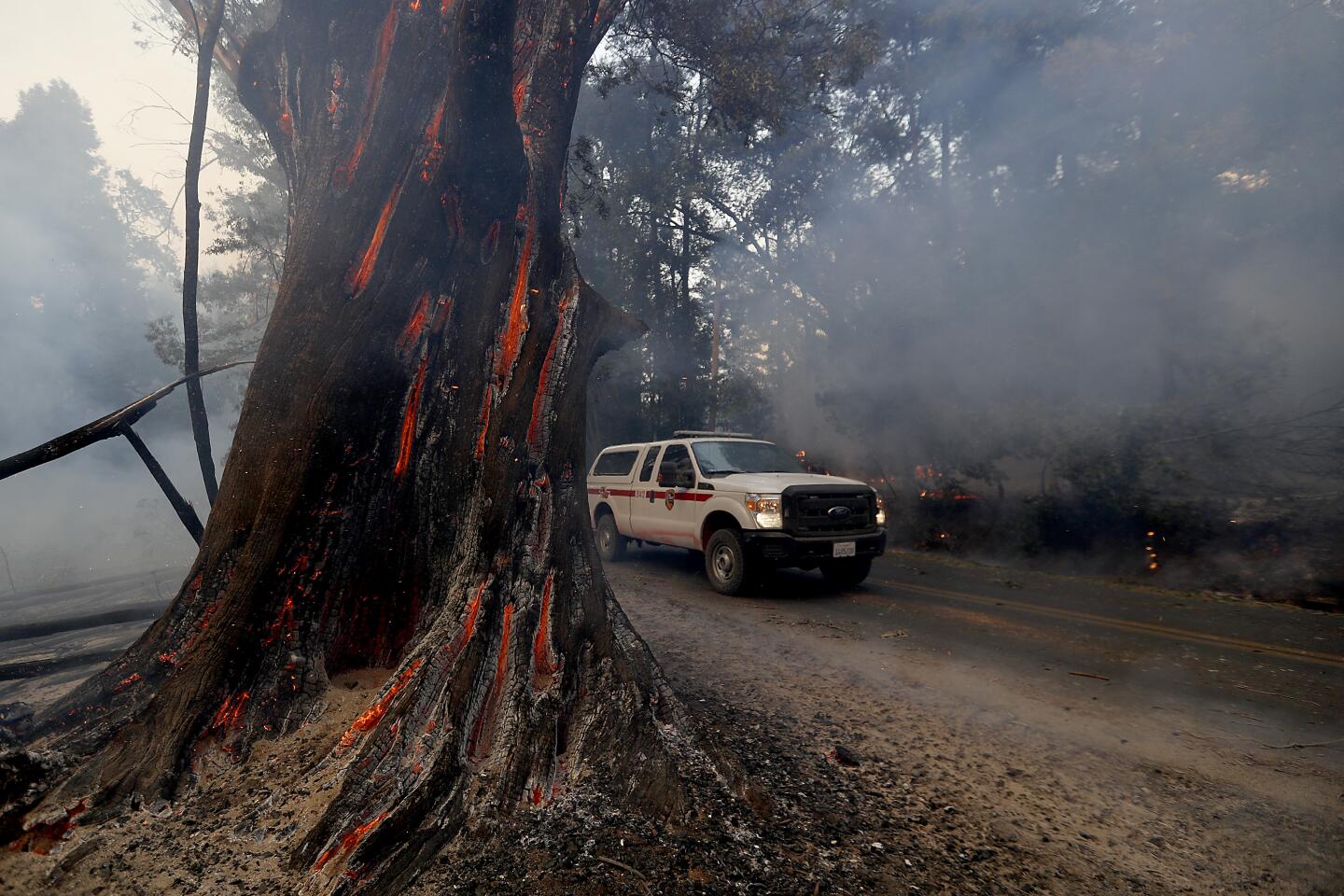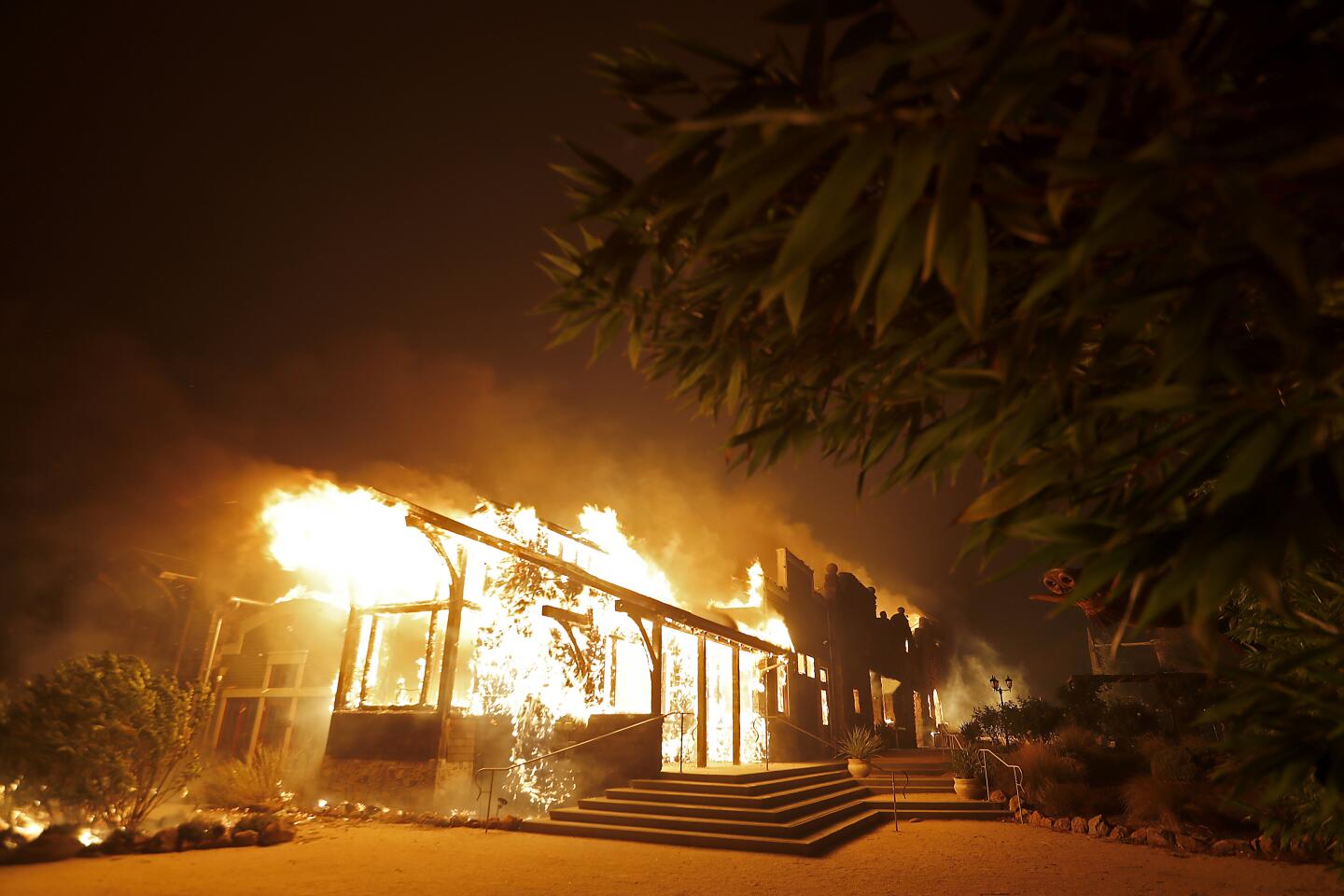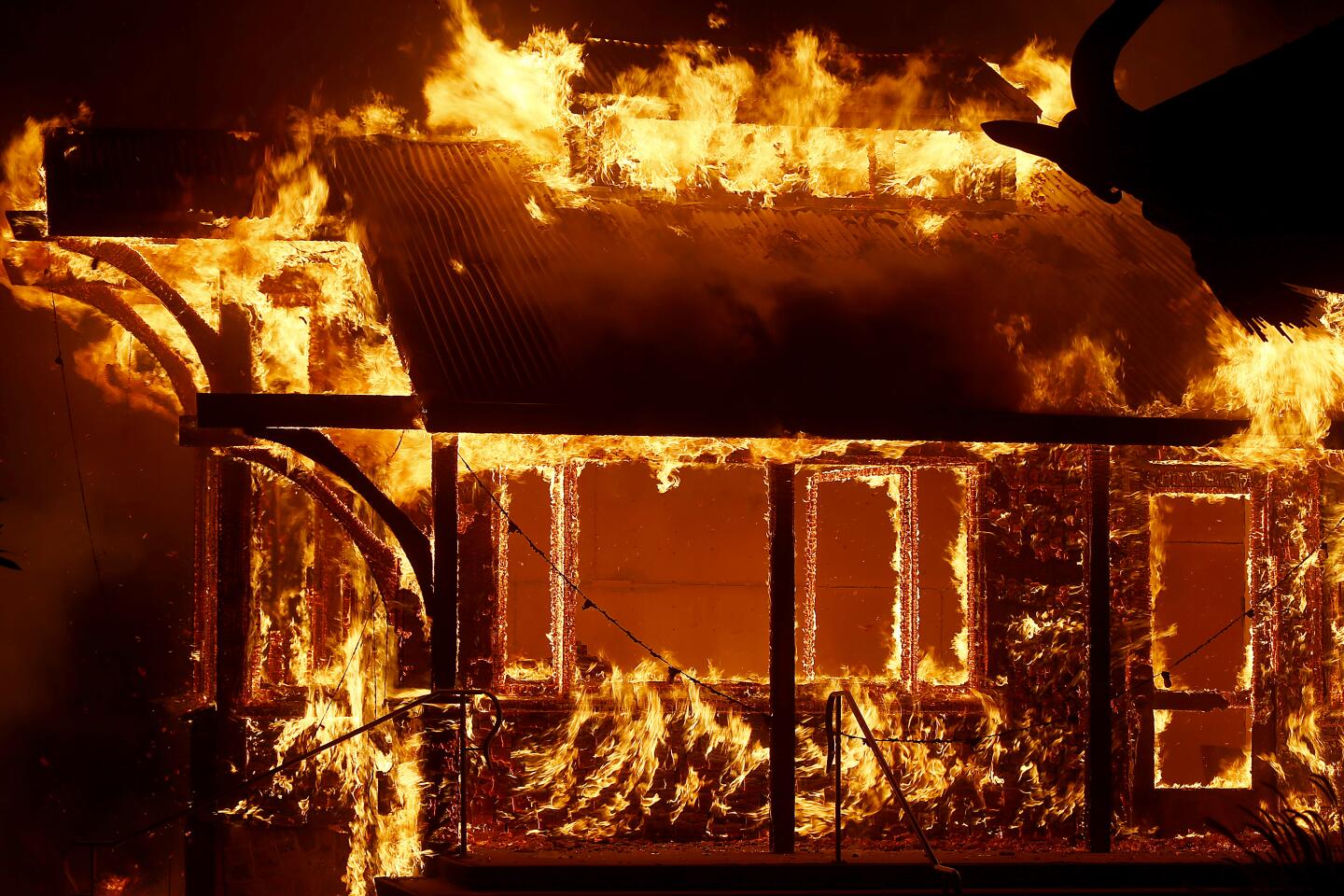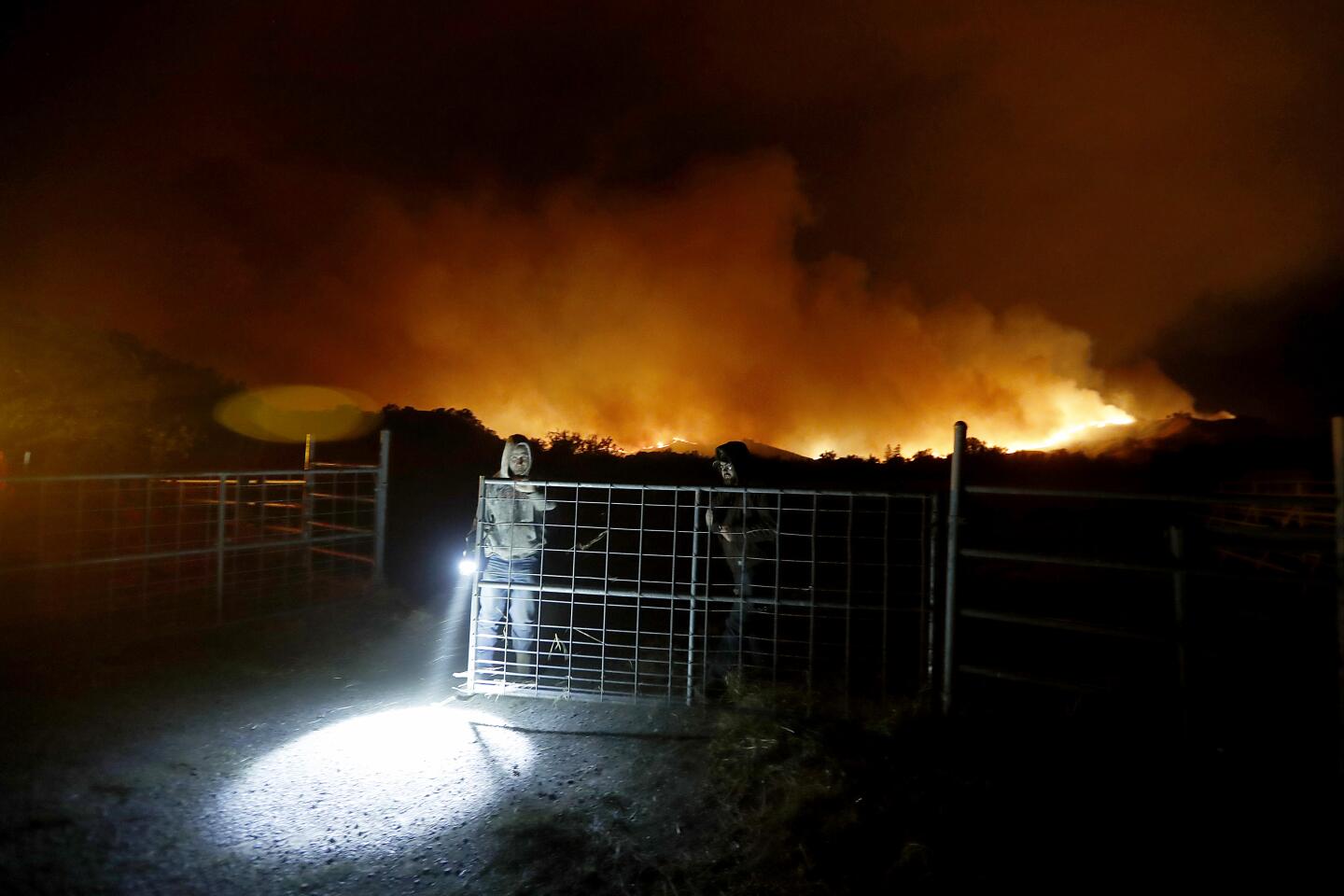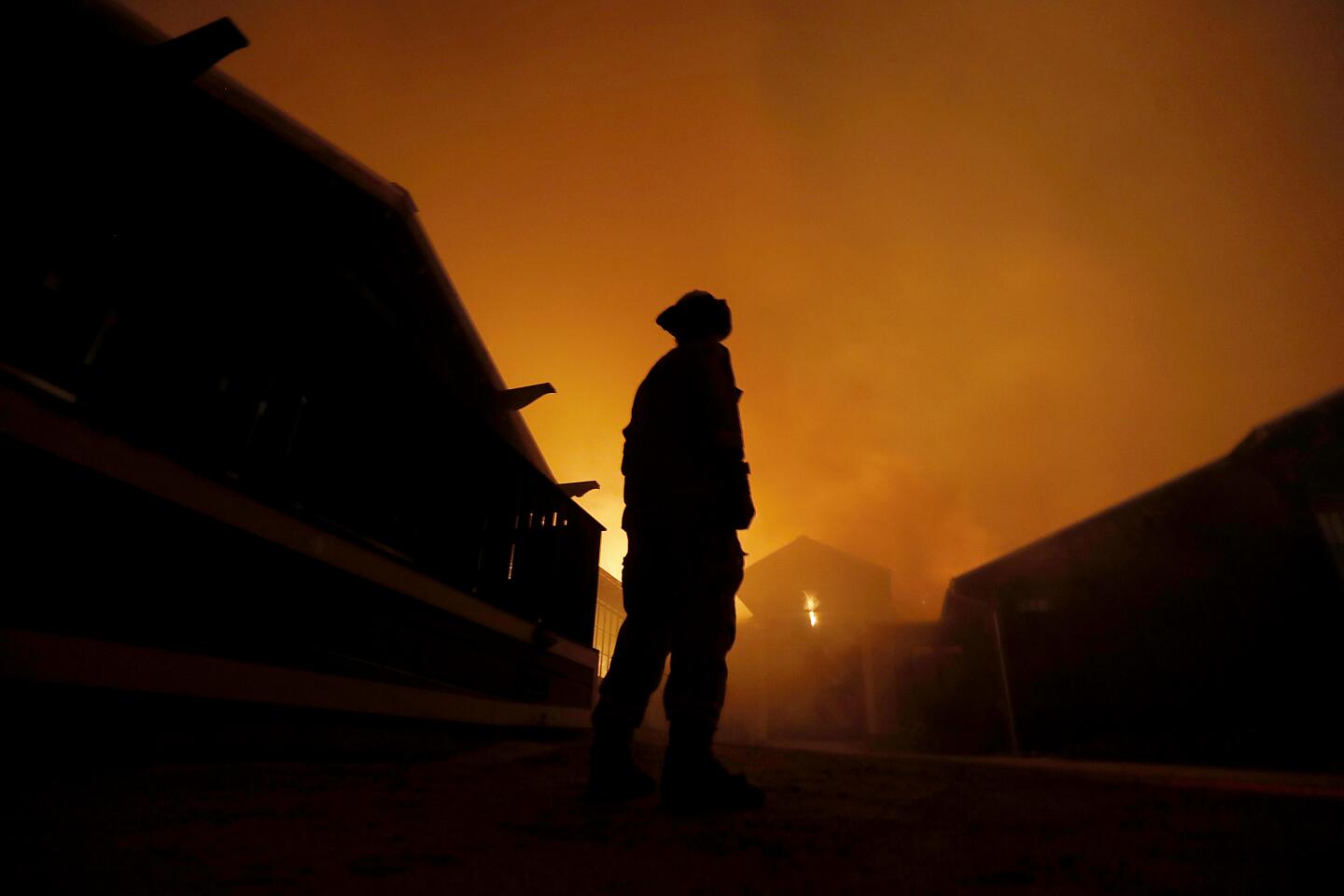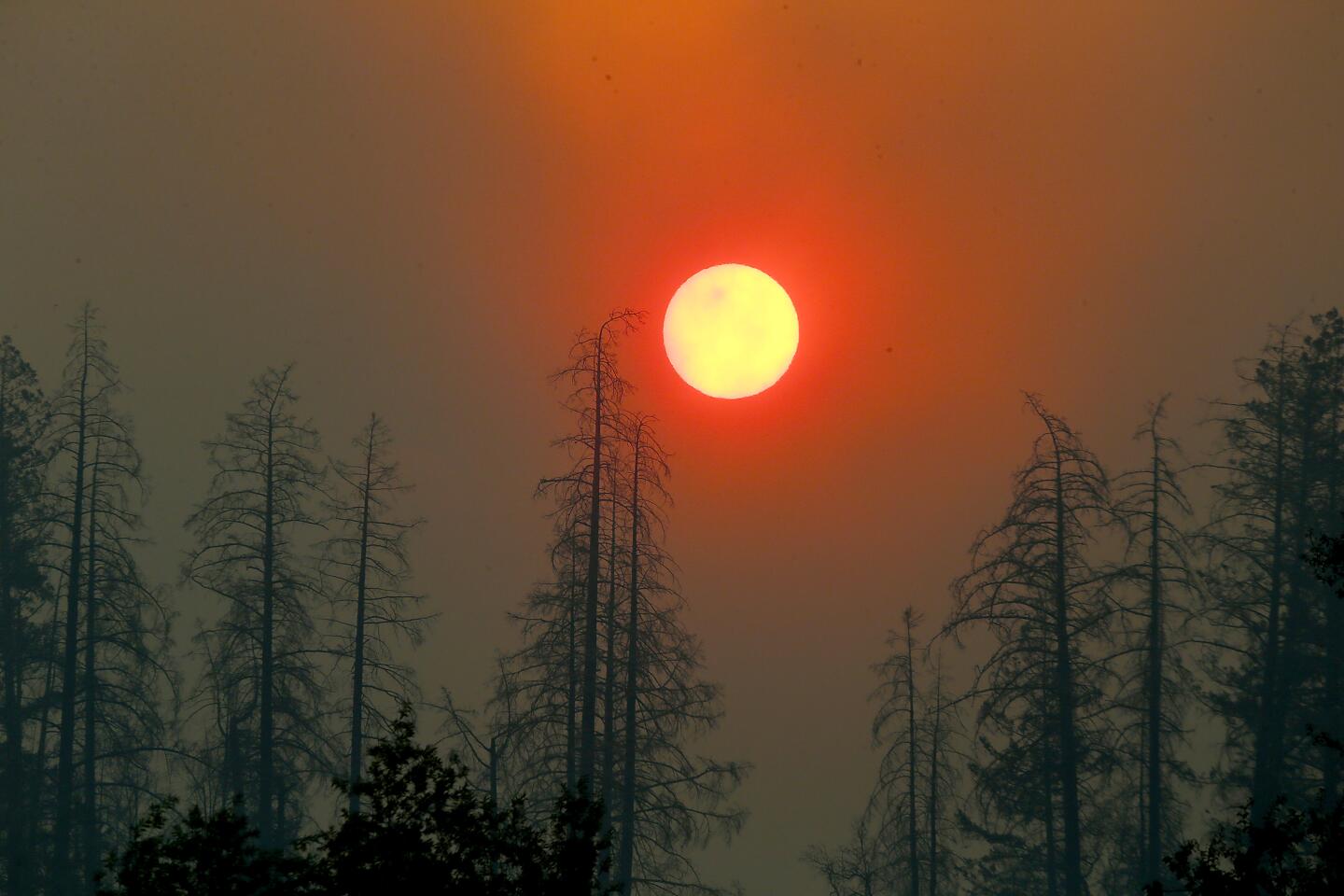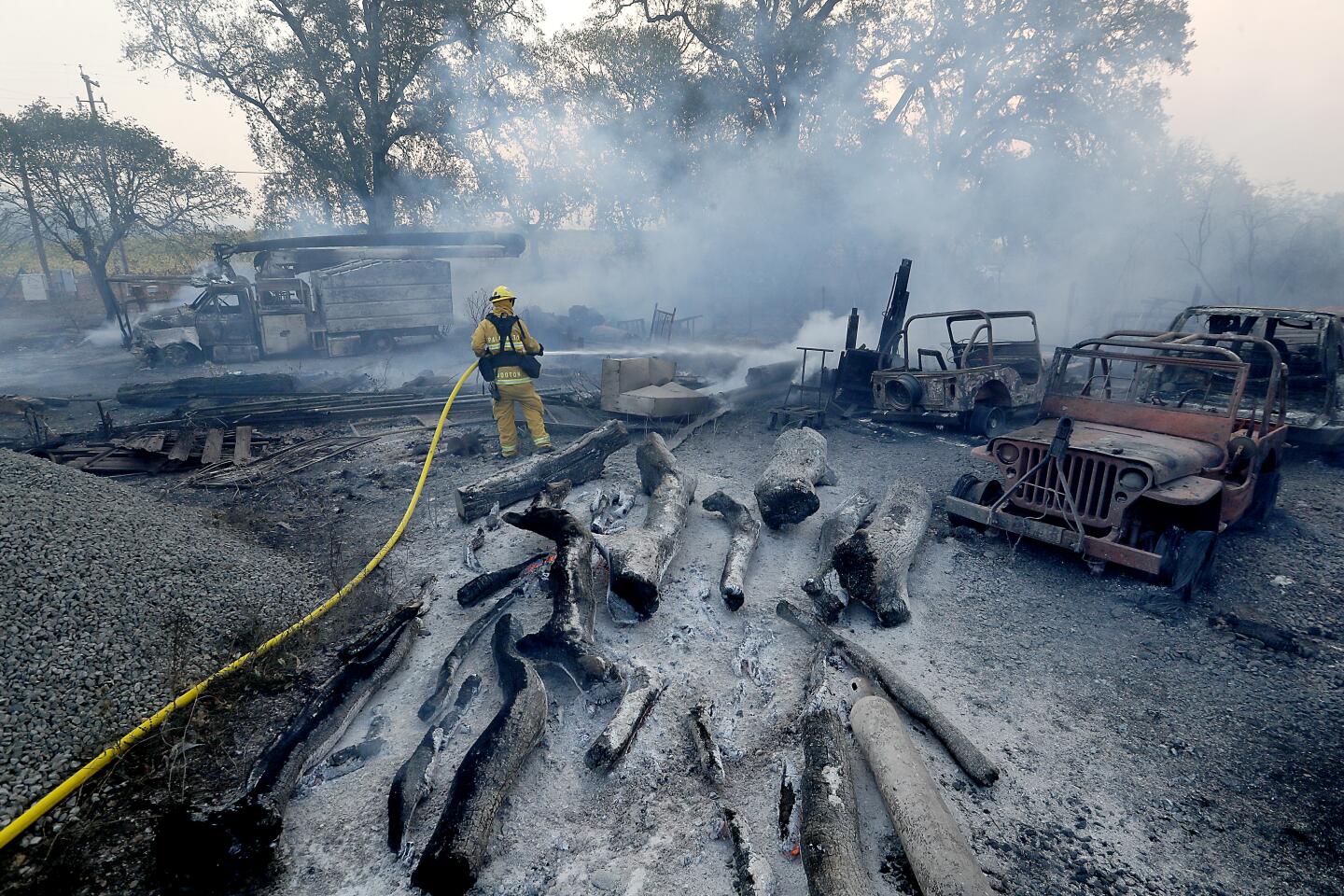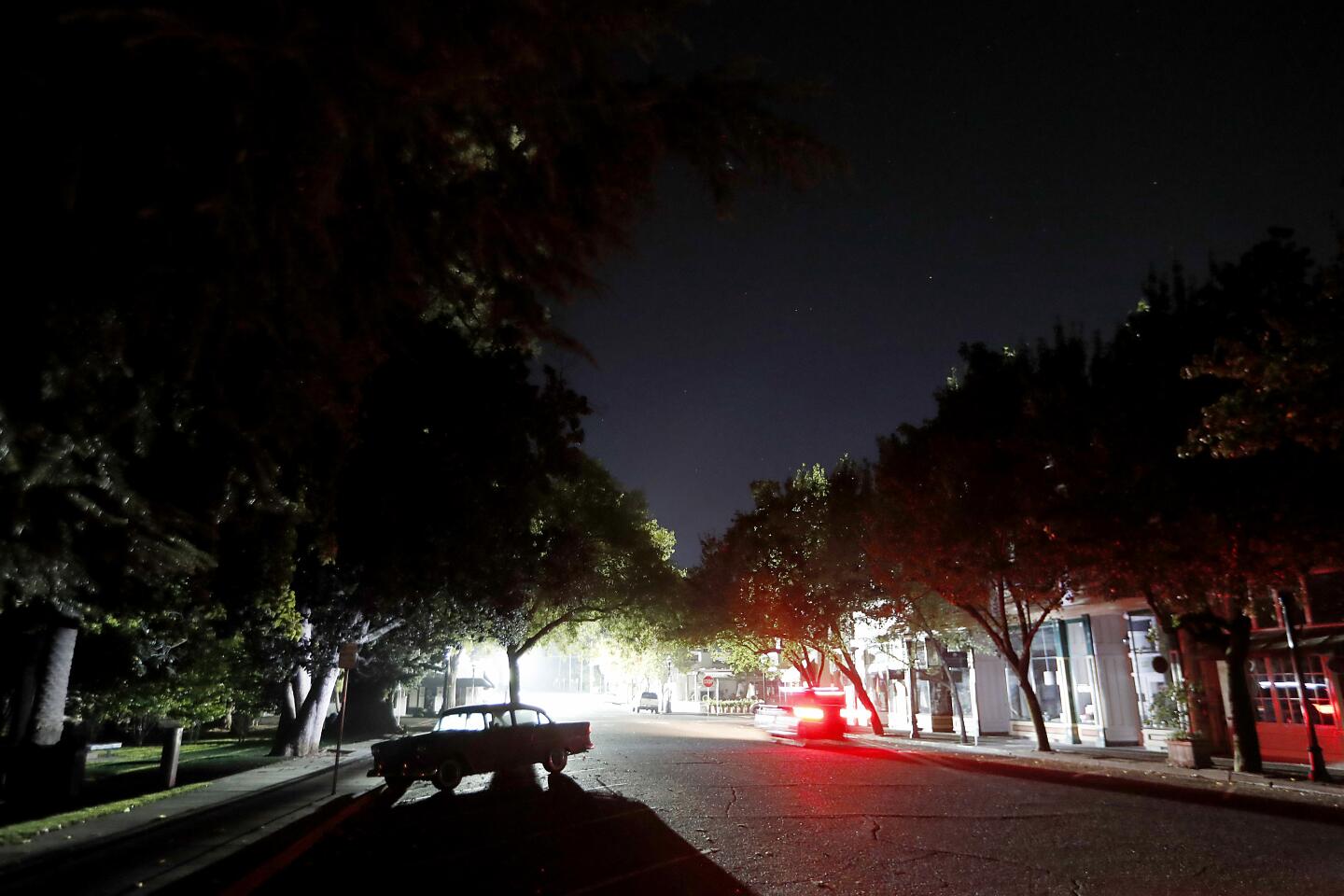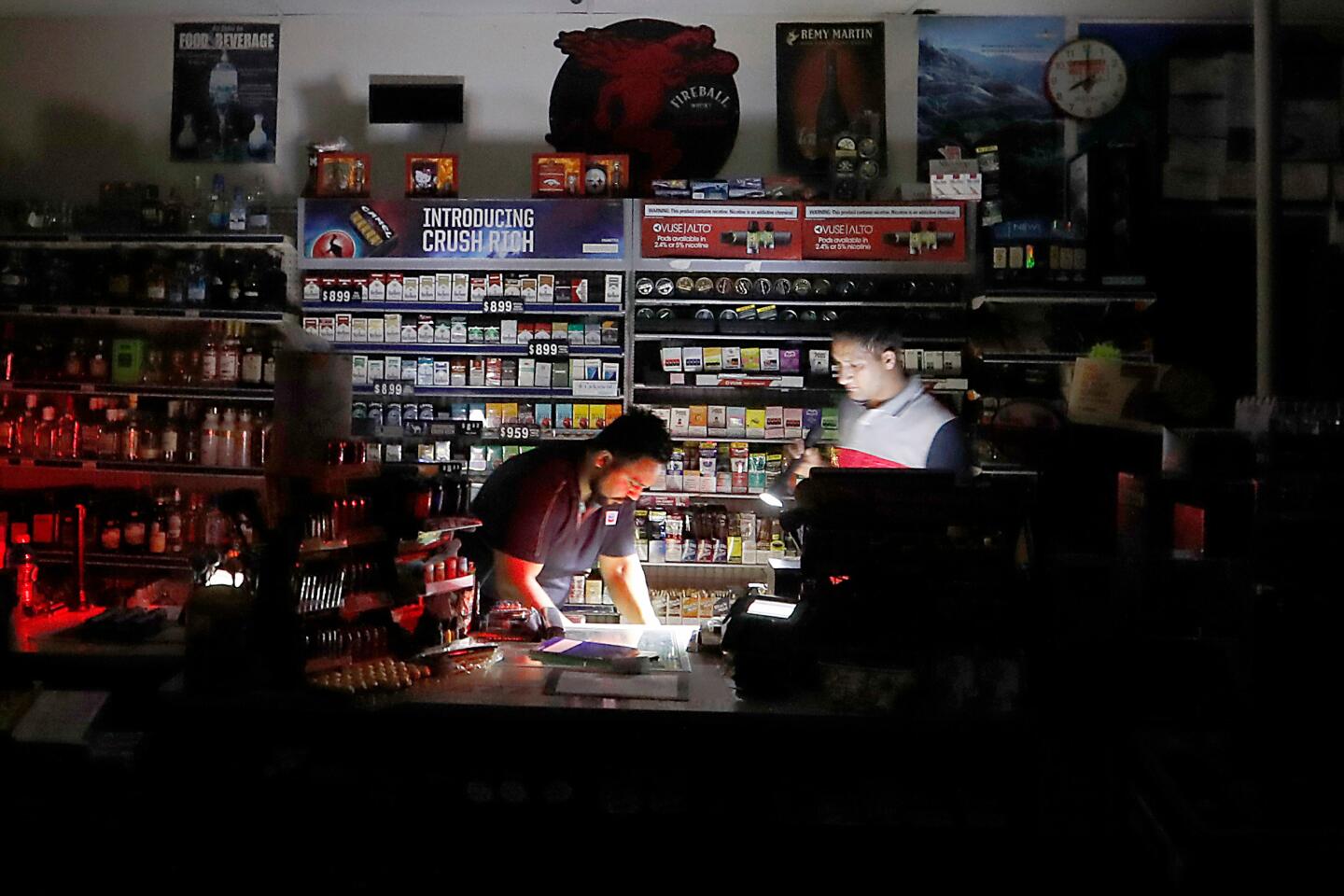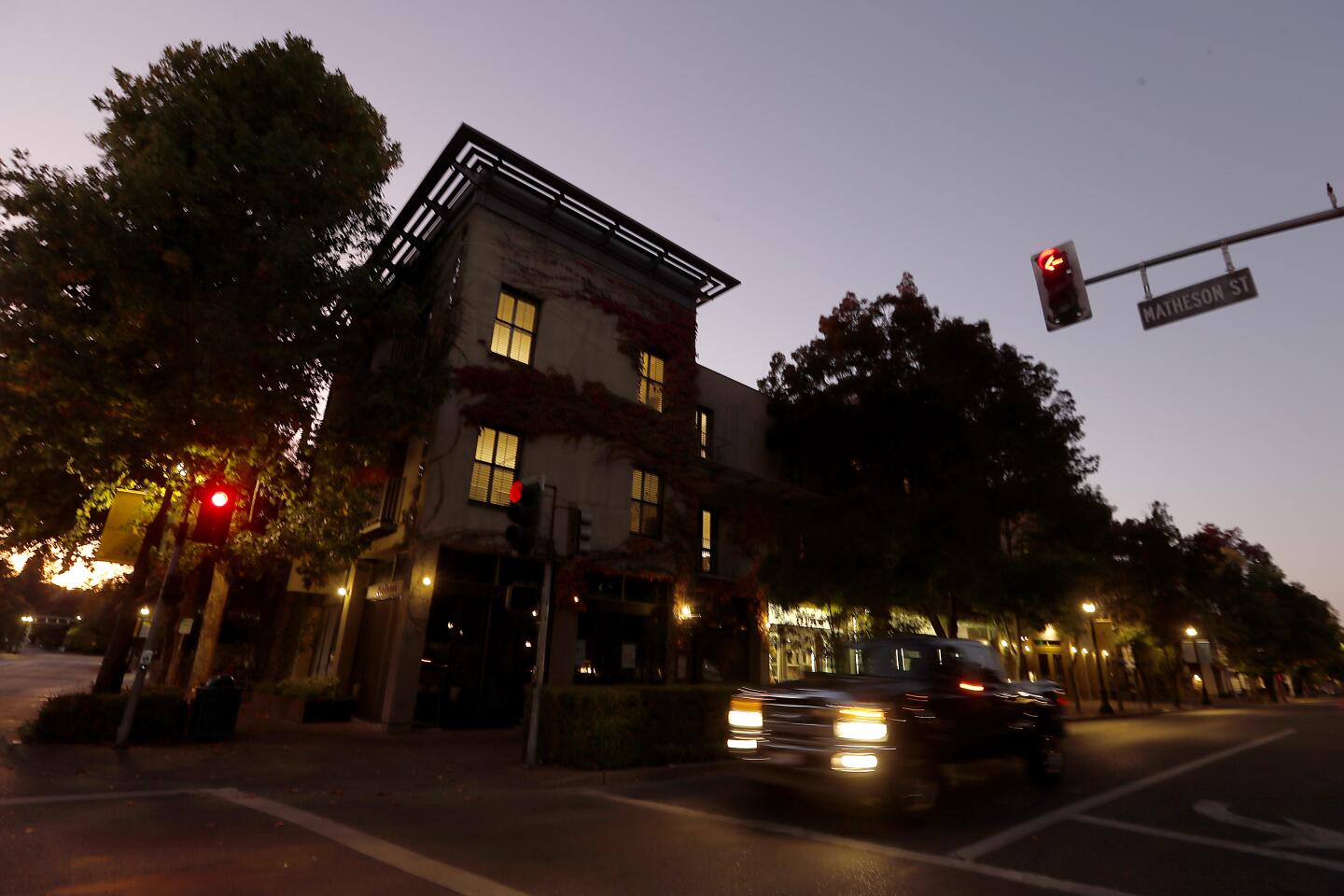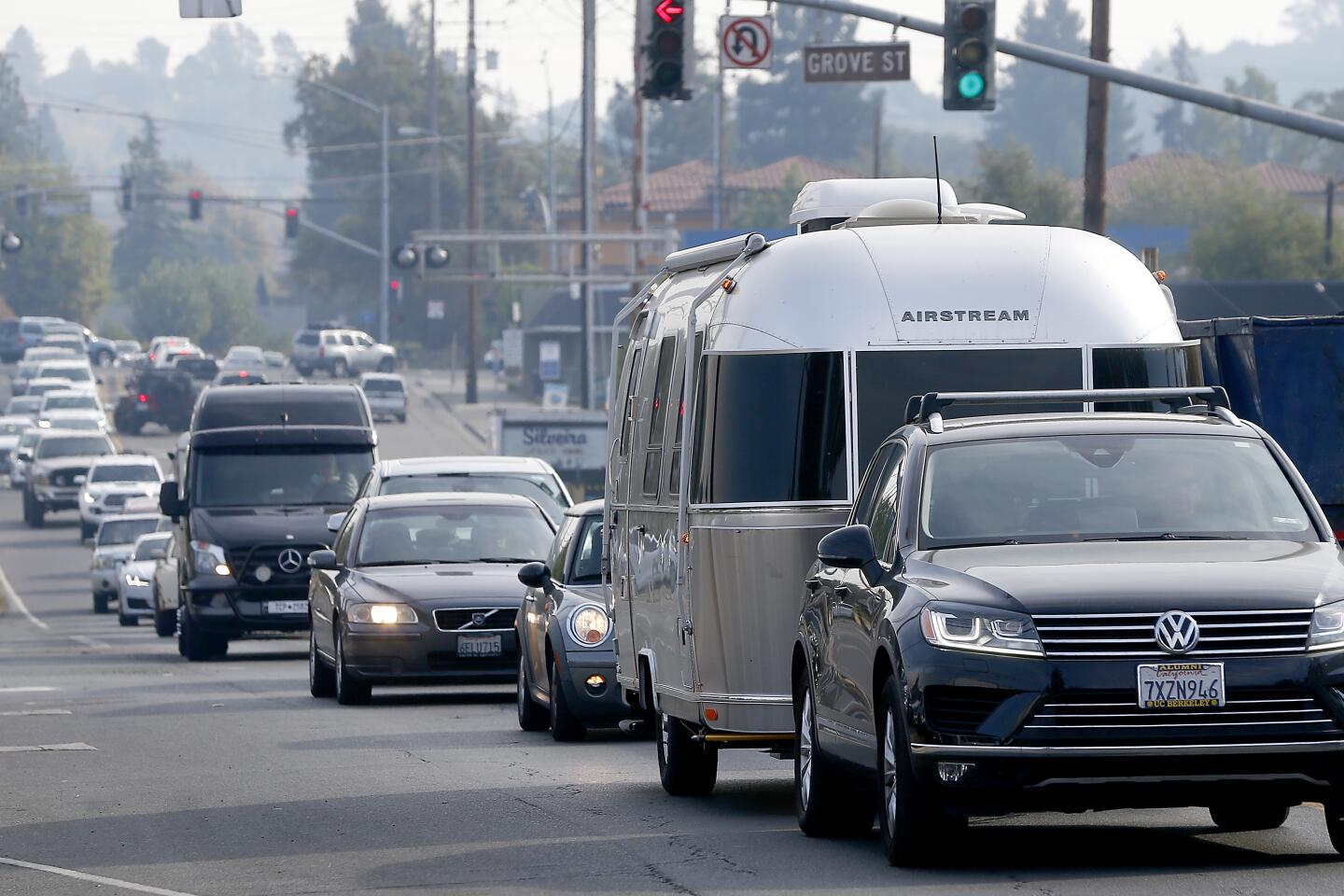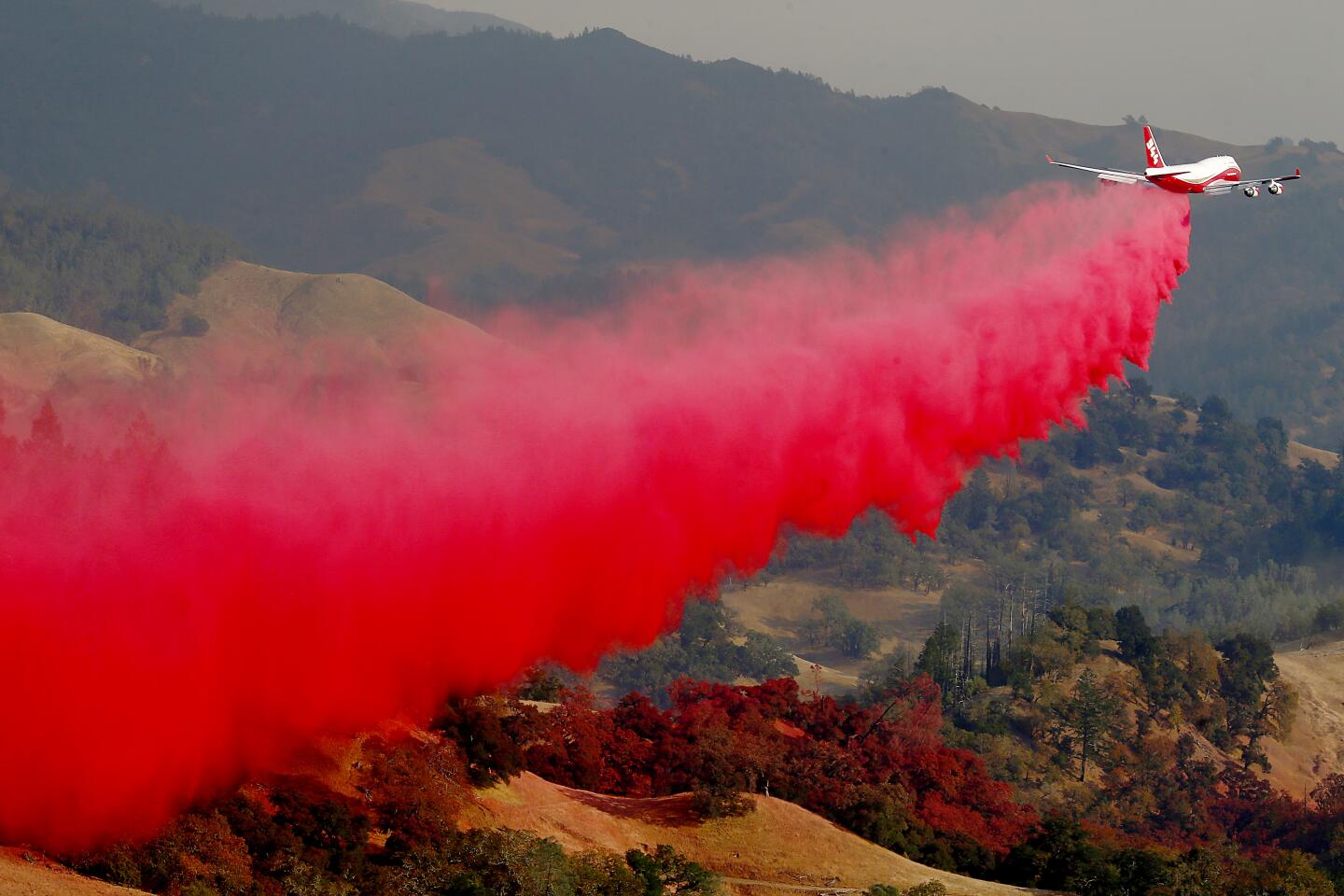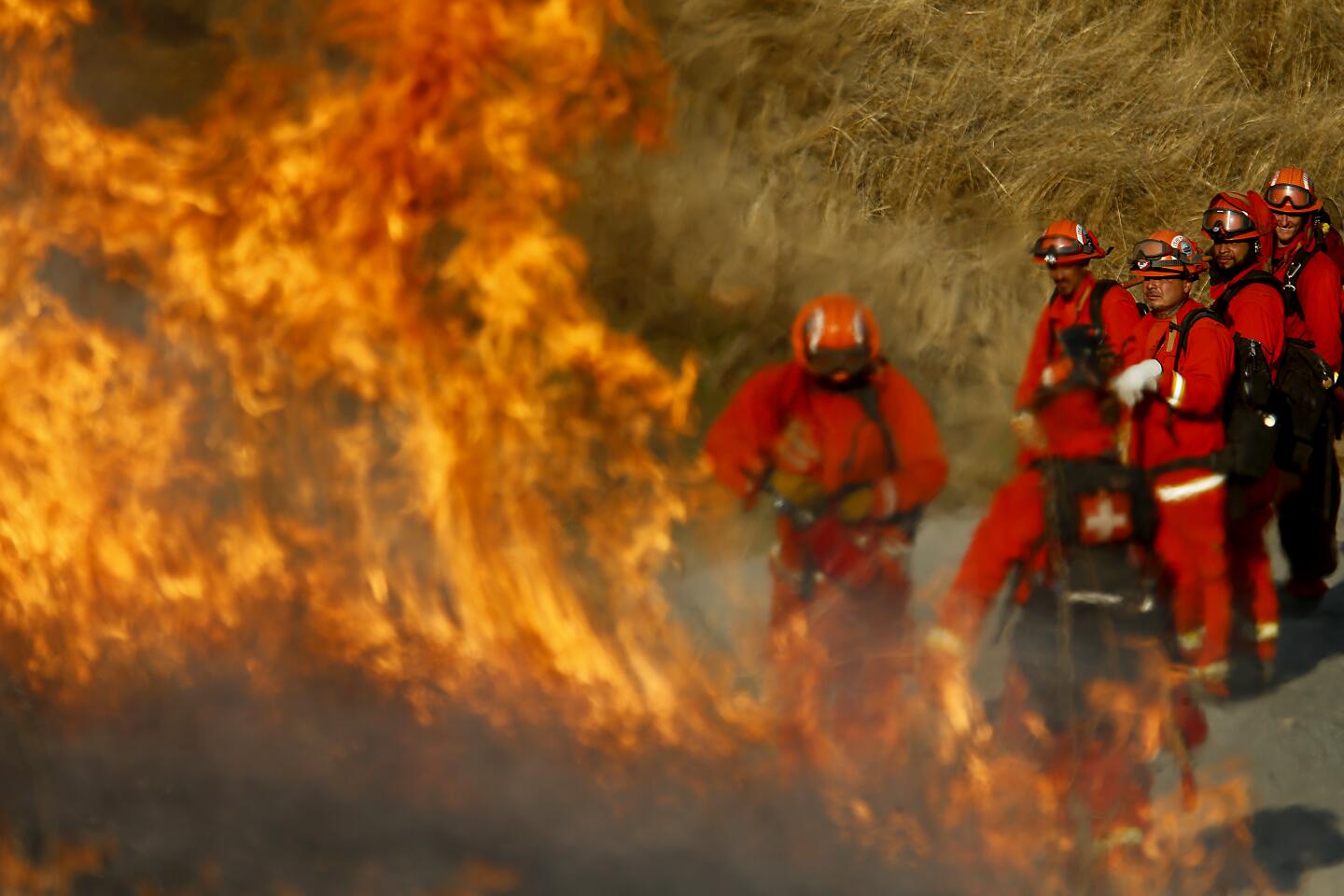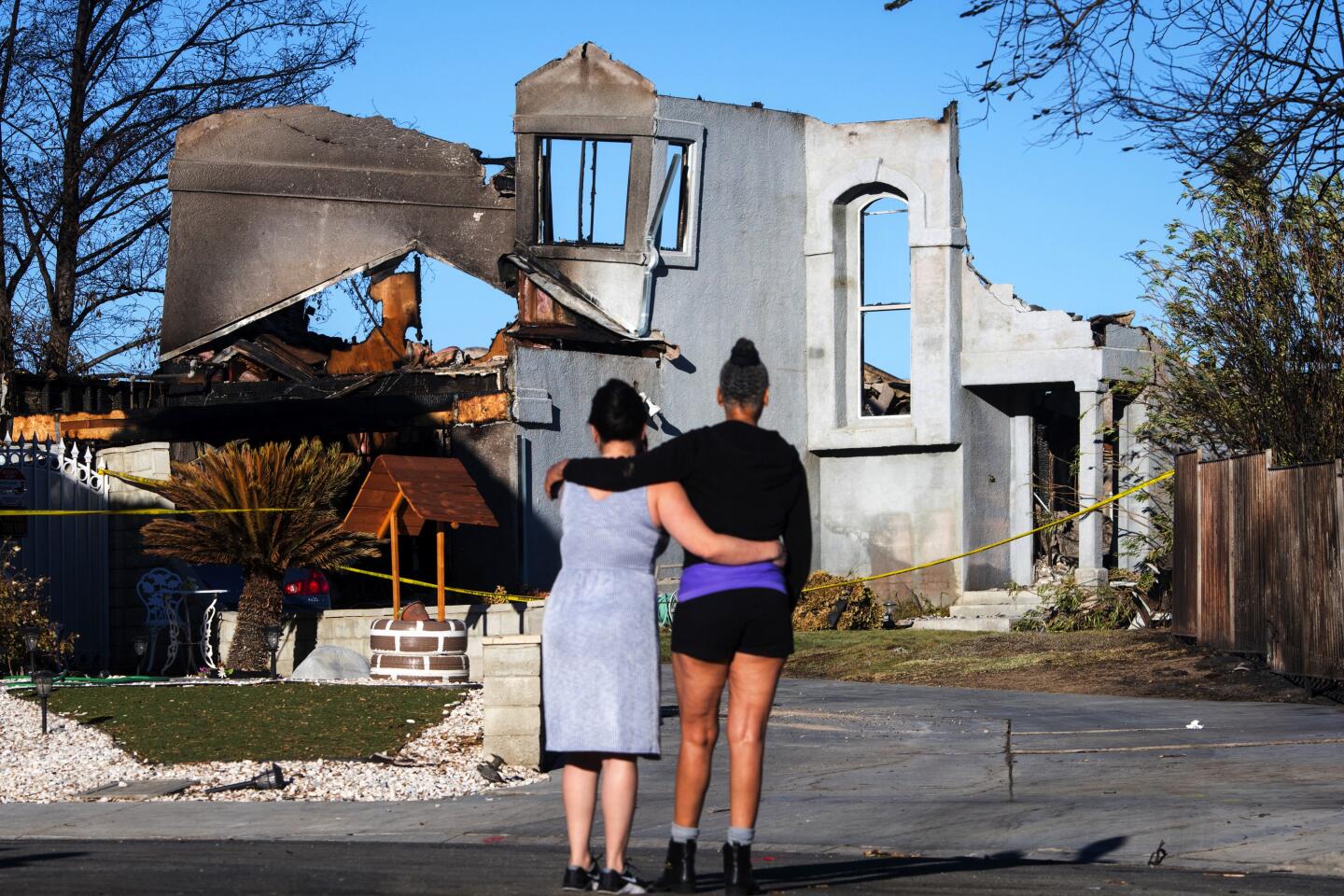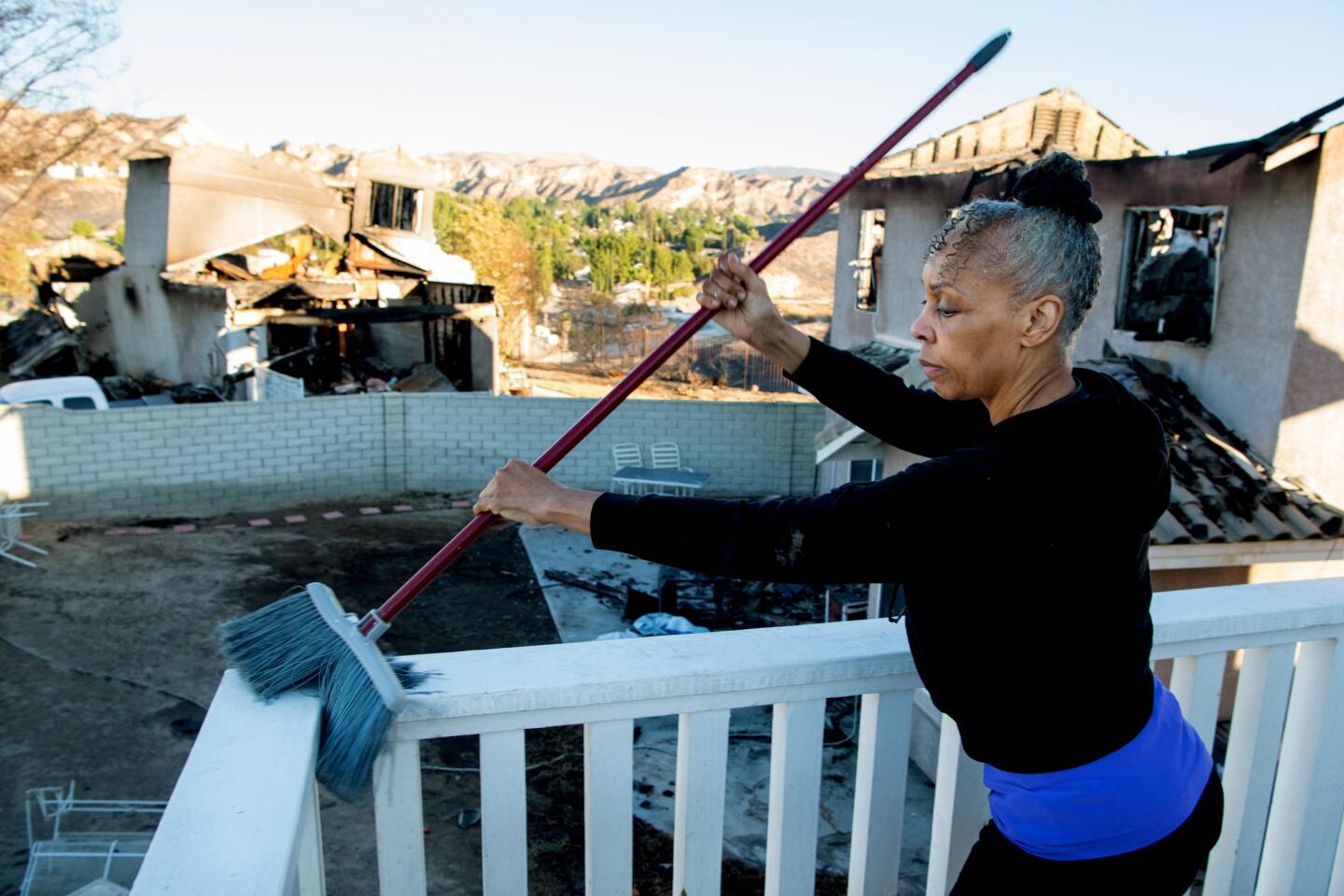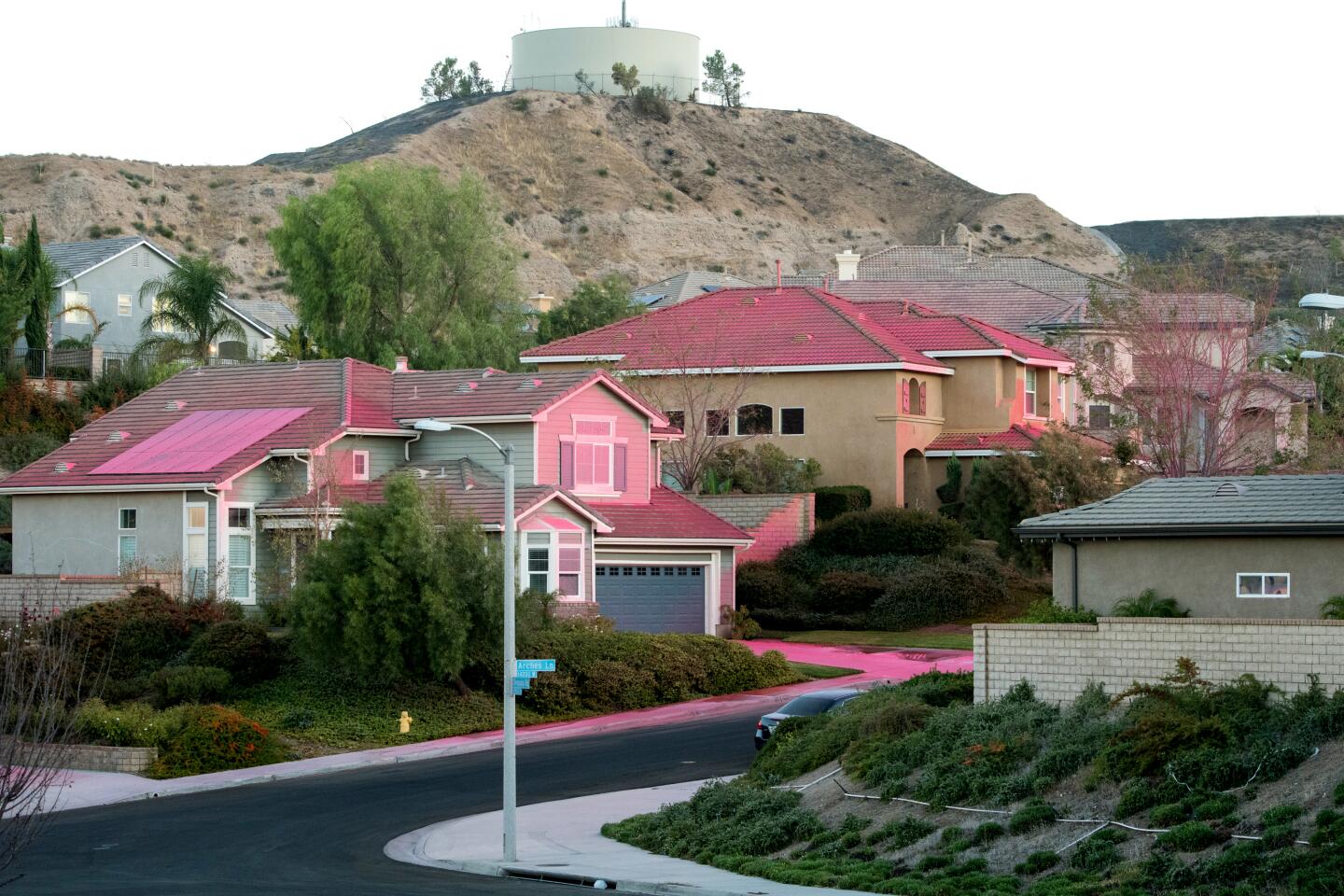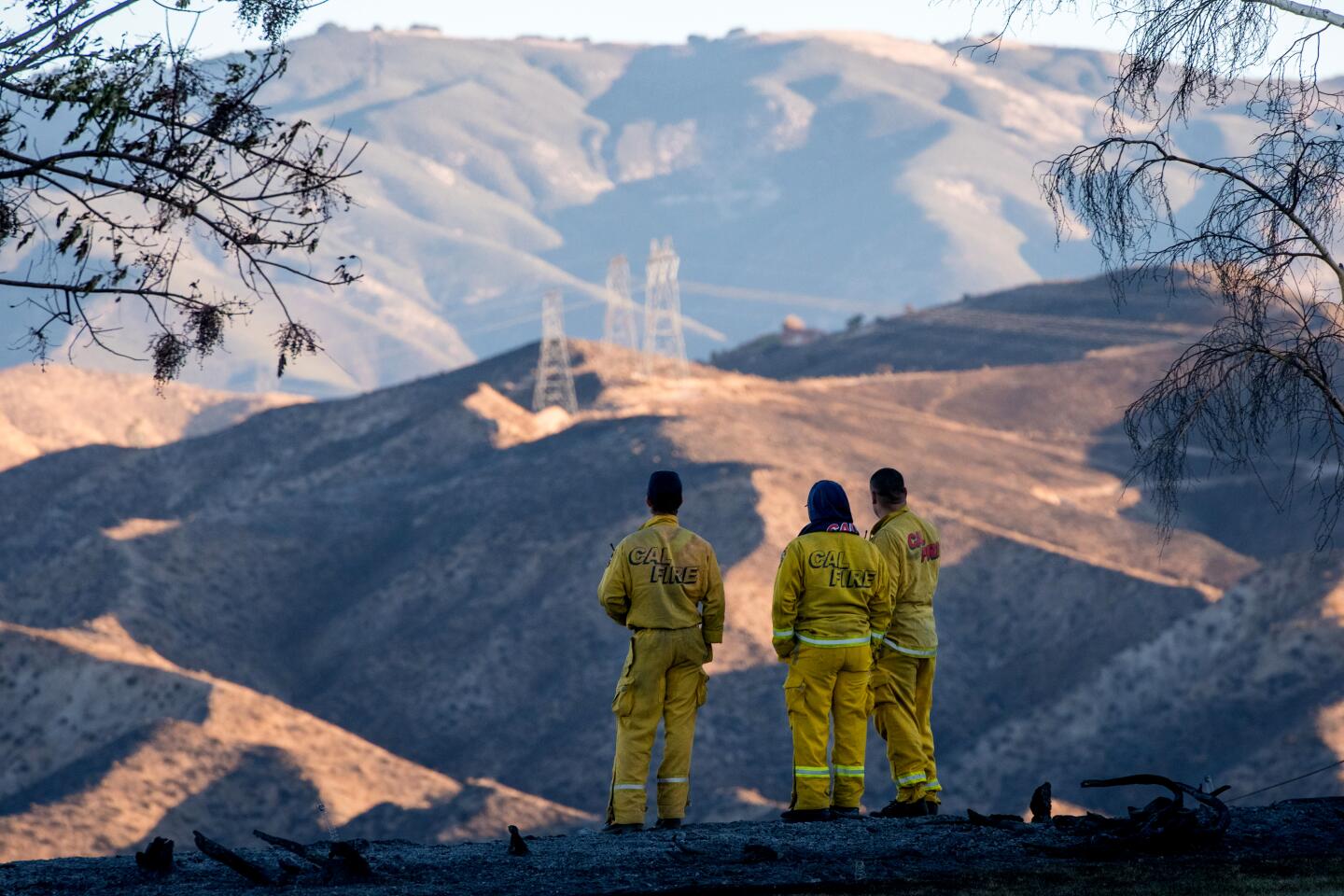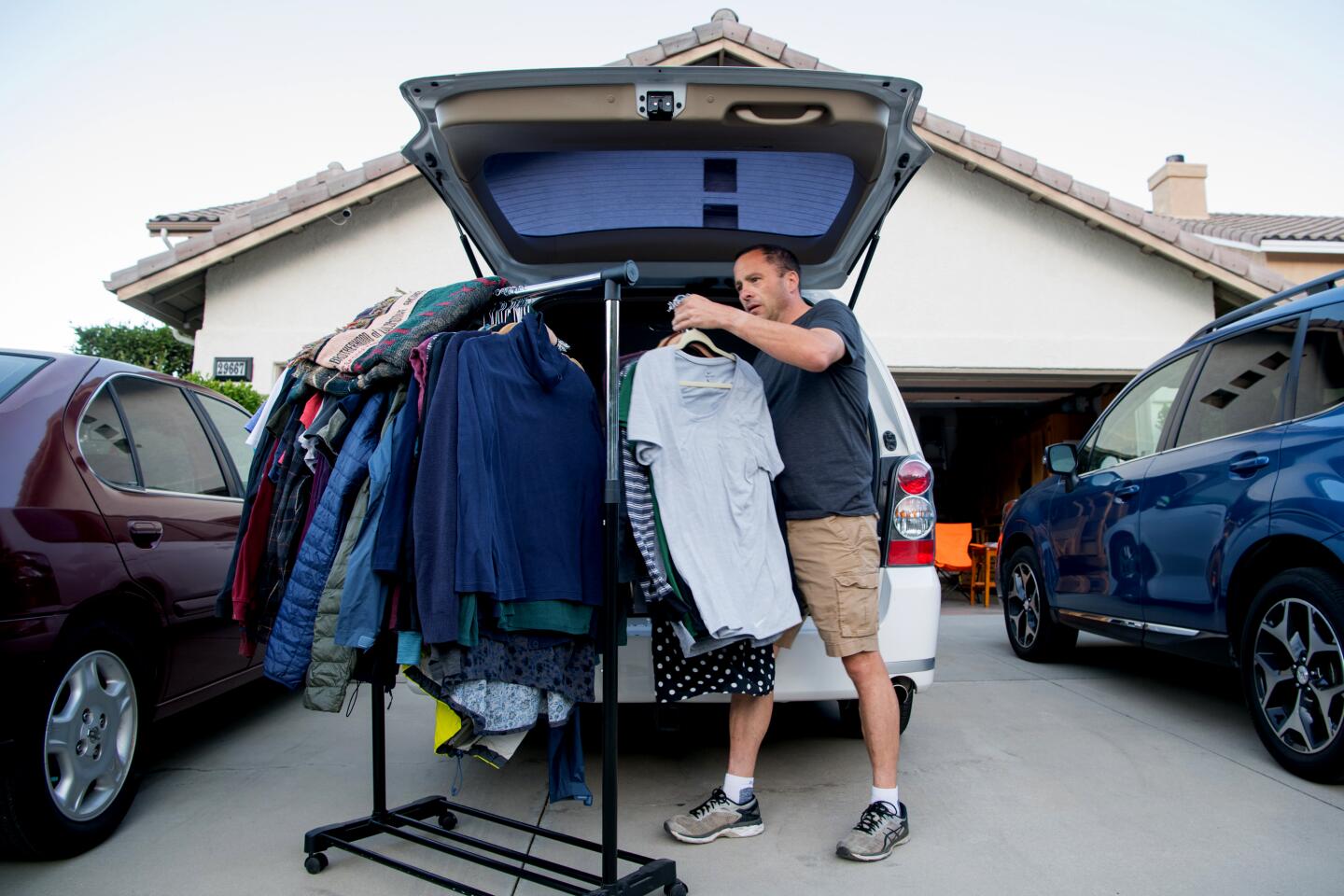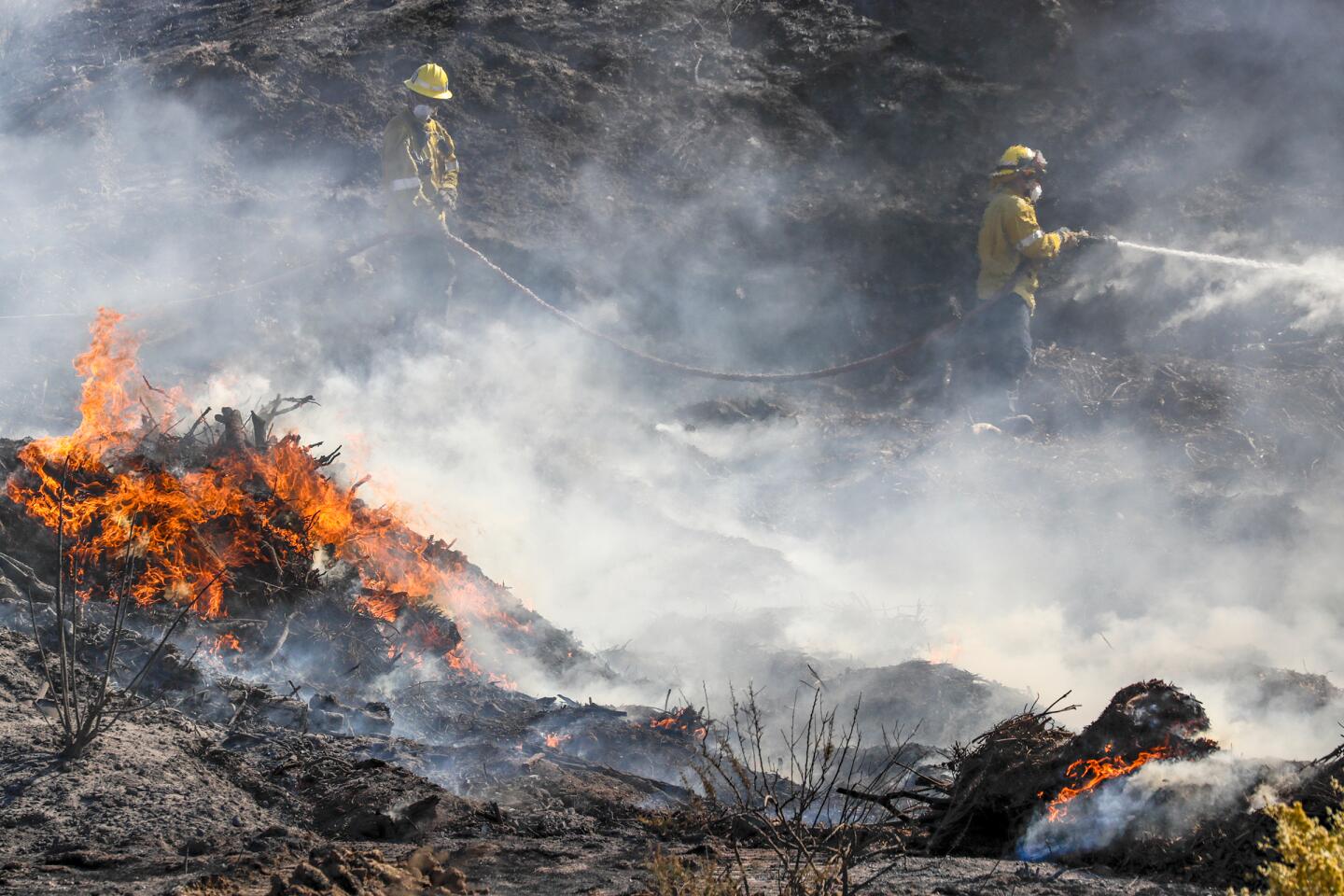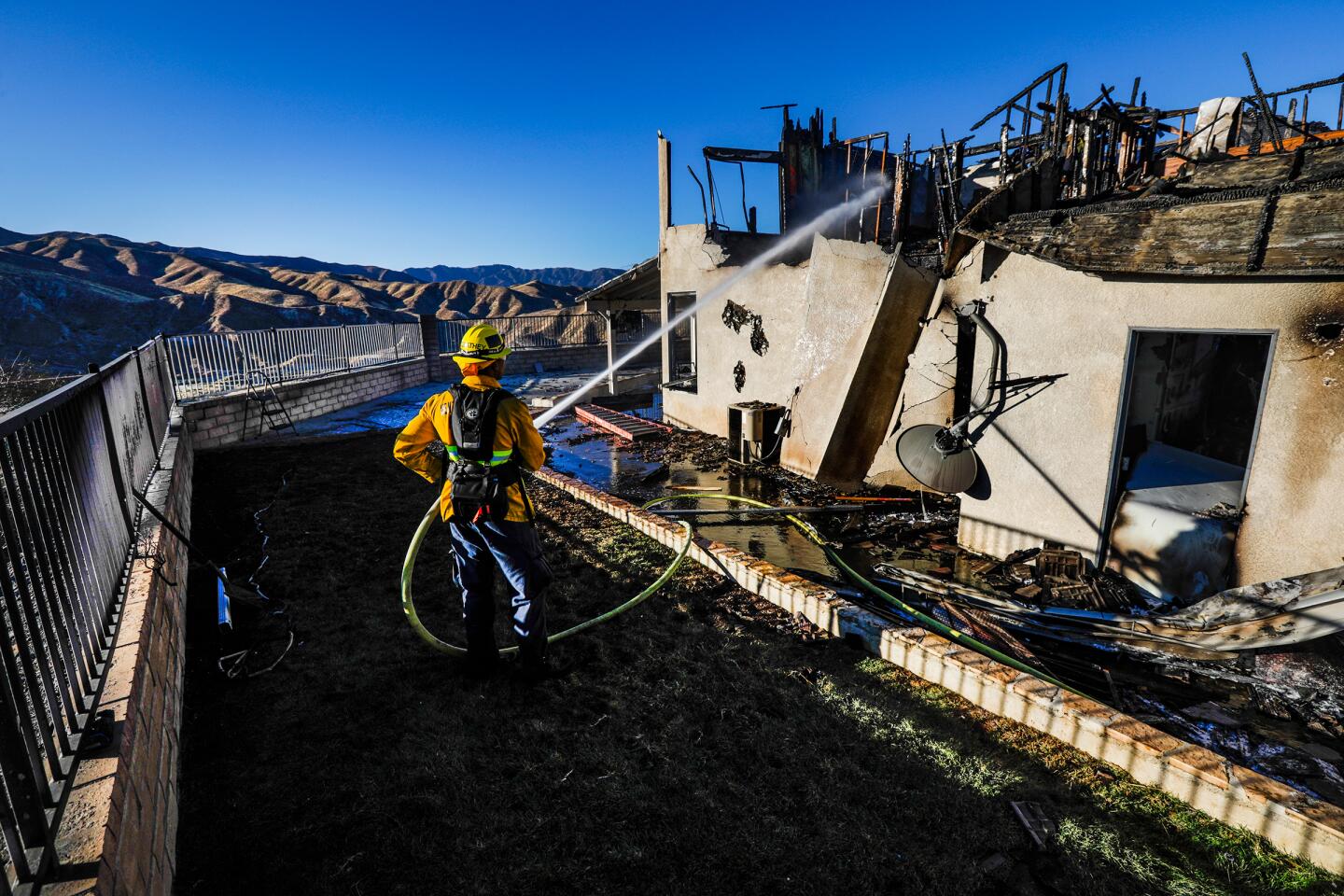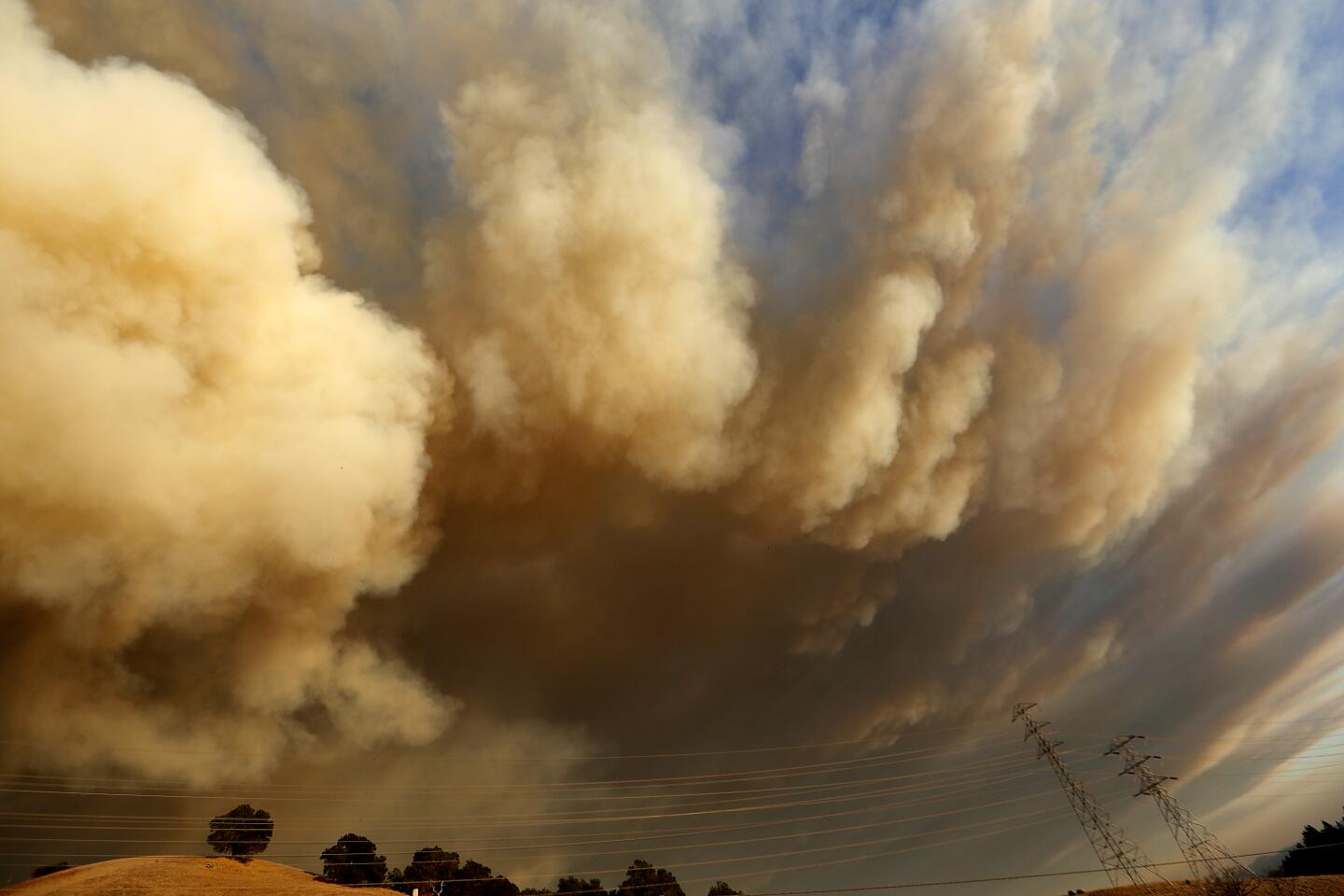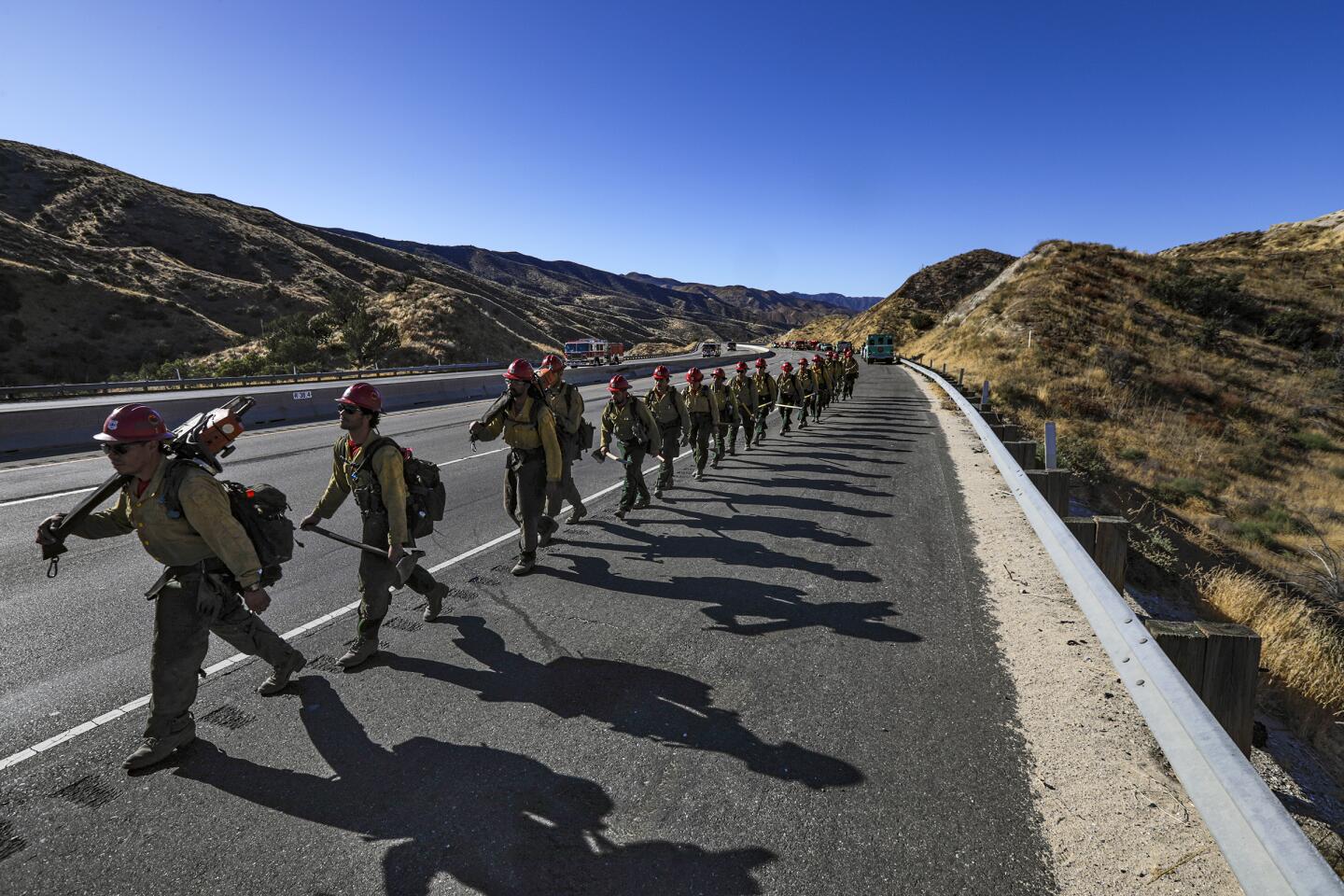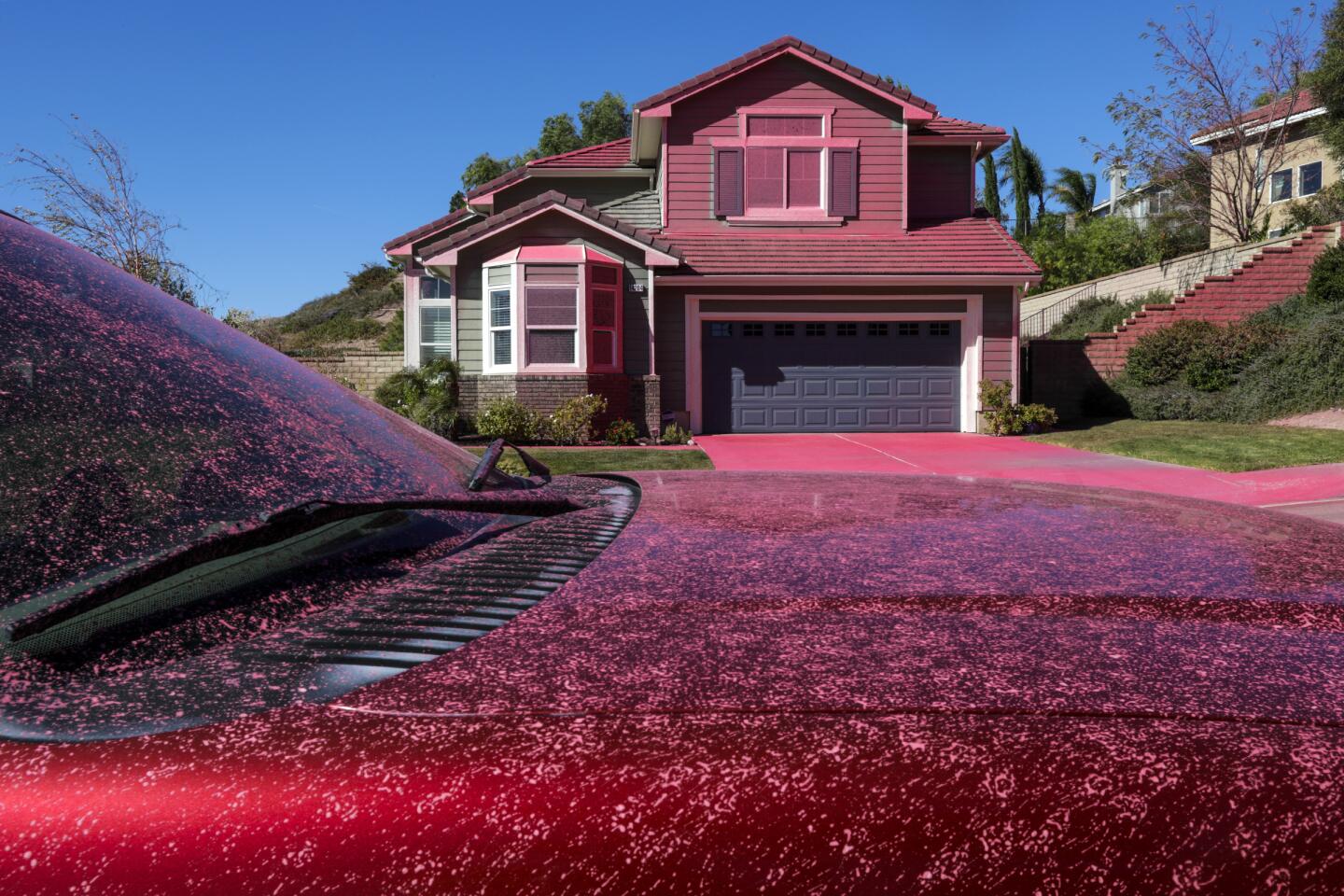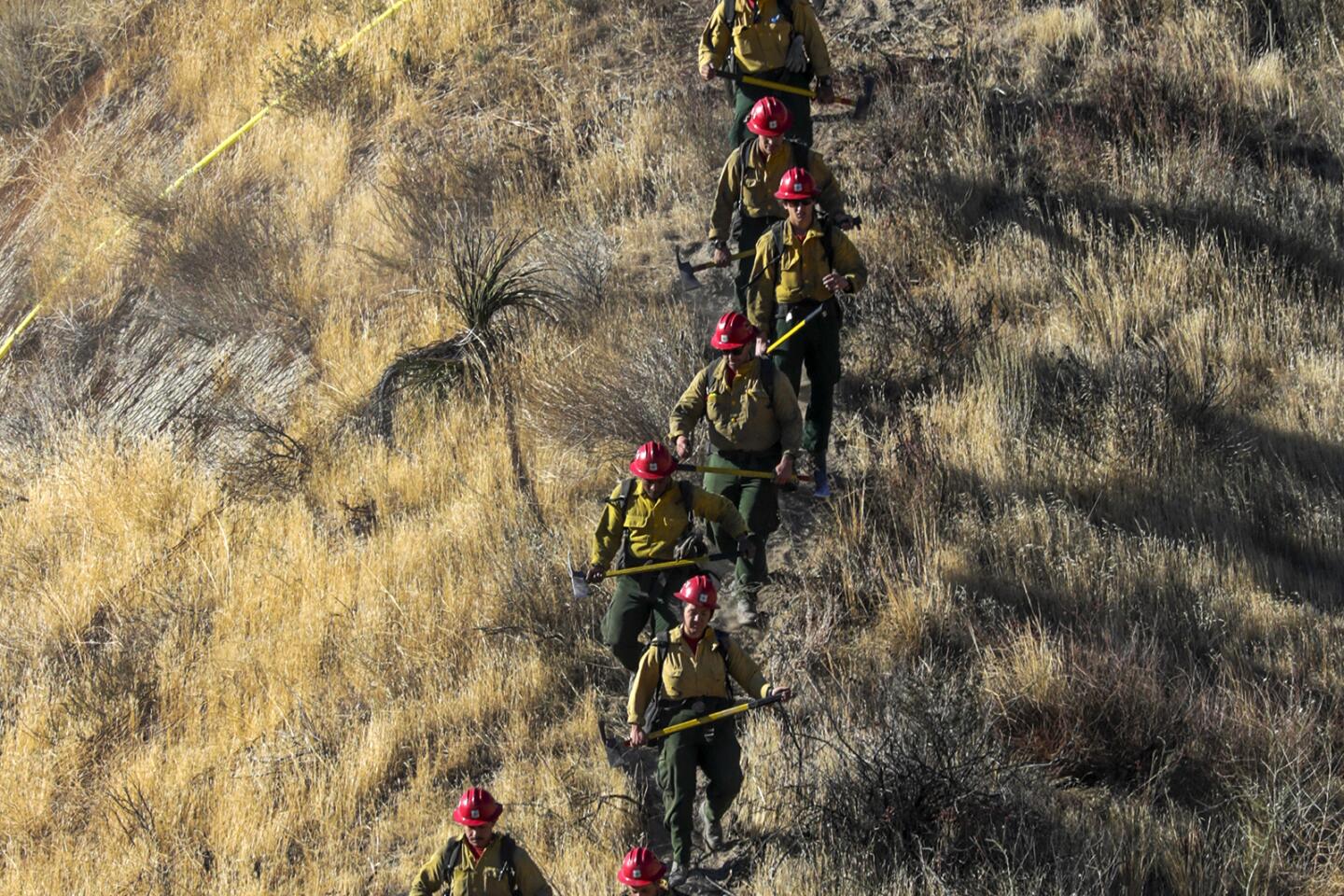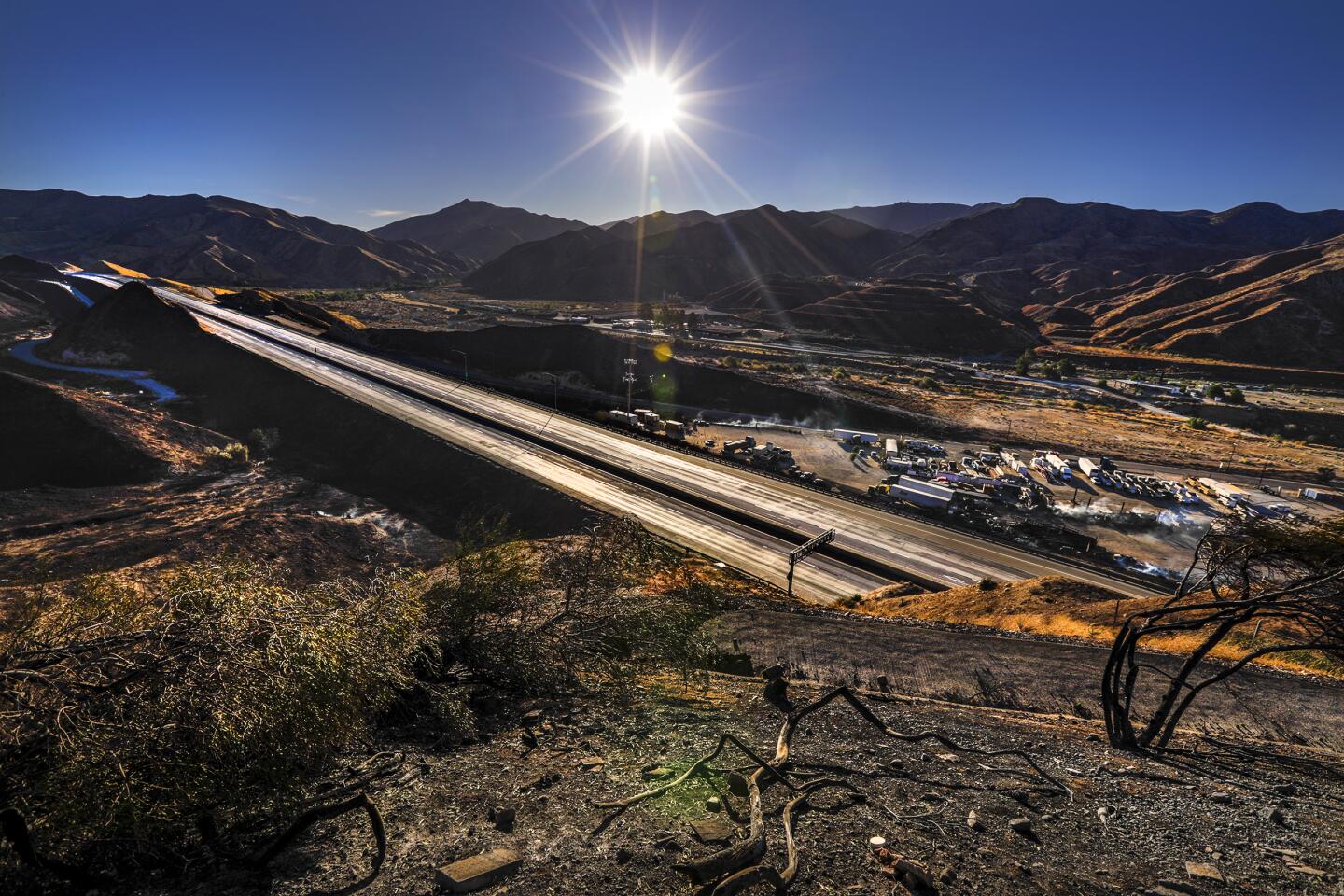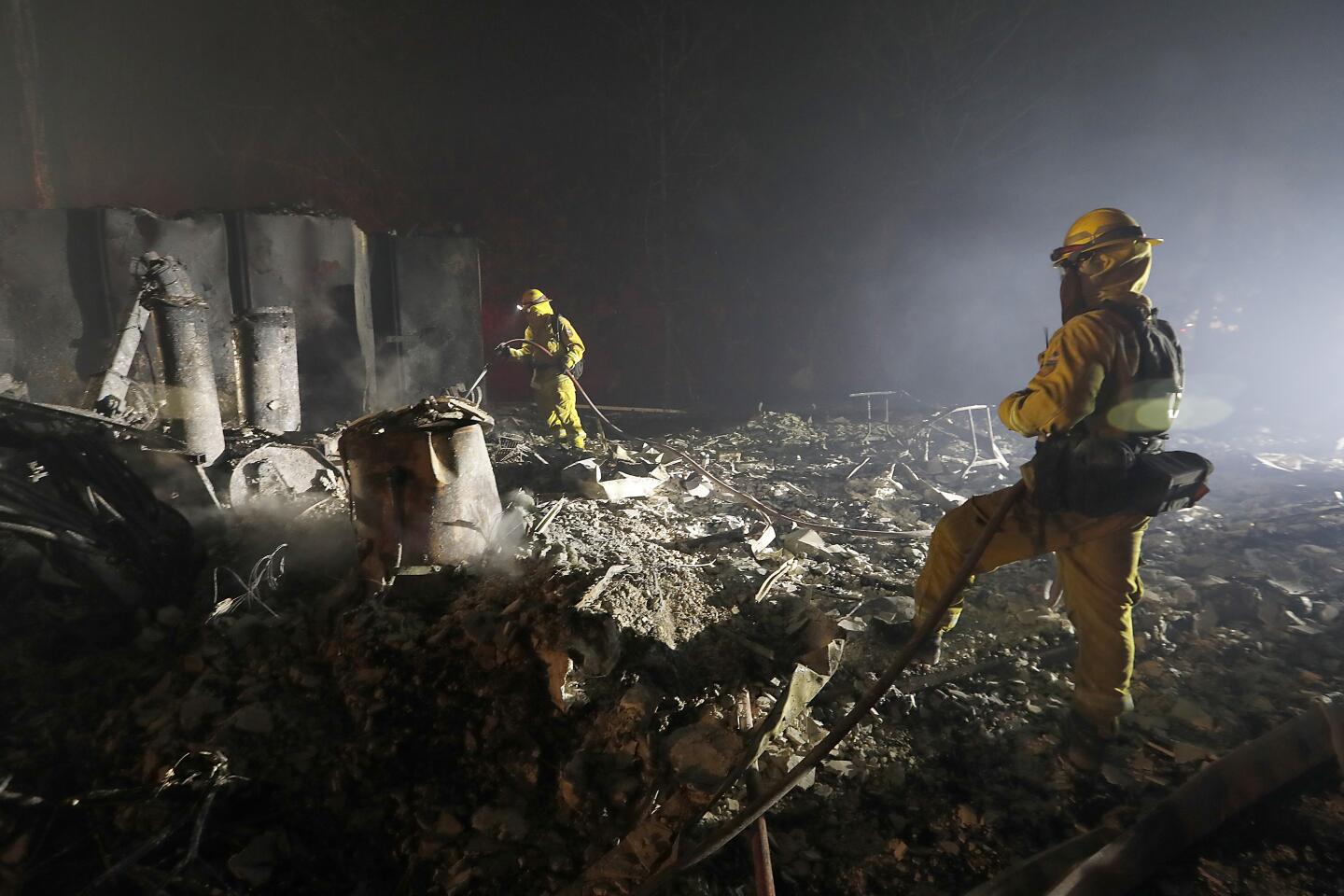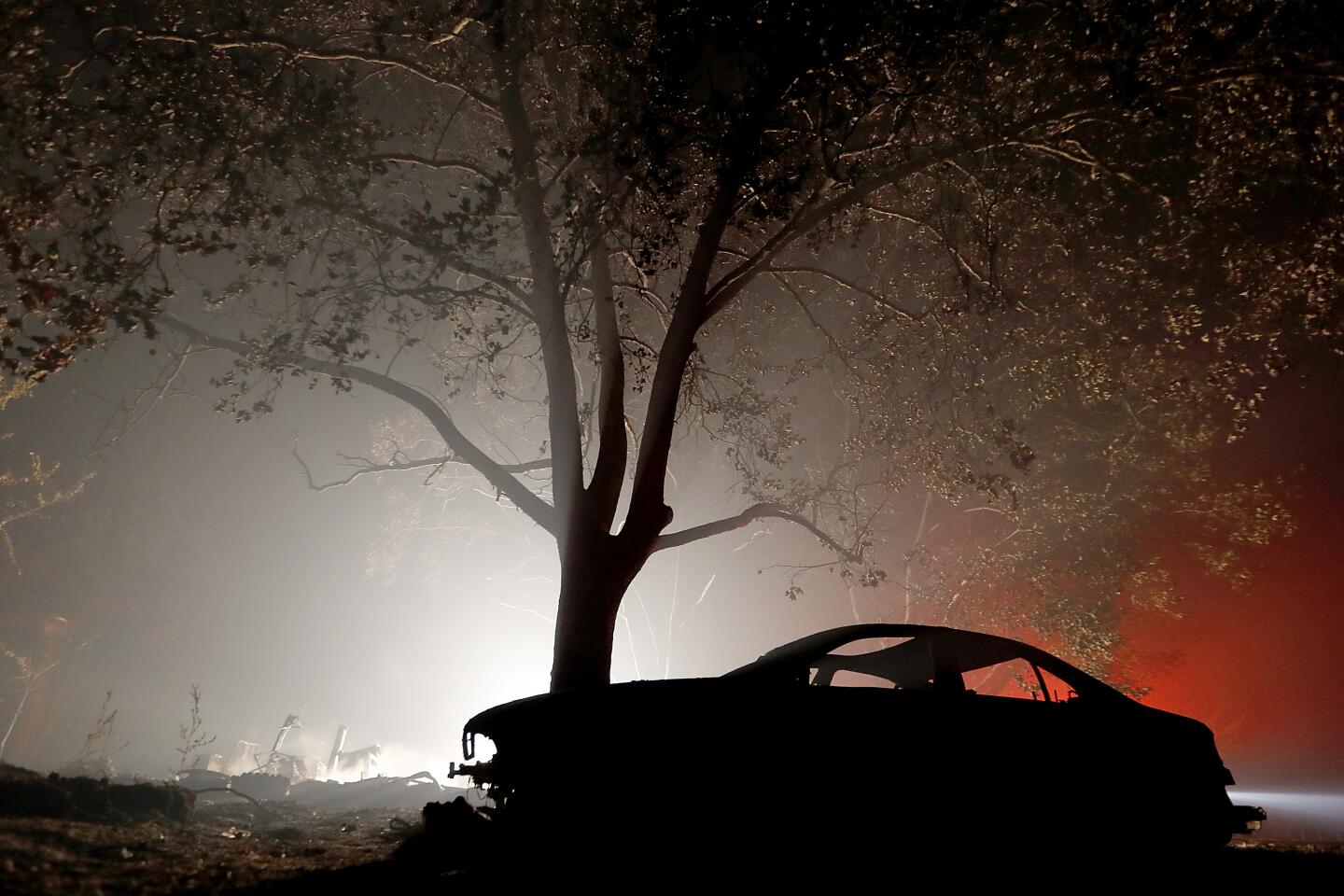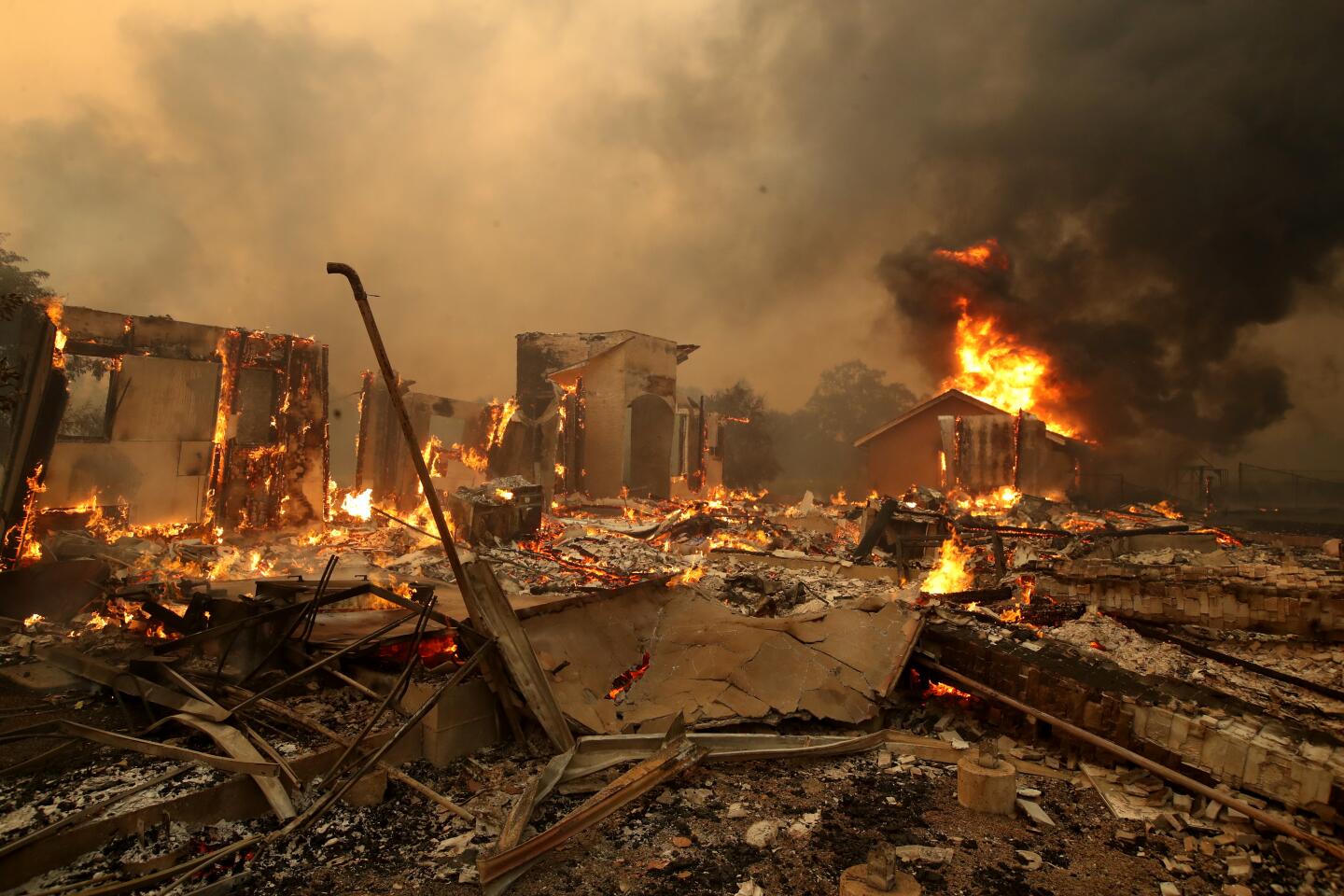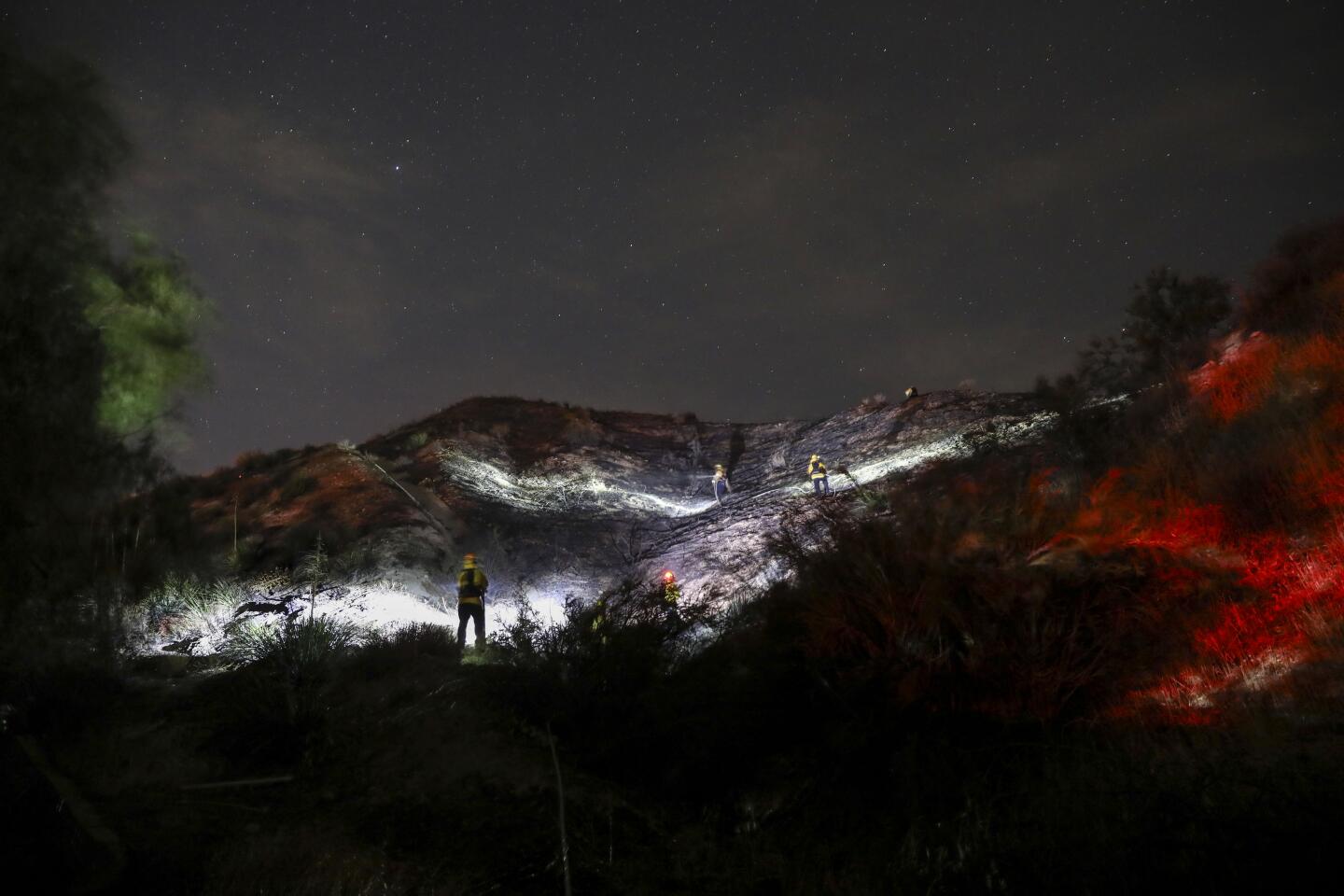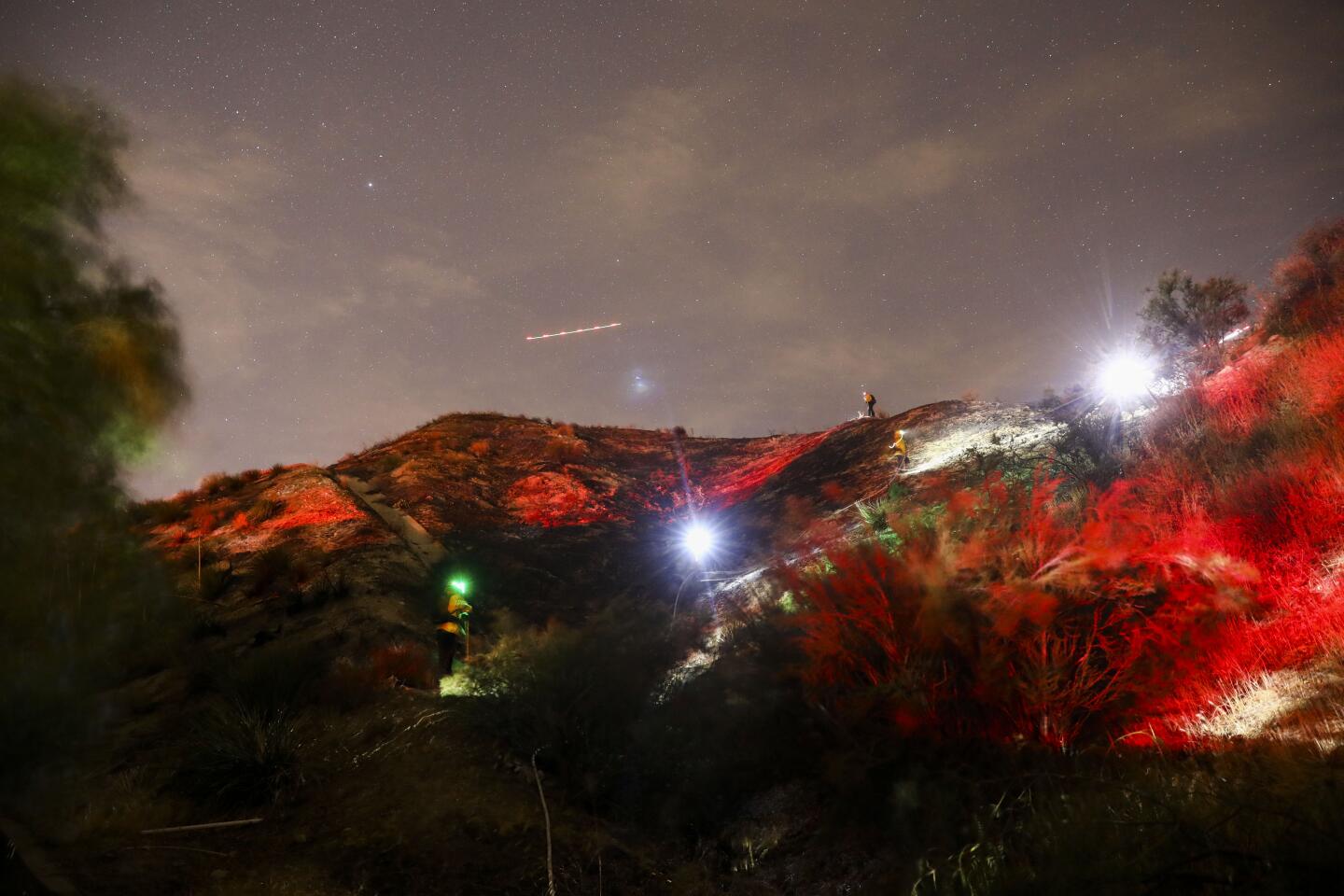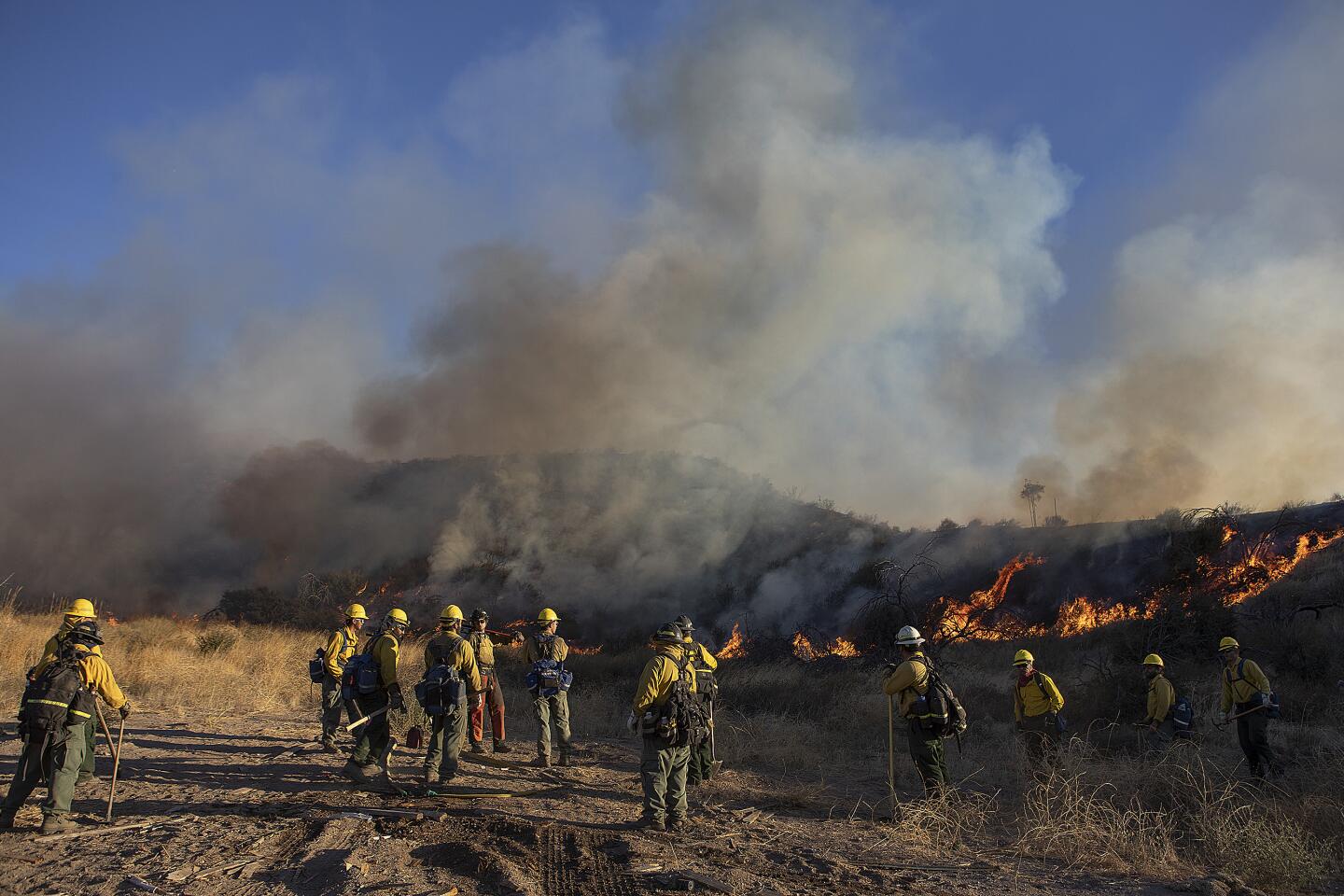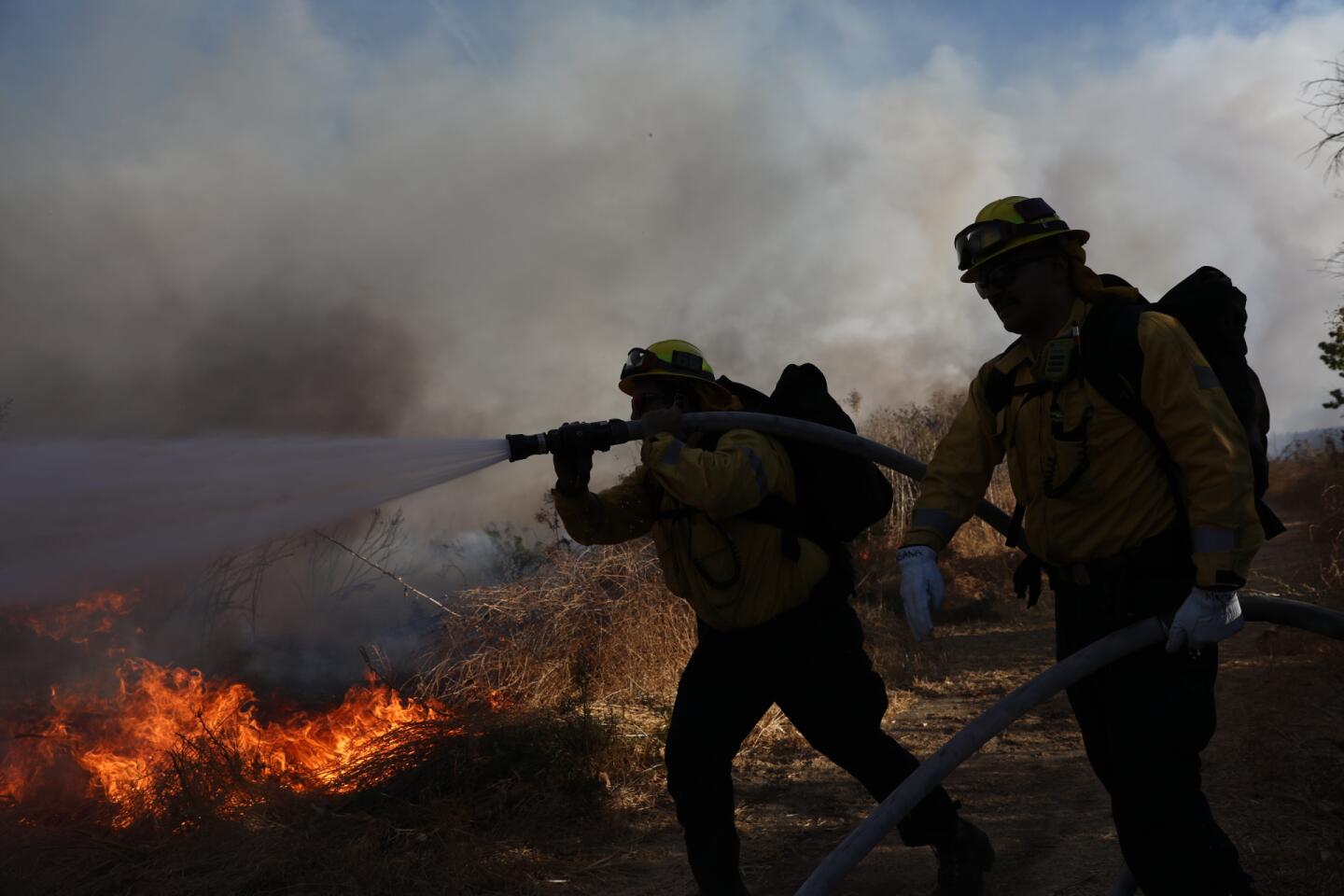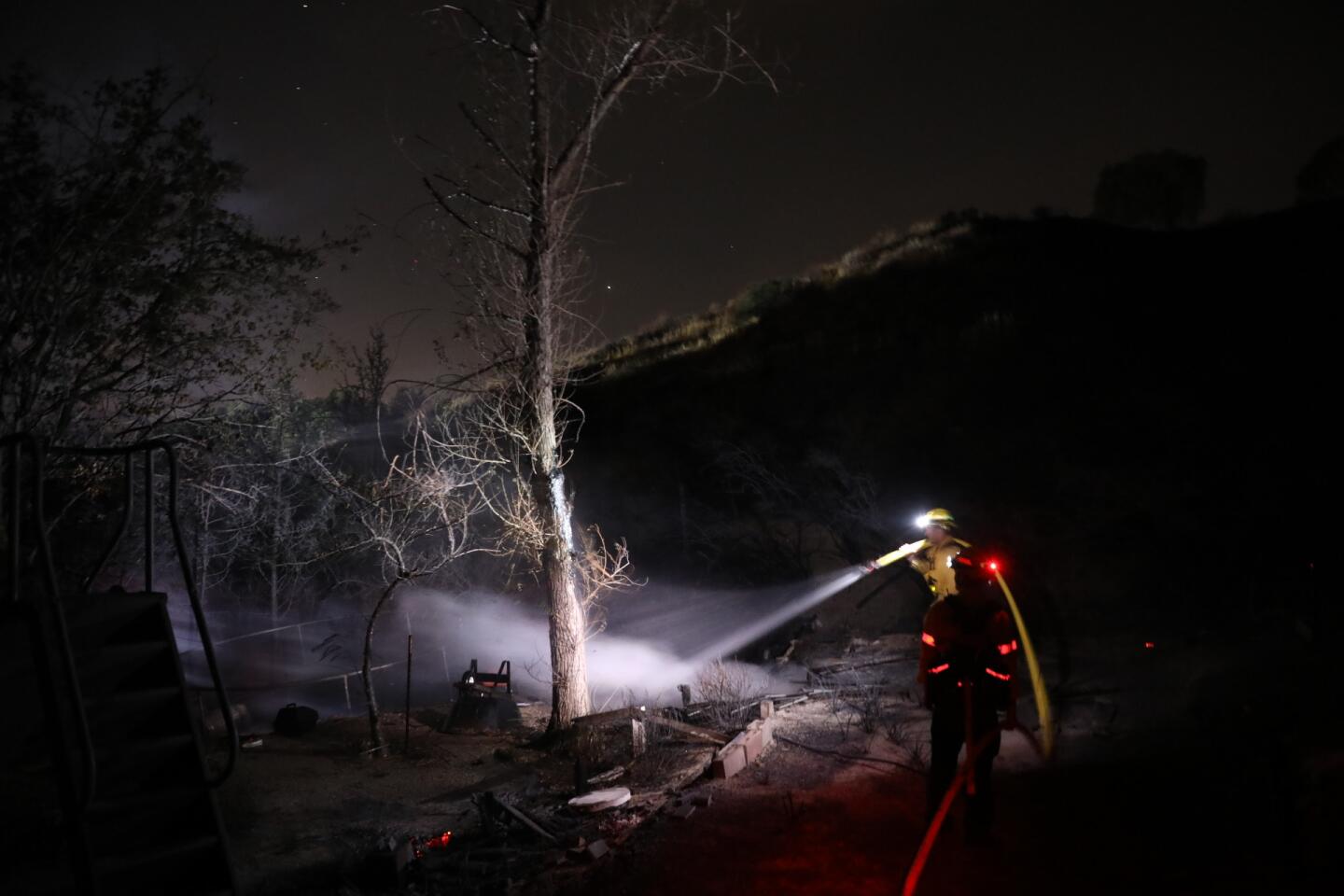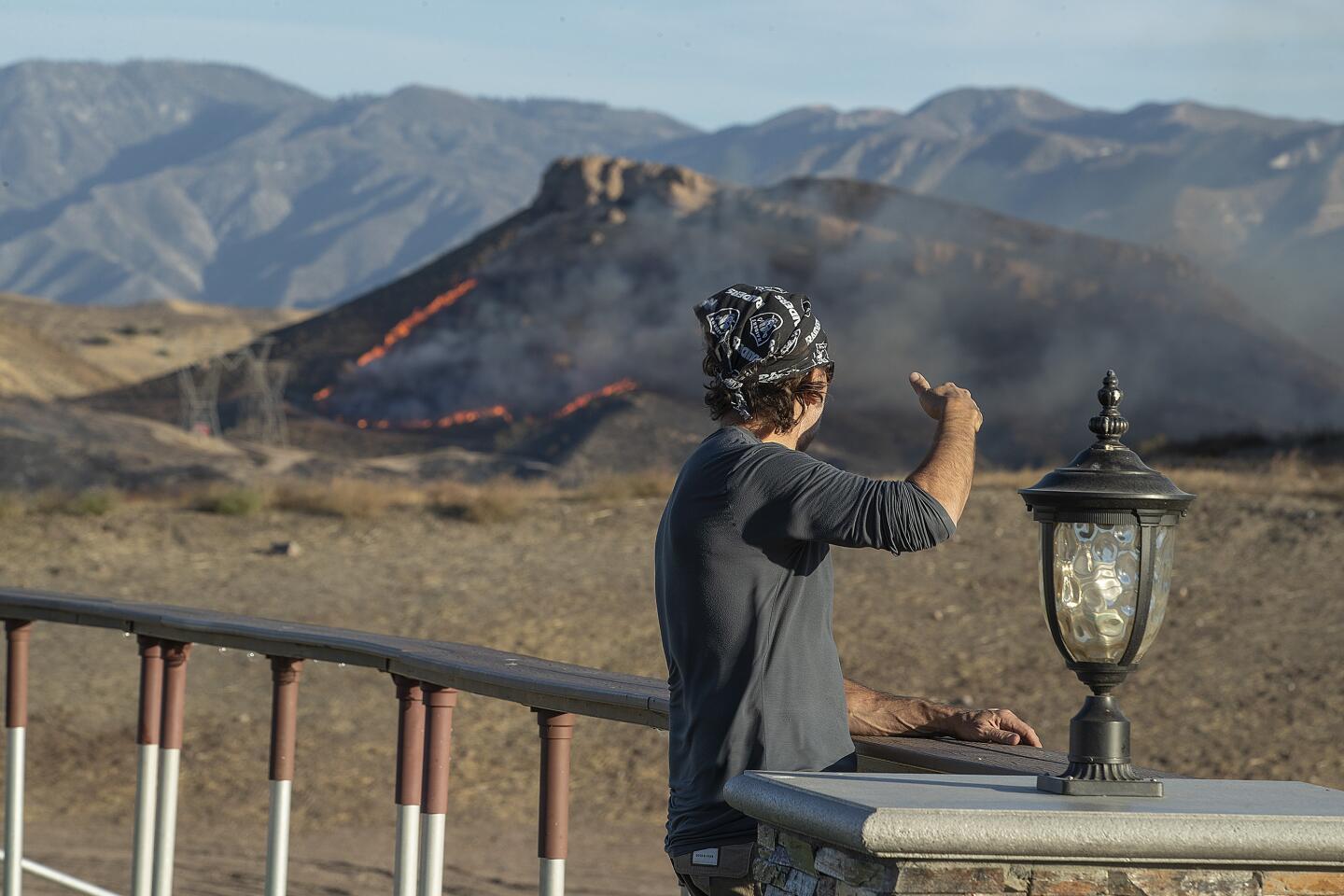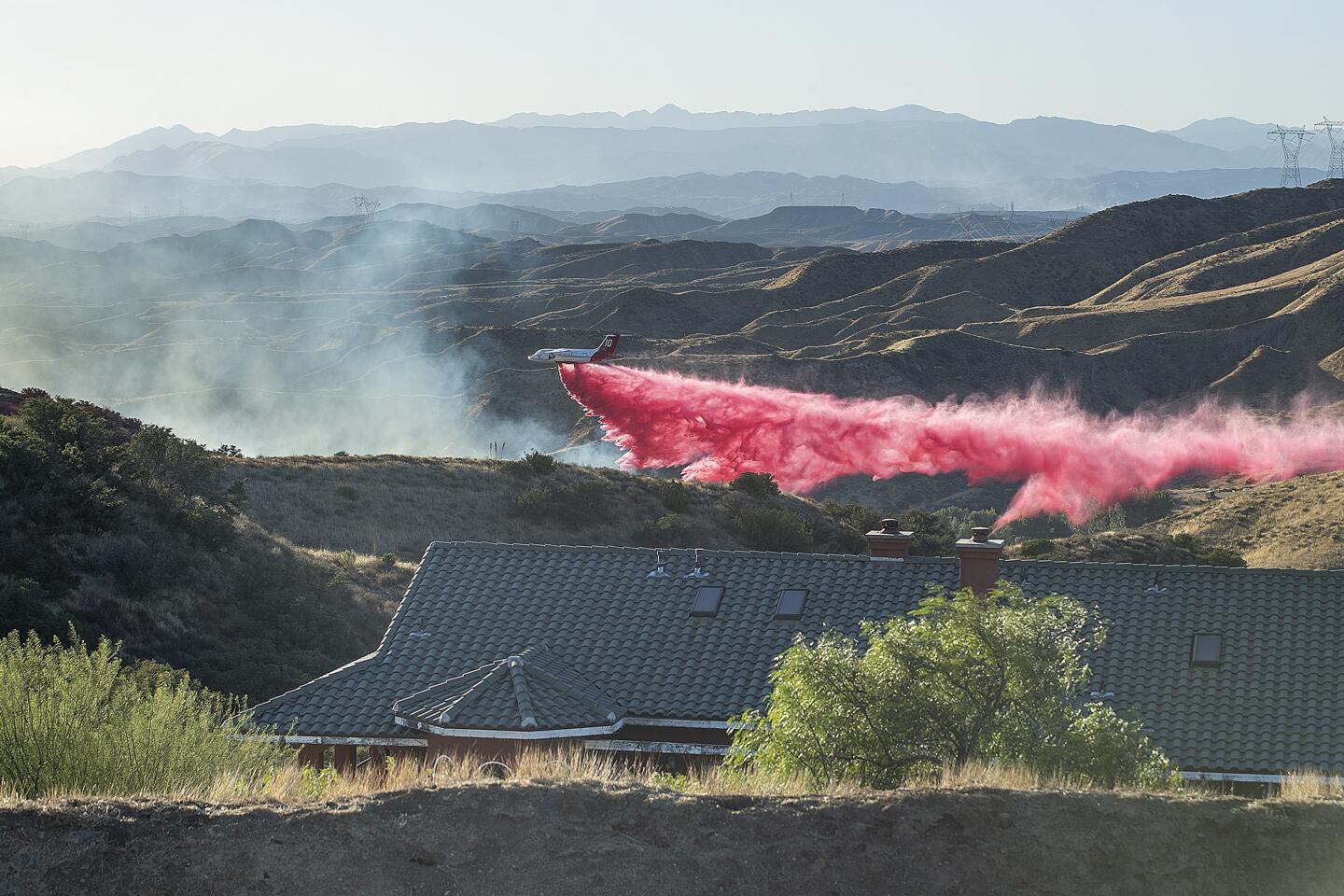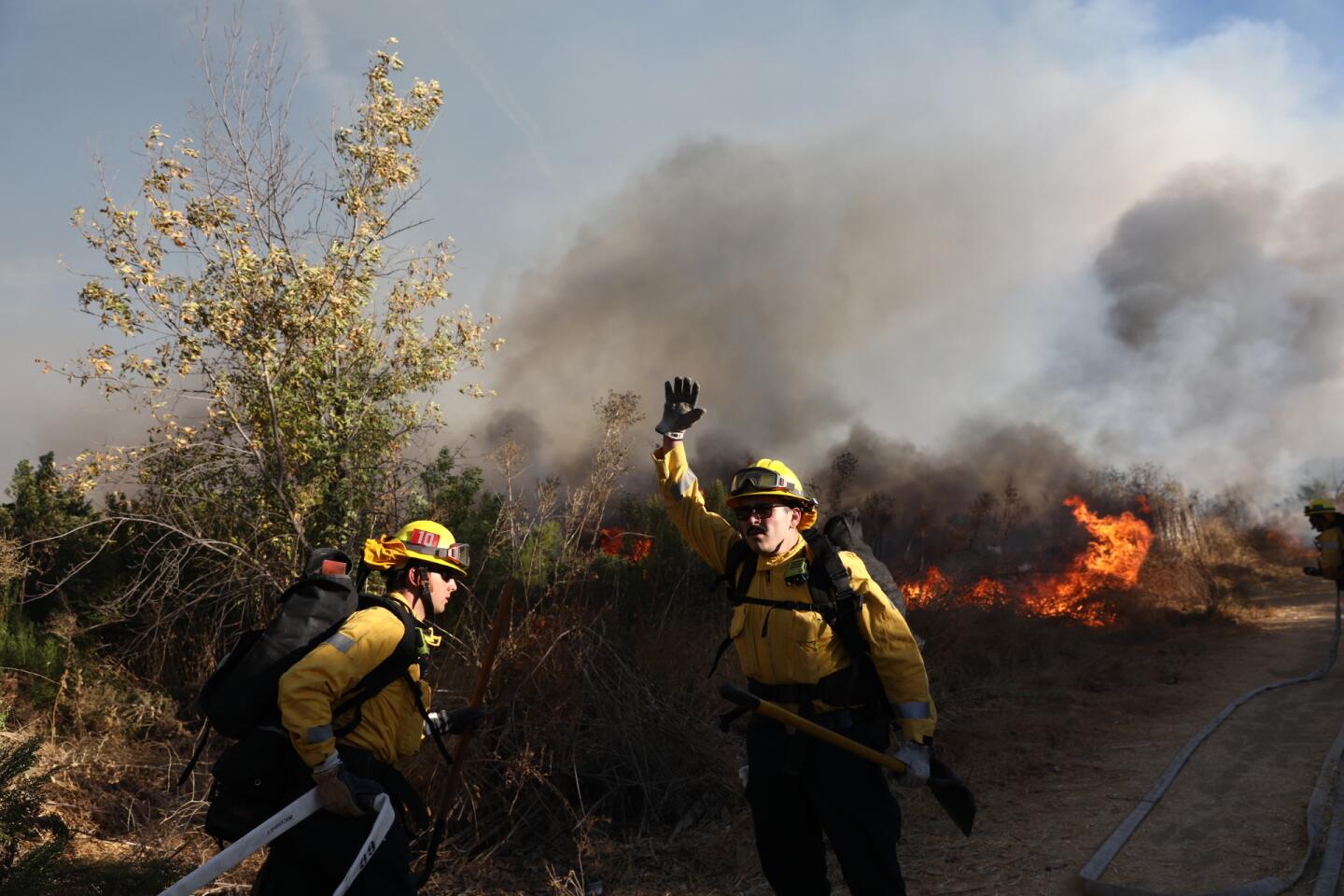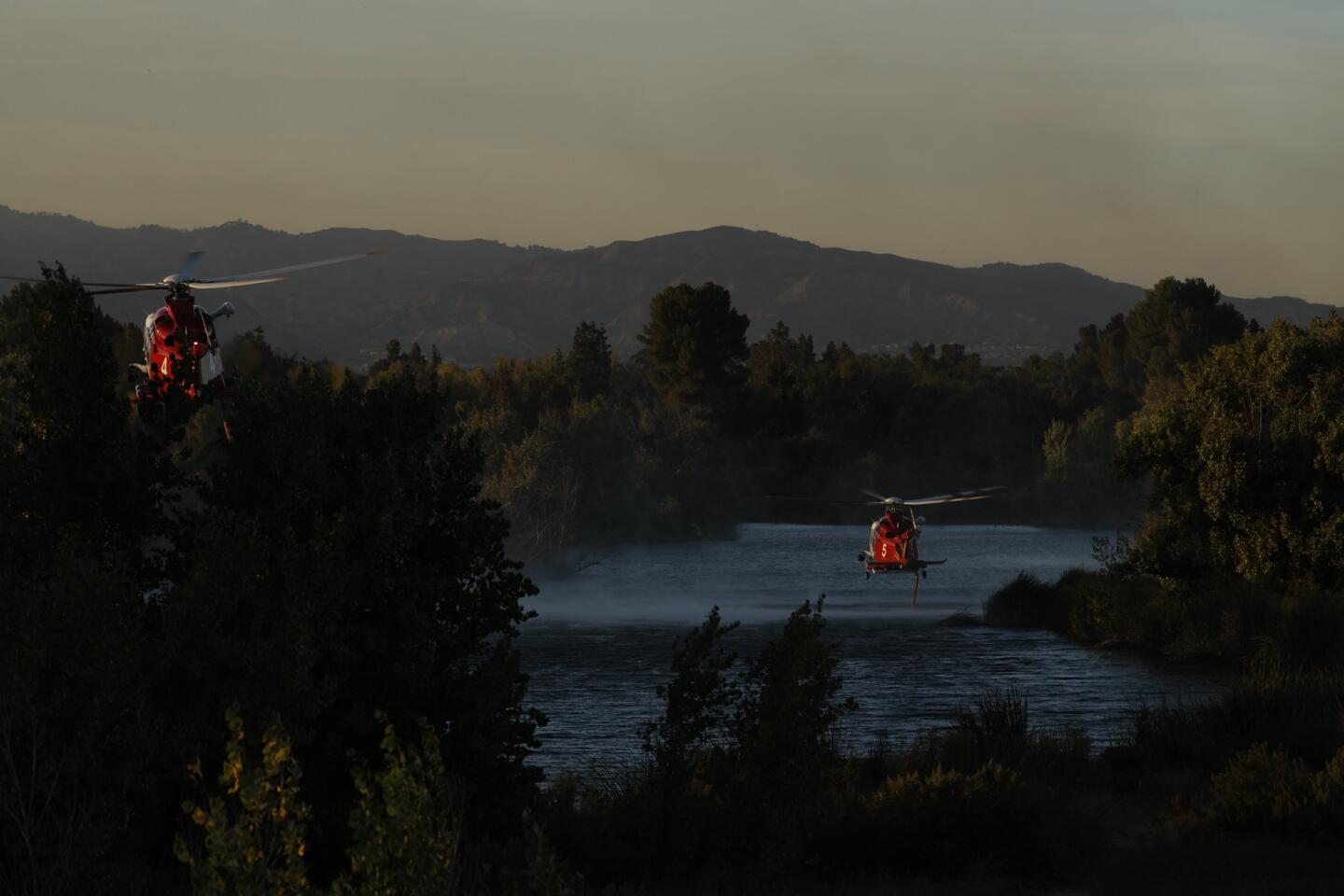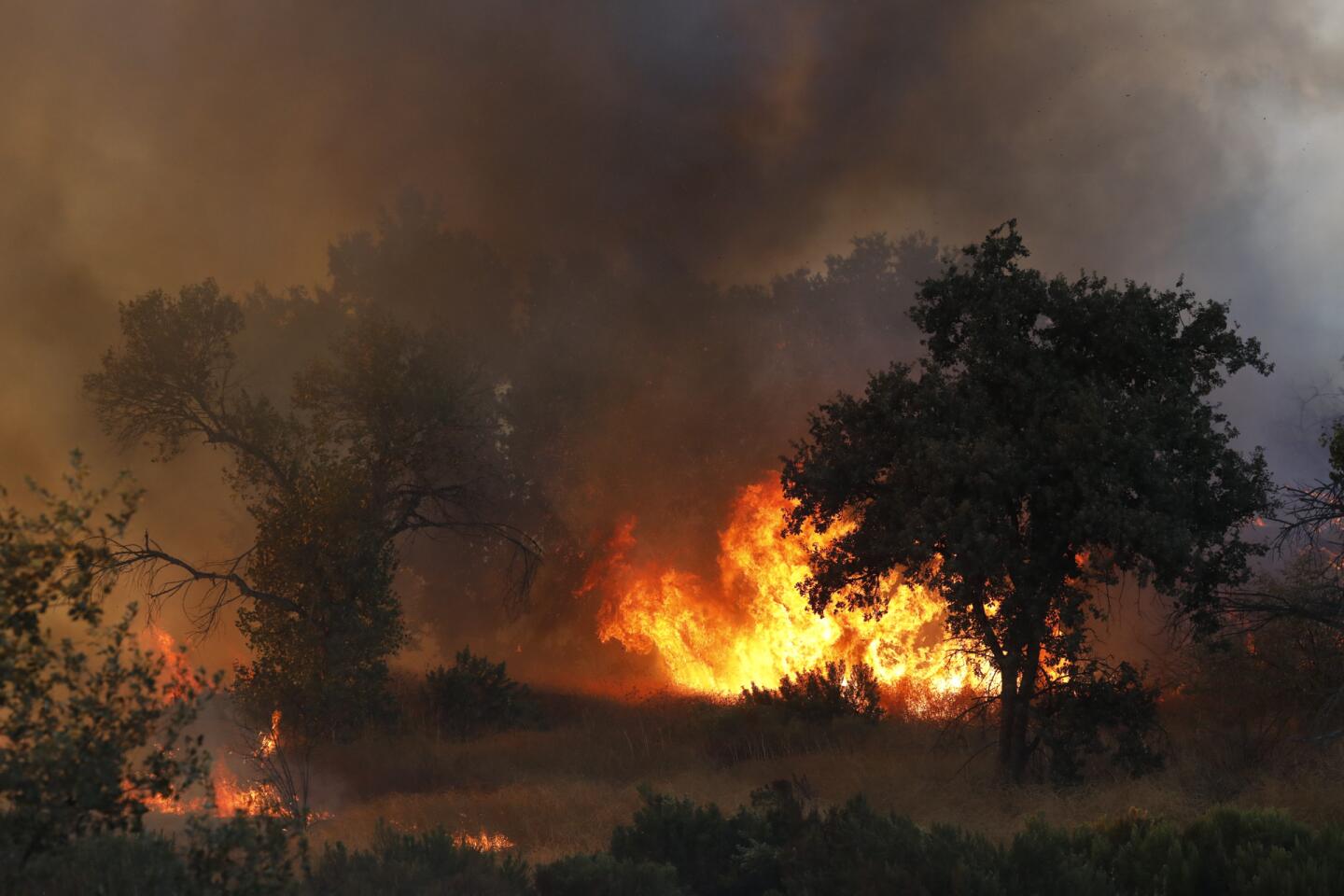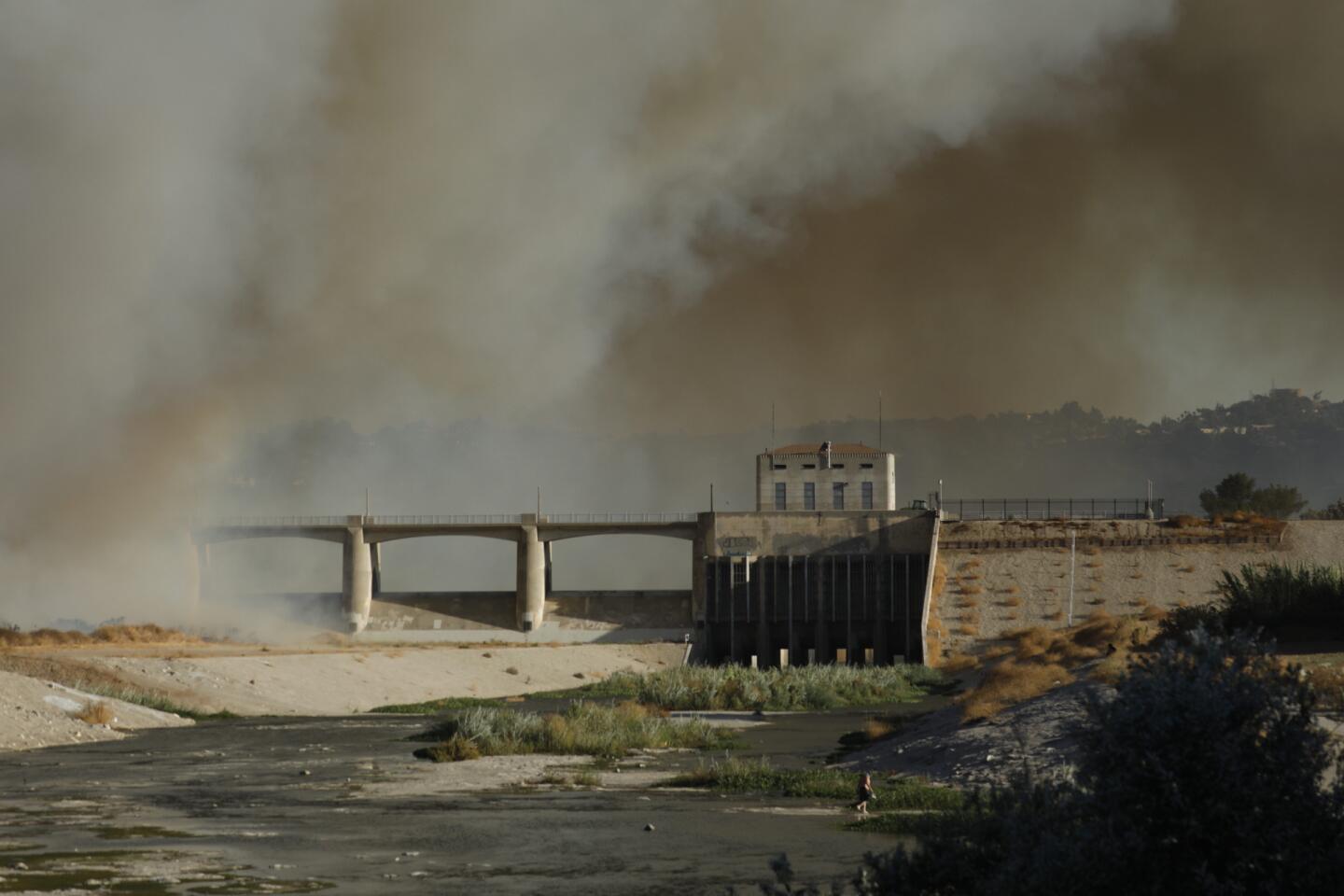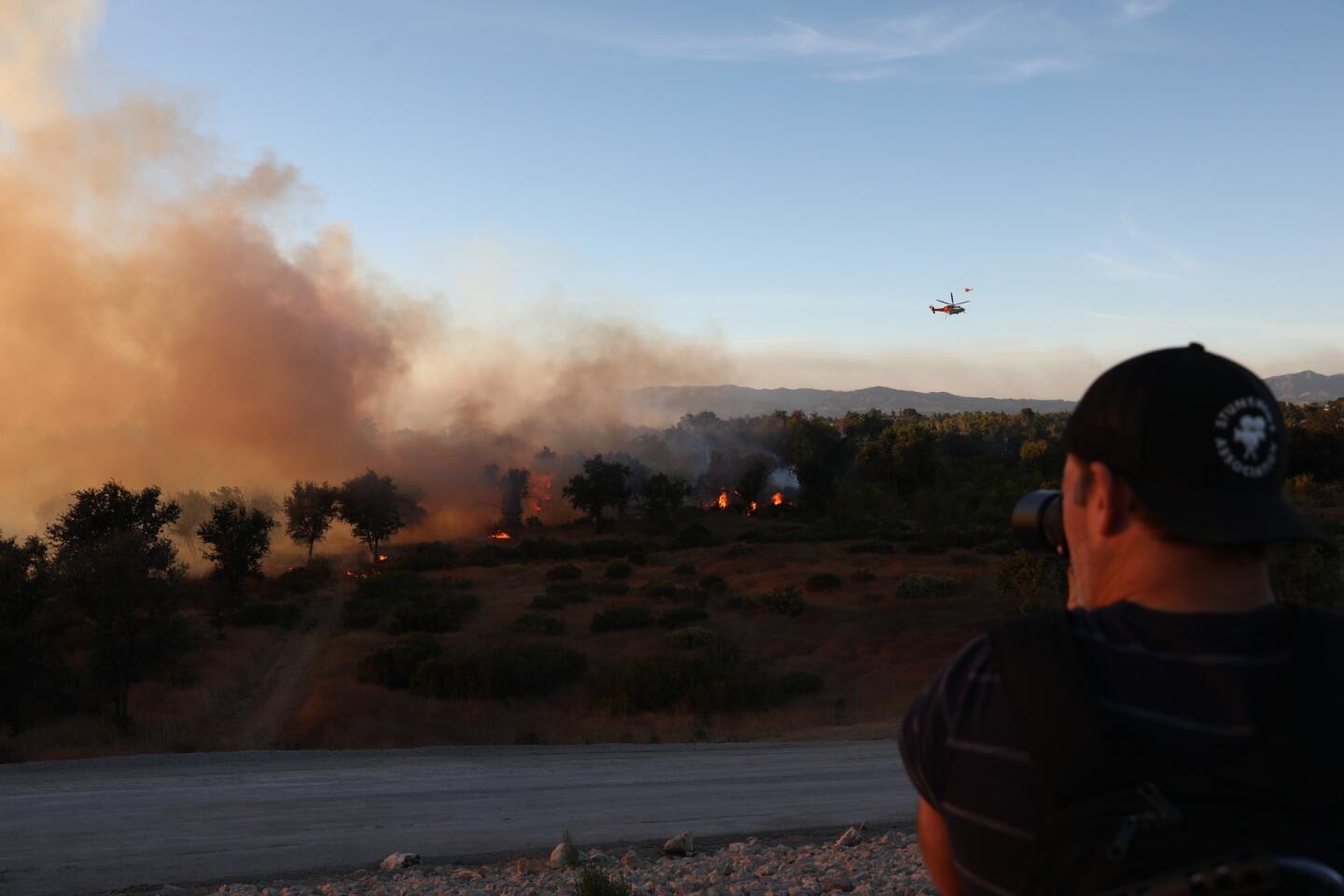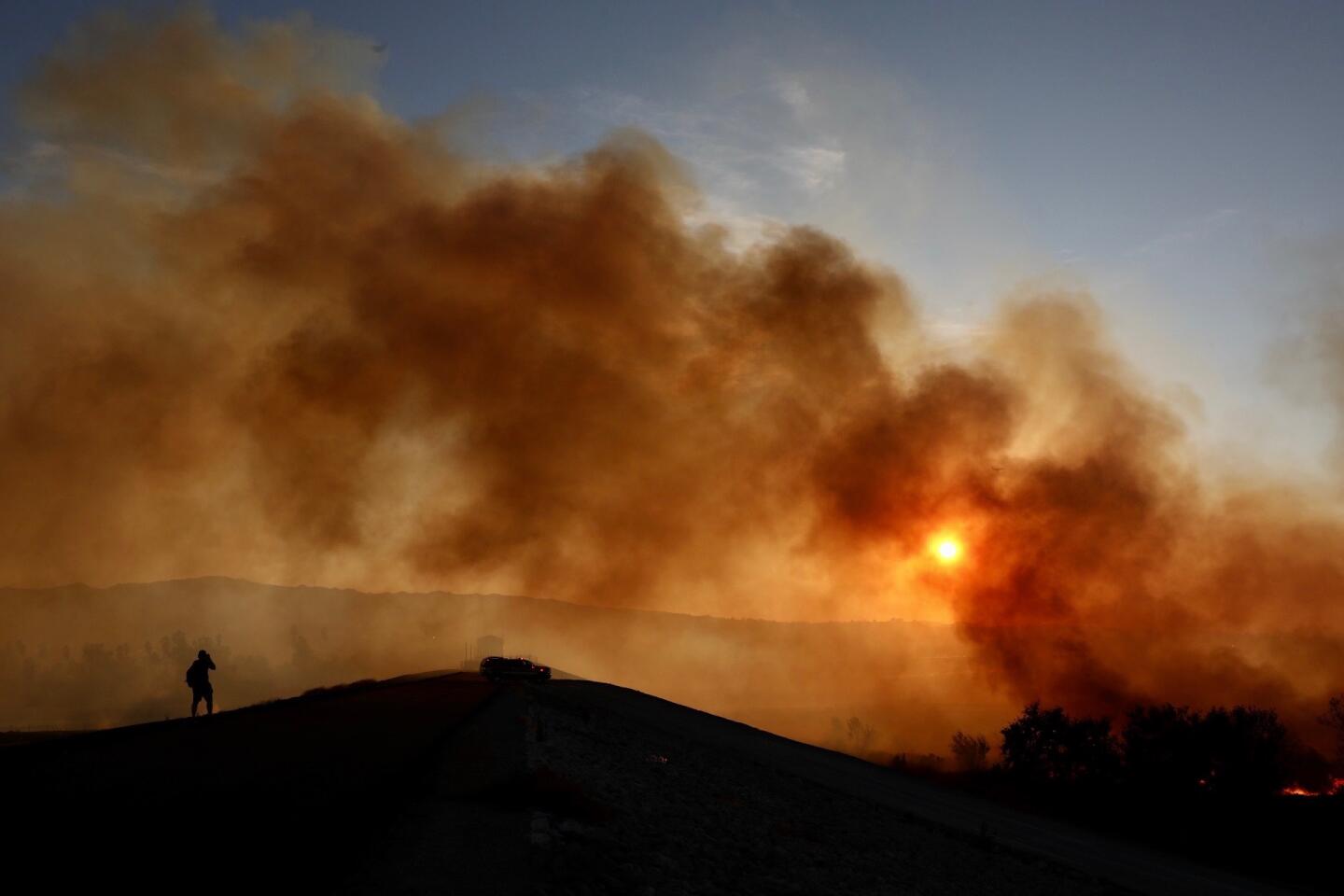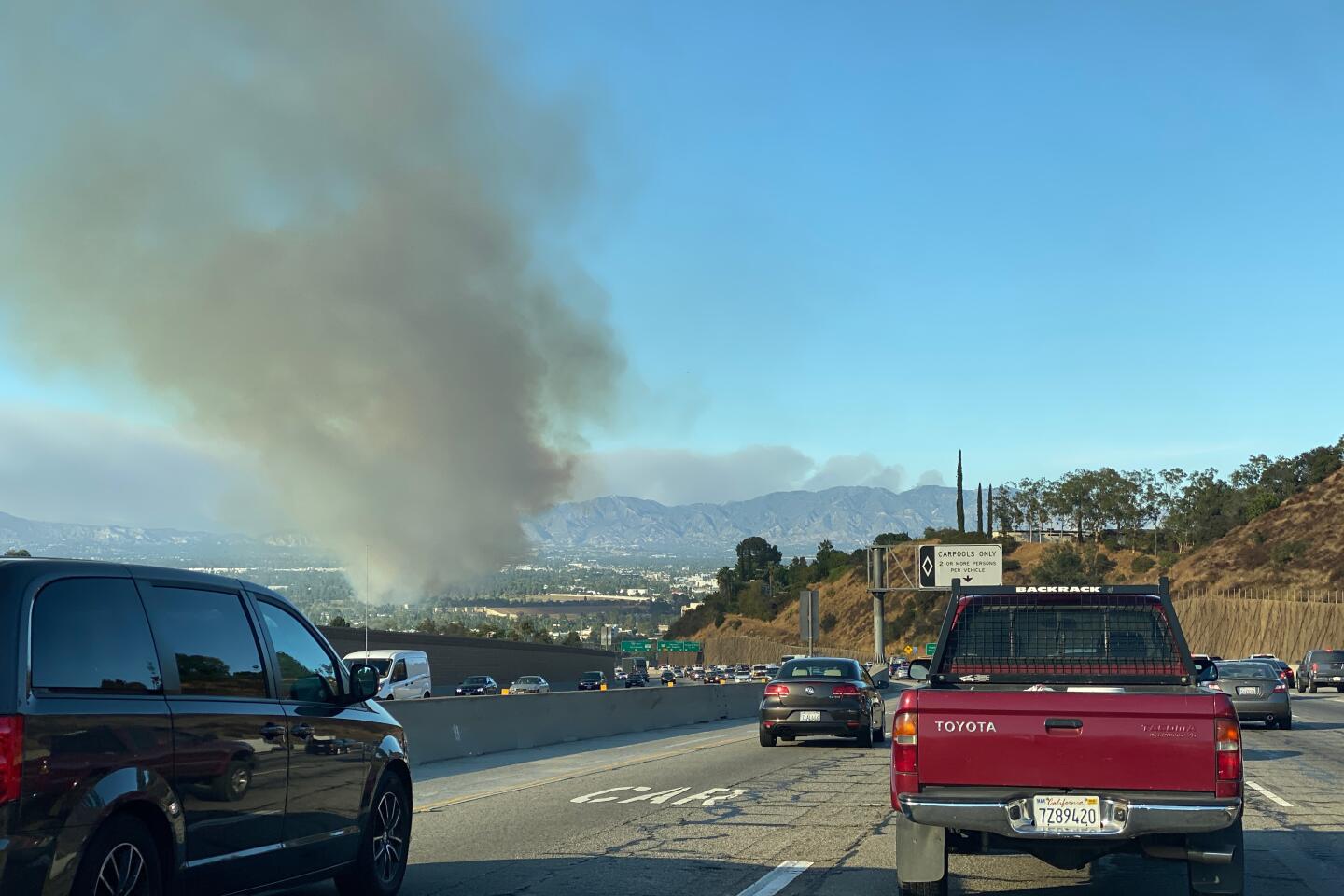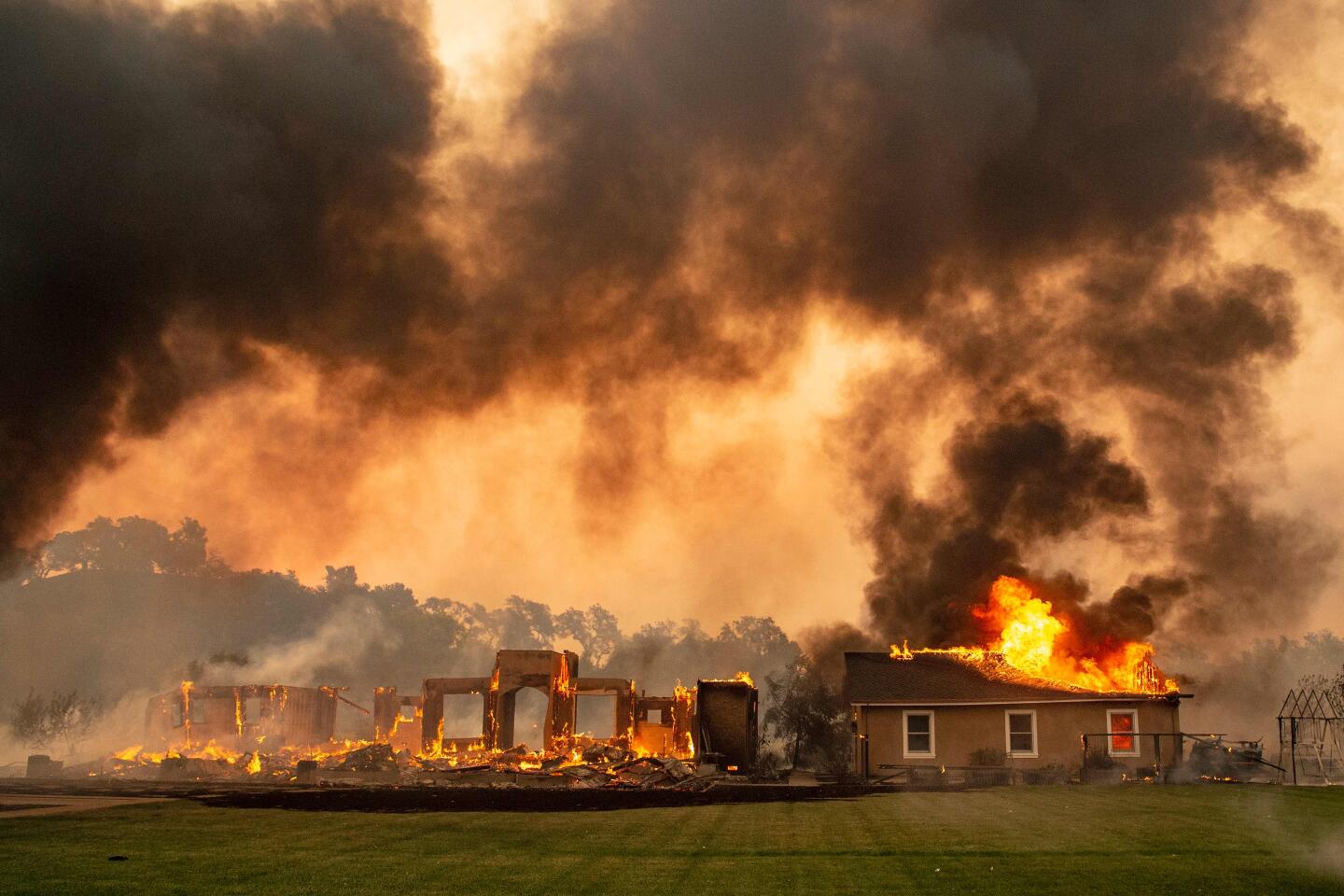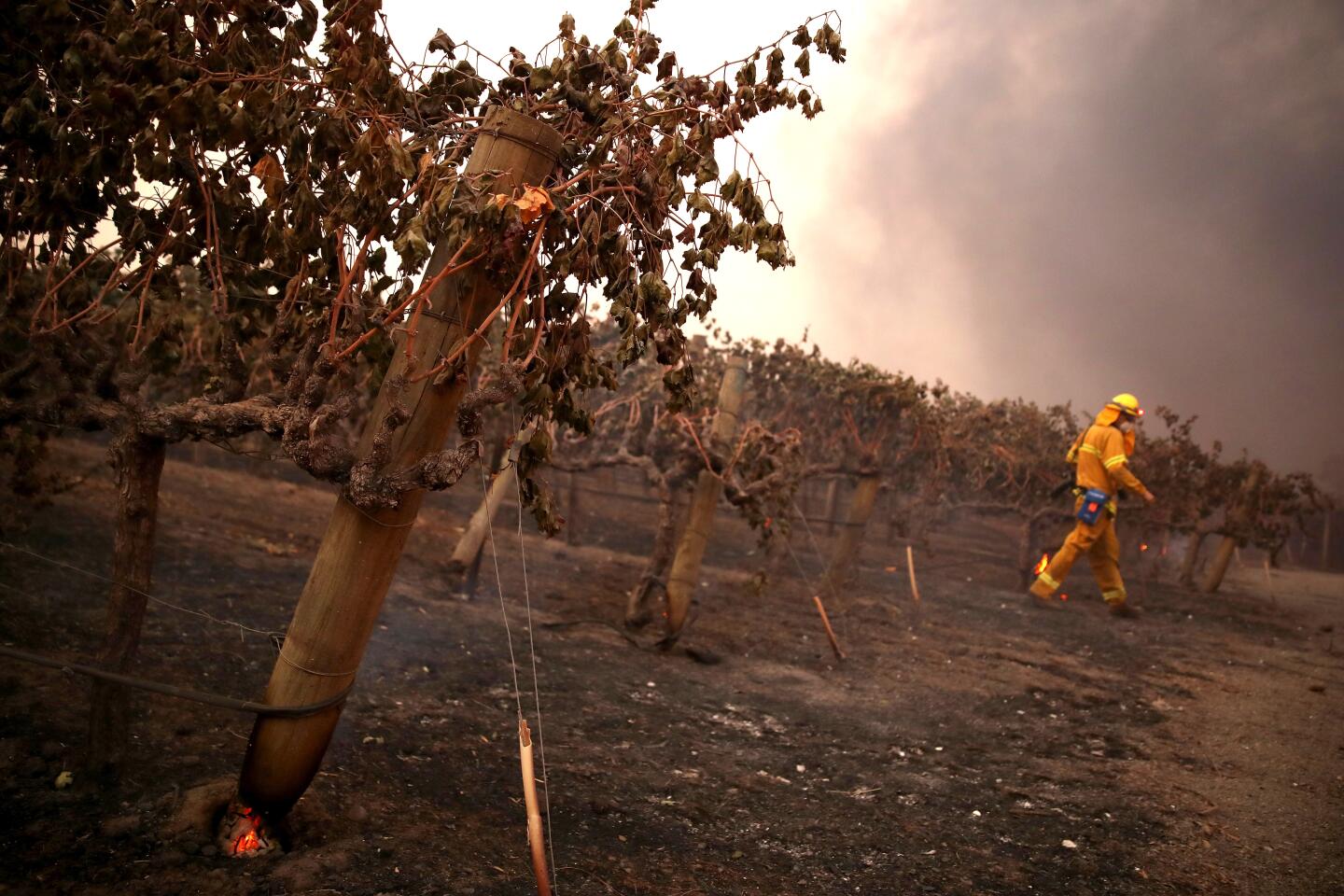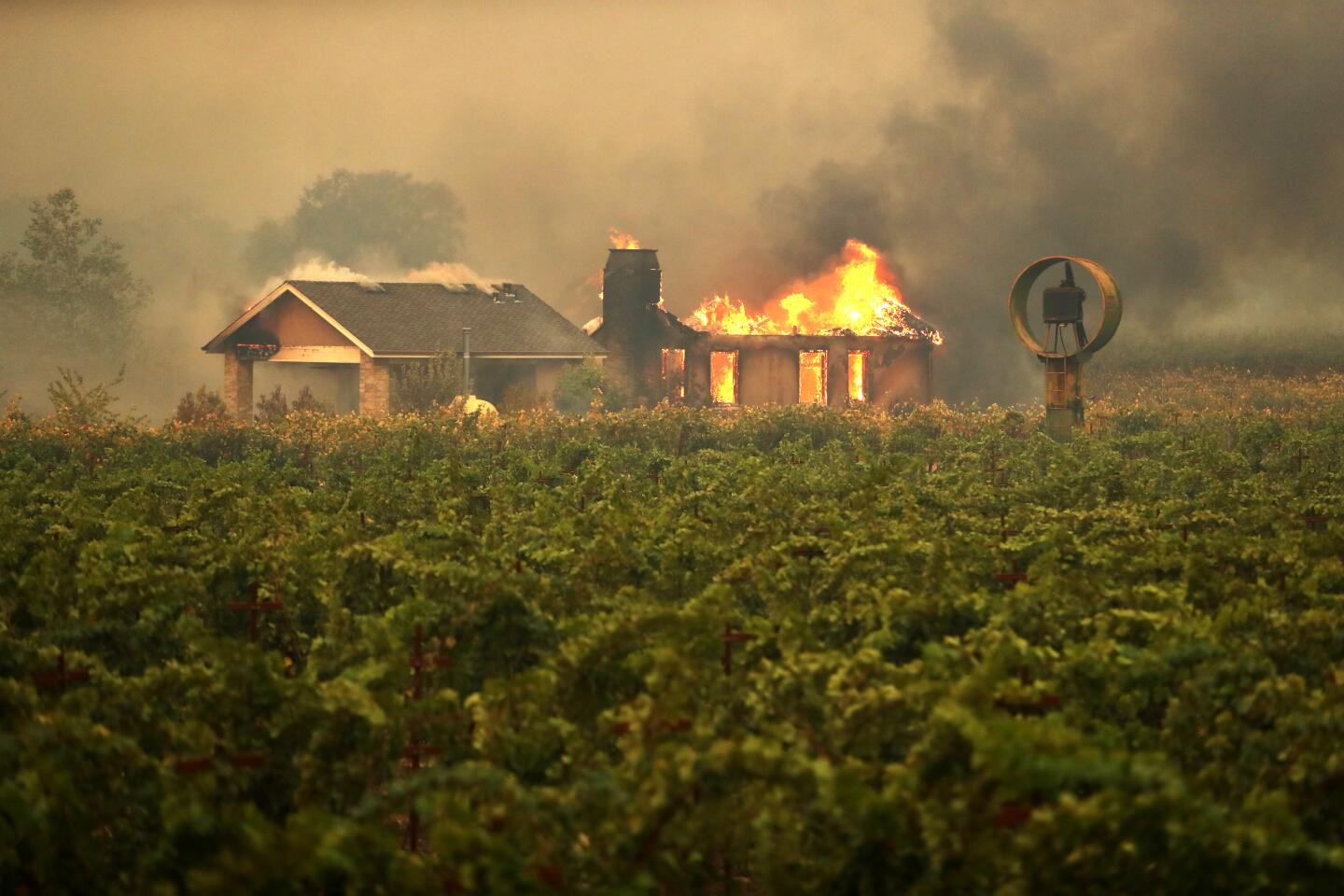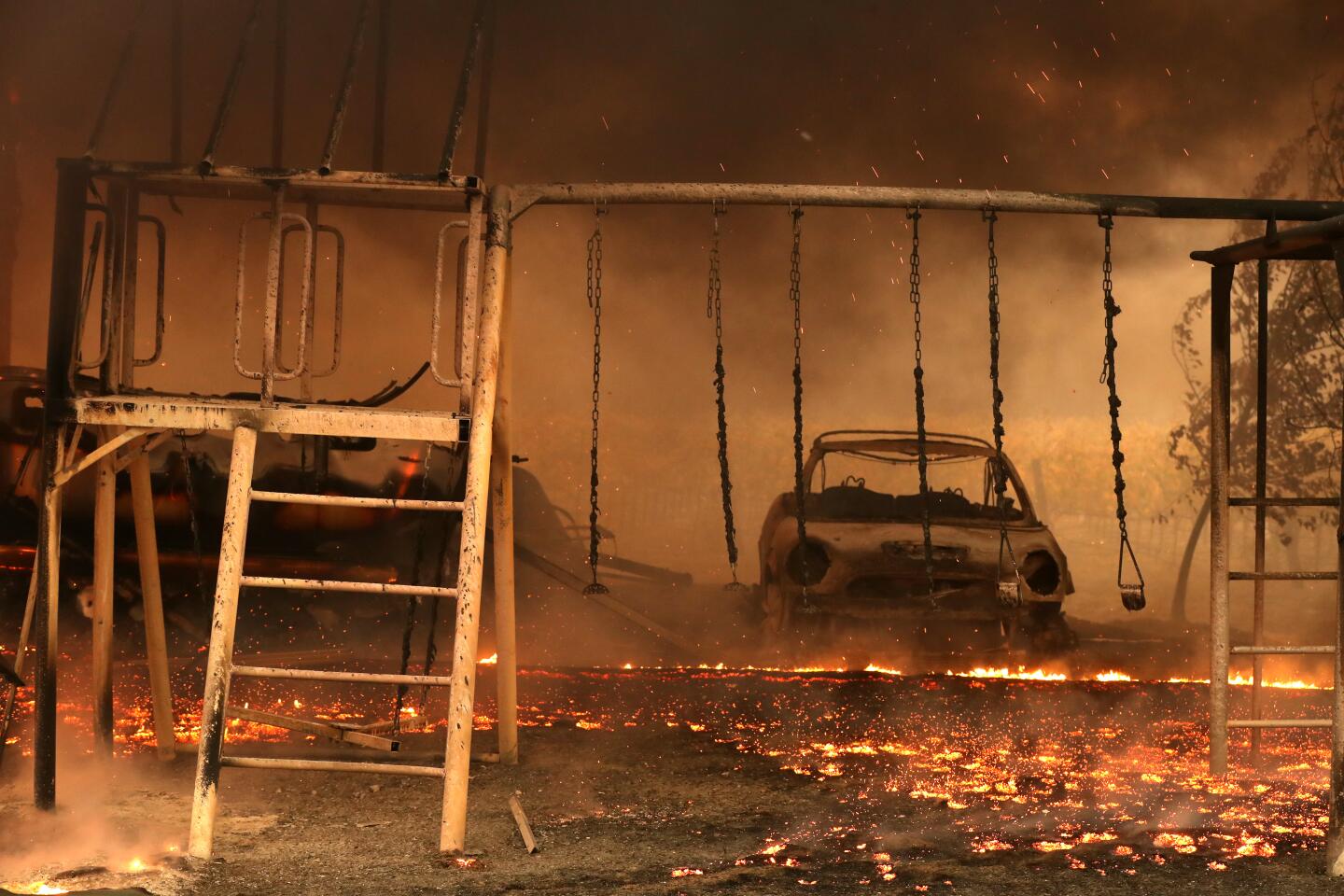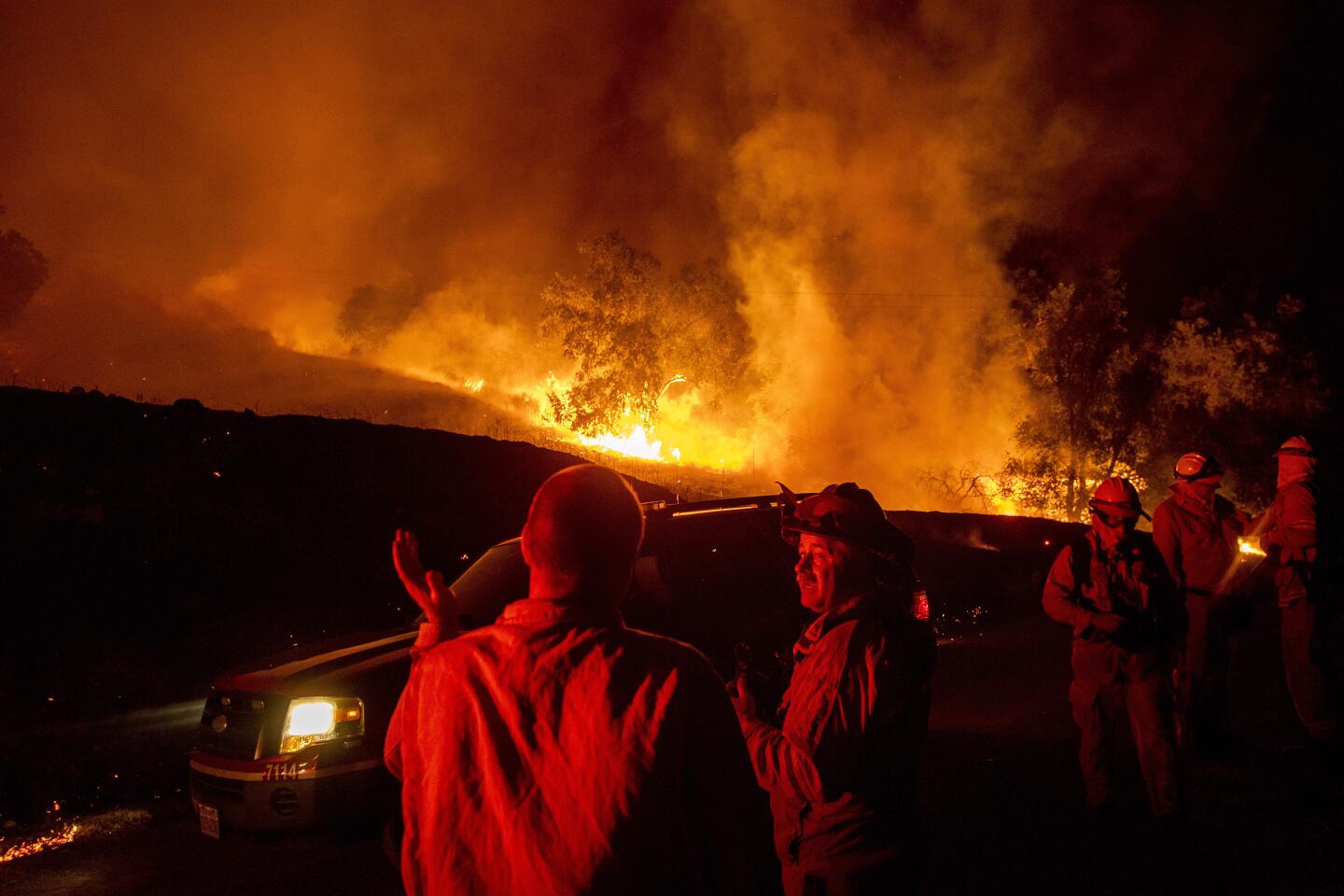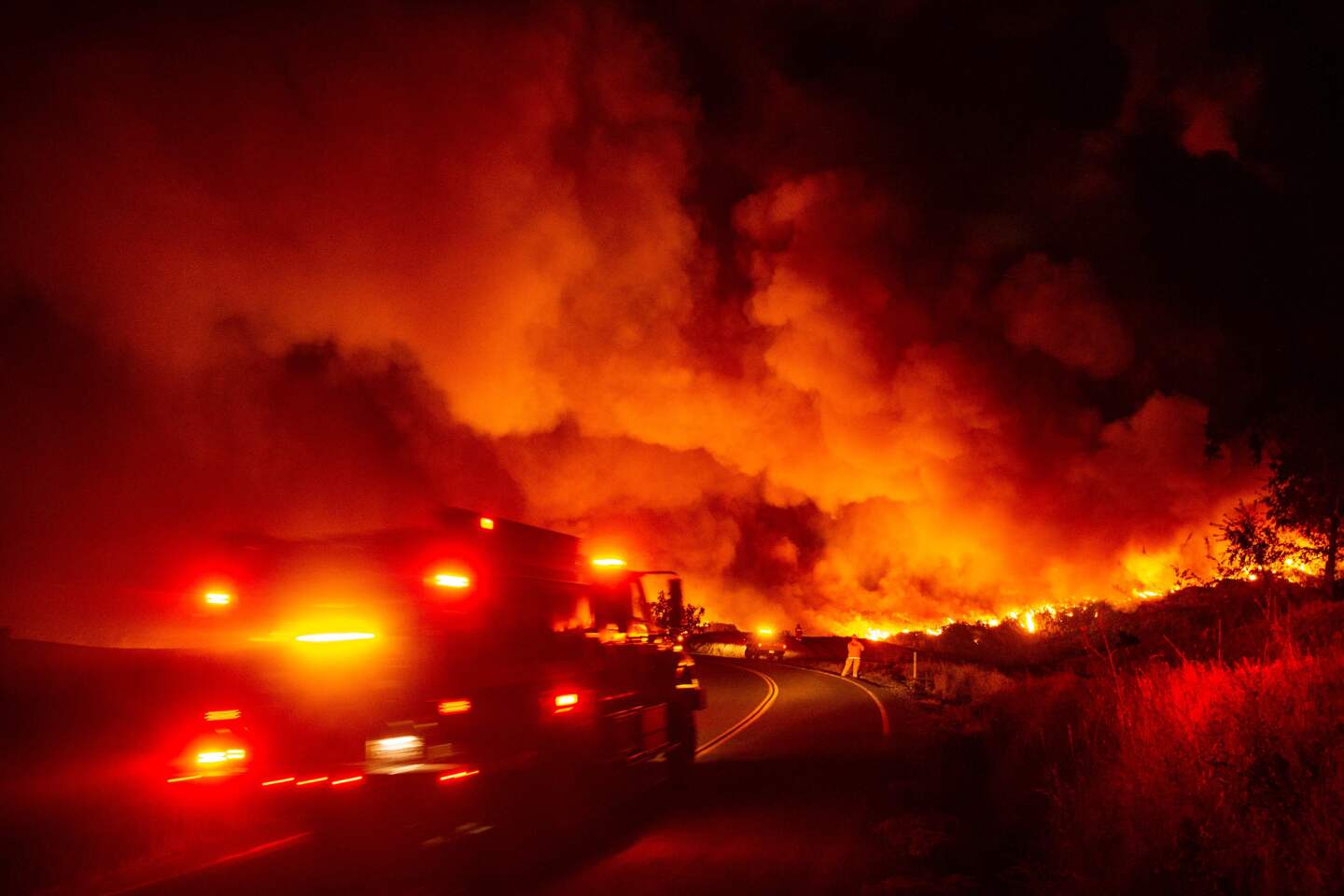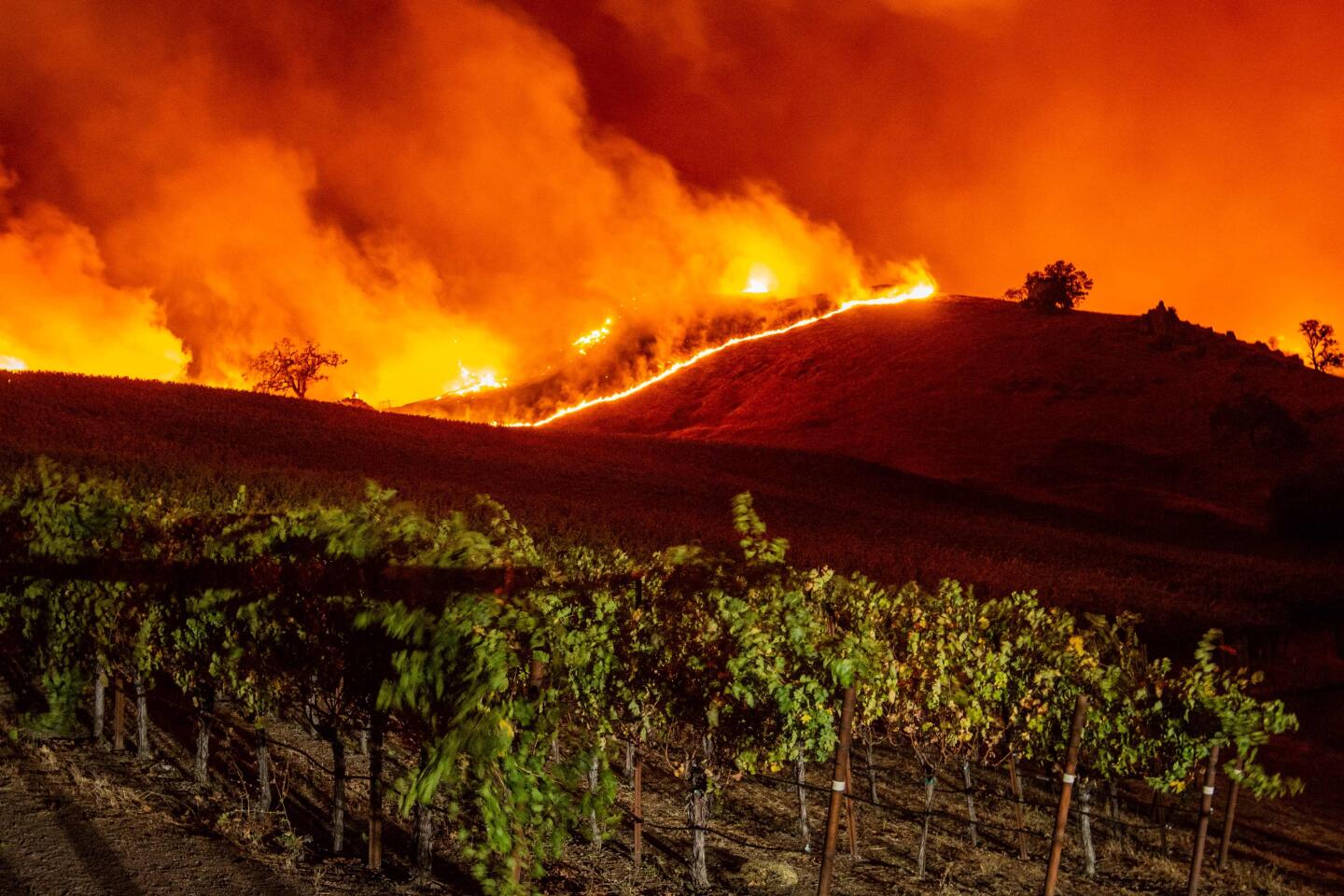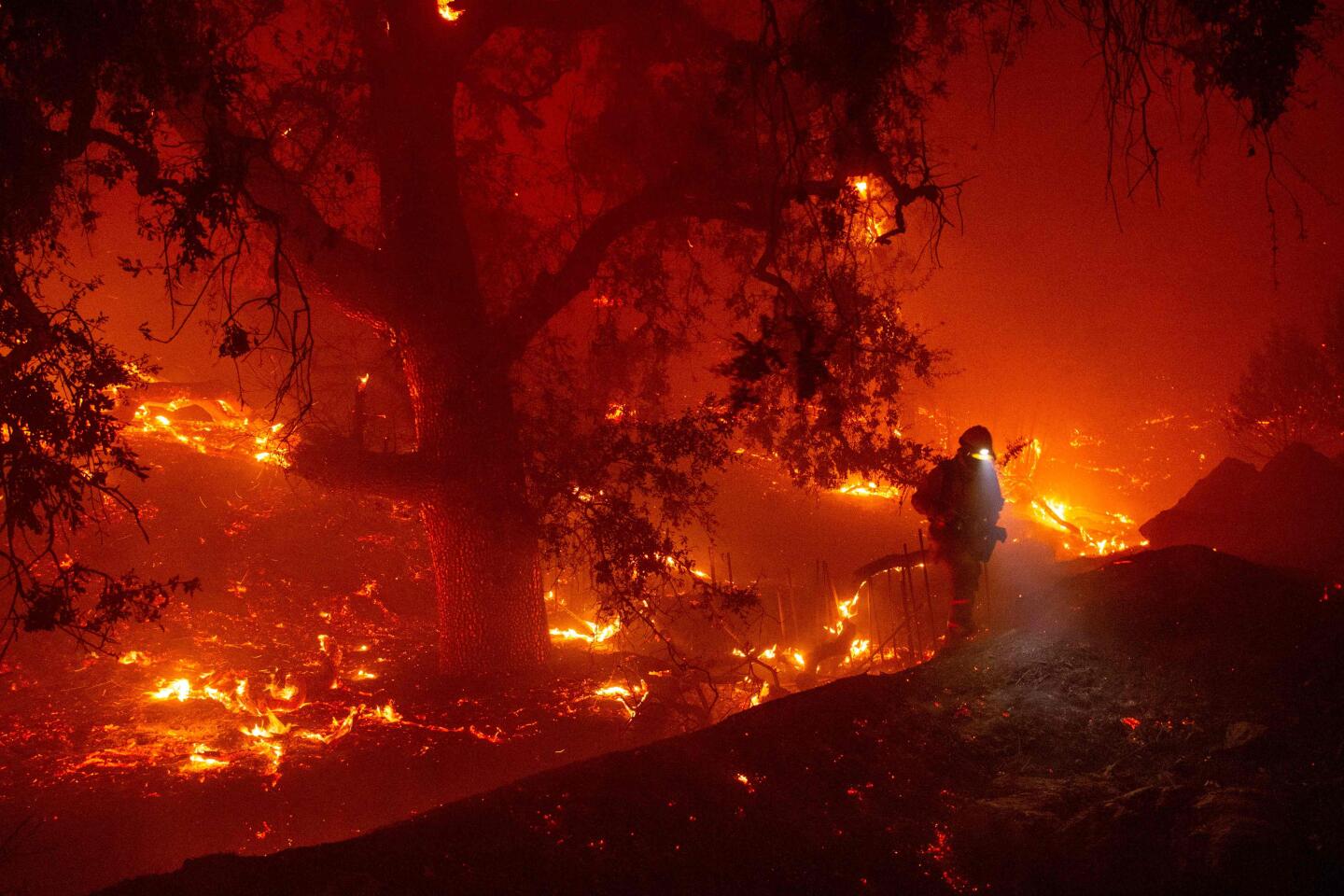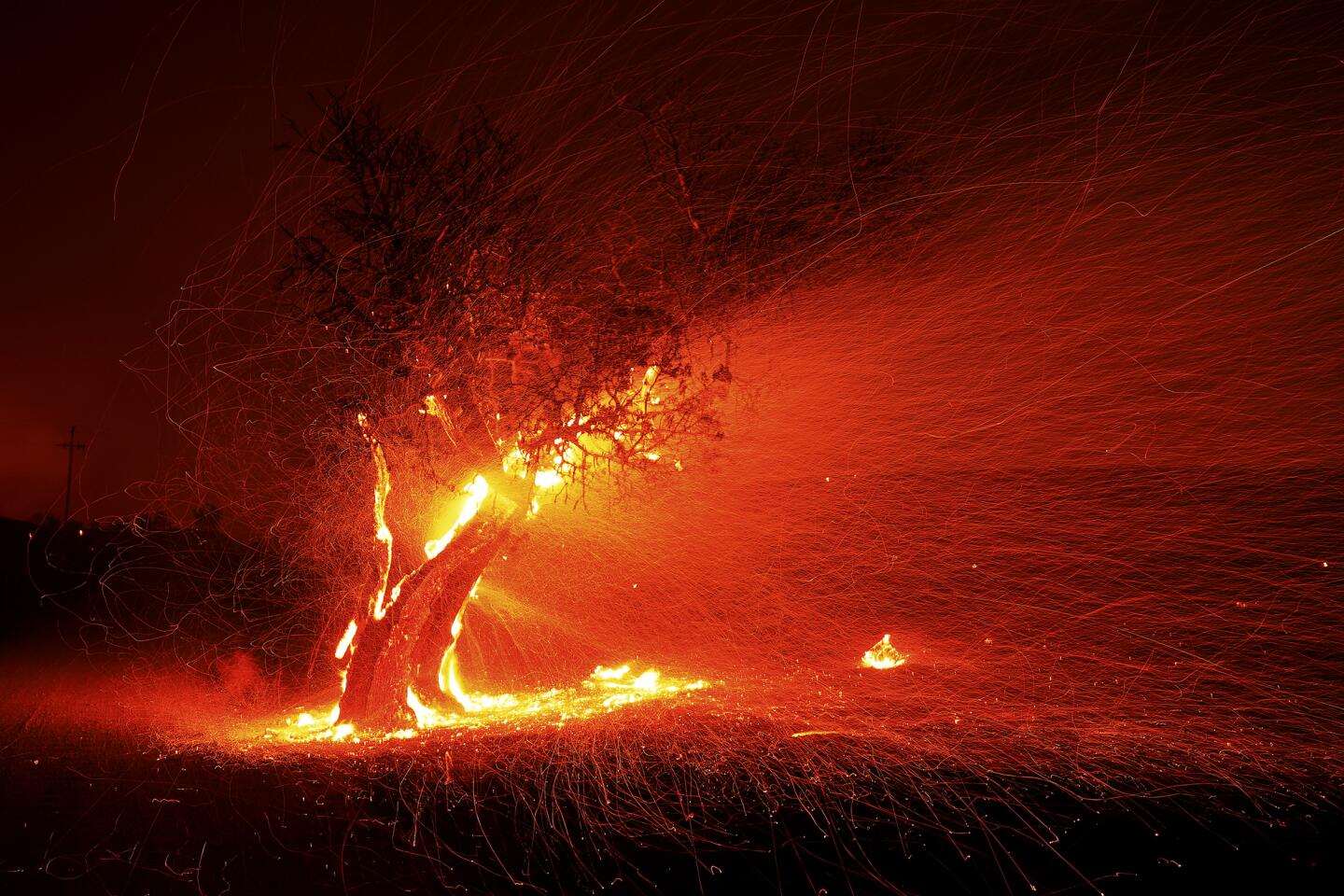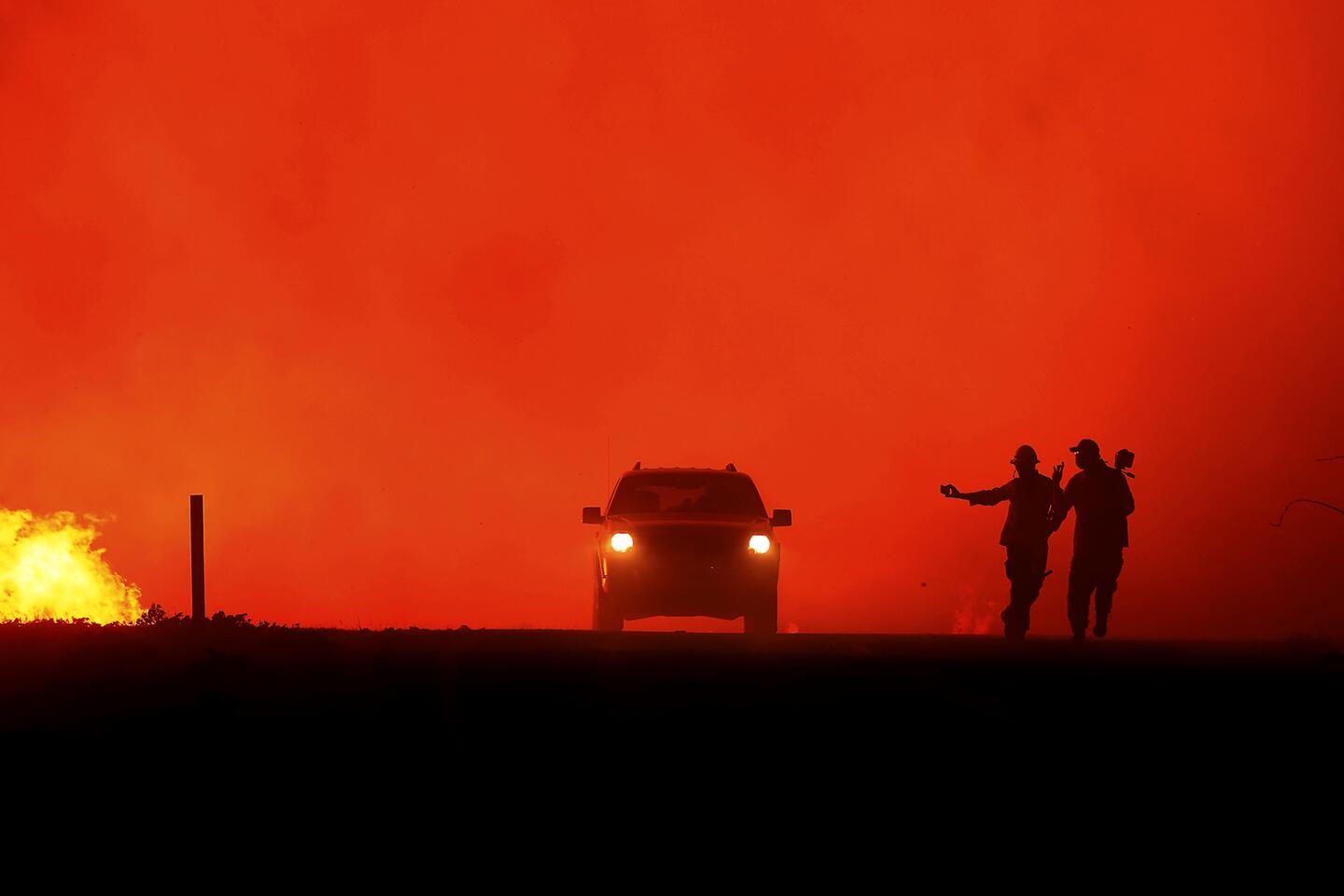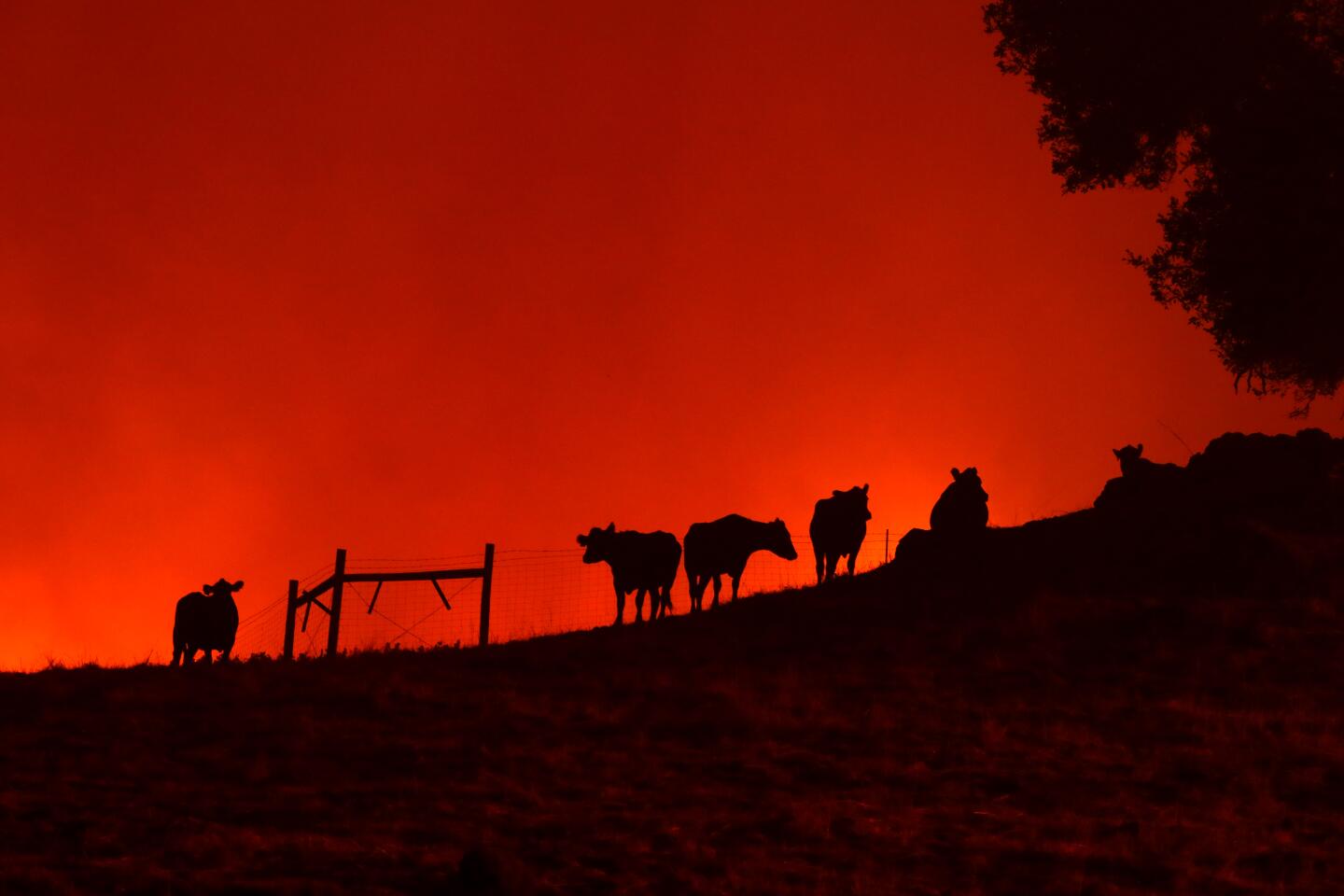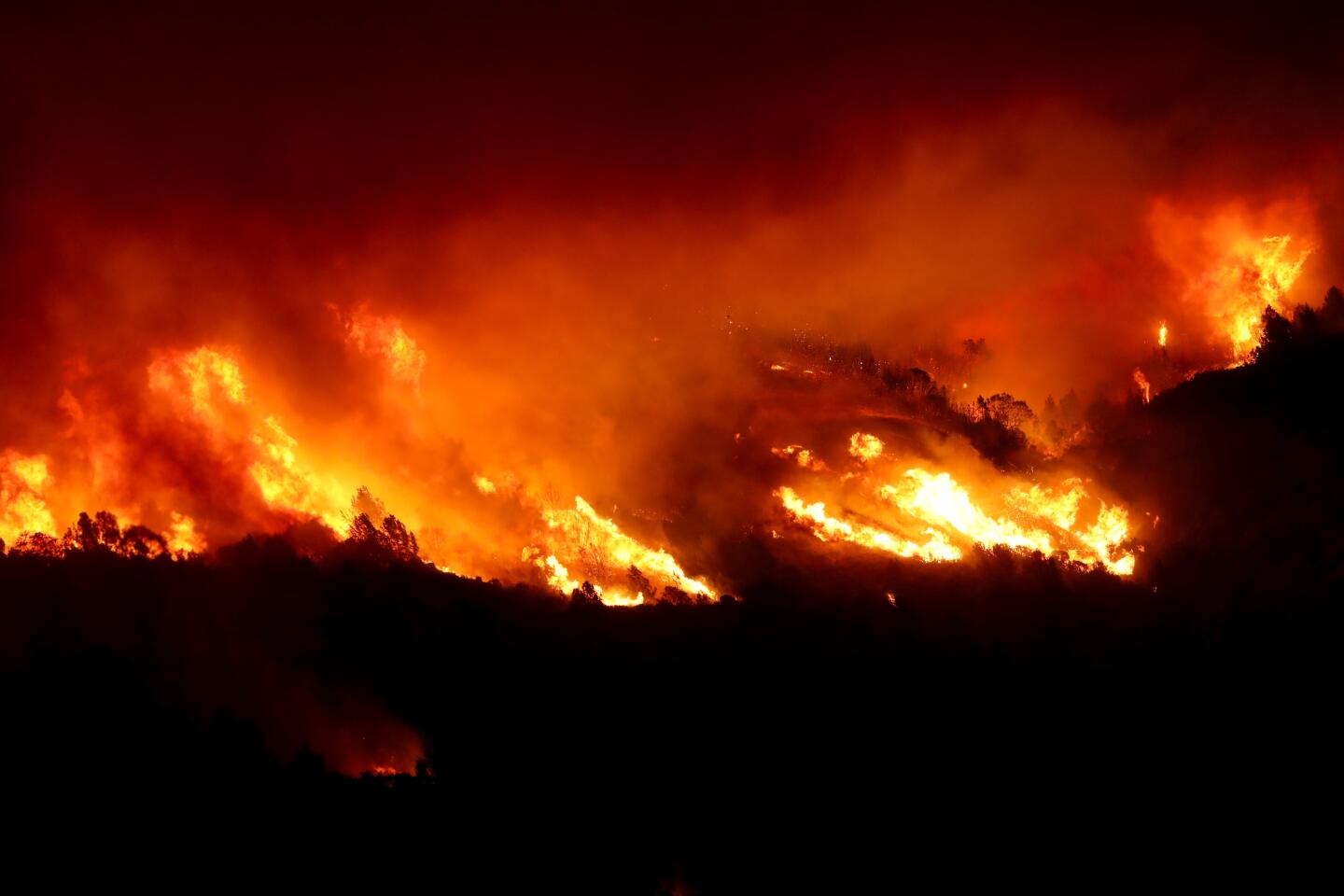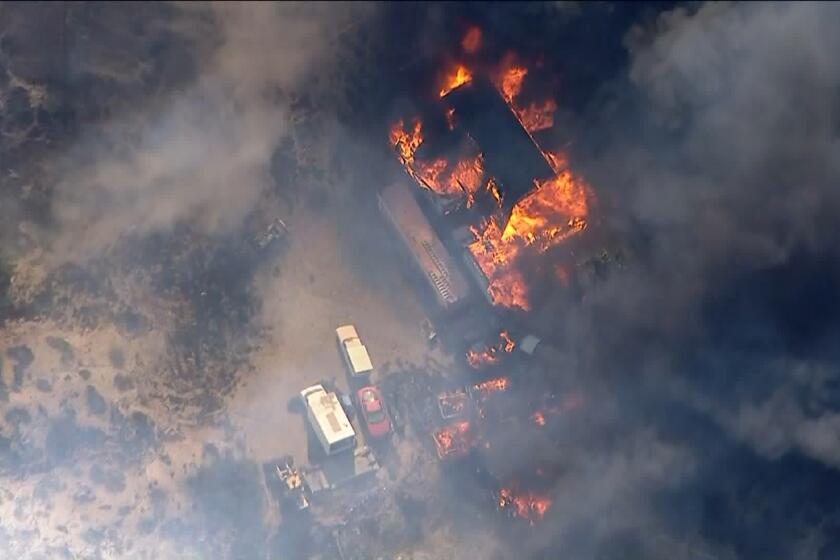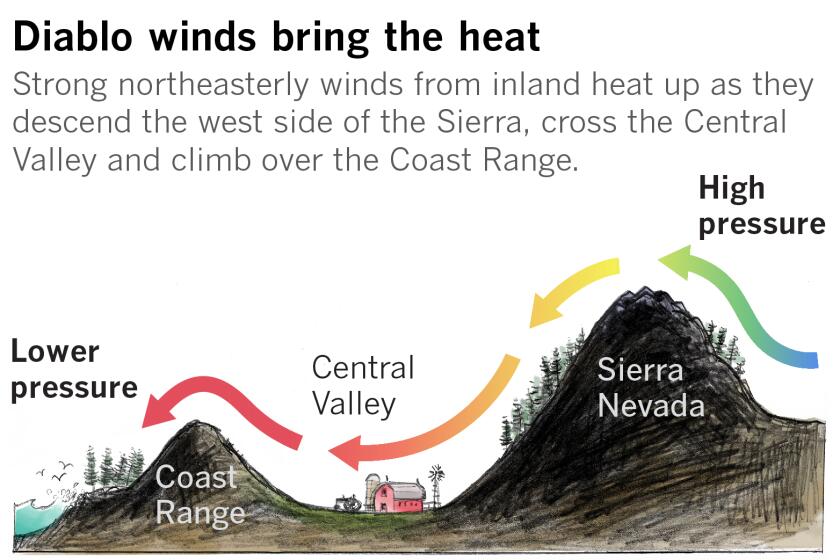Fires explode across California, from wine country vineyards to Southern California subdivisions
- Share via
Fueled by violent winds from the northeast, fires erupted on dry hills across California, tearing through oaks and vineyards in Sonoma County and burning homes hundreds of miles away in subdivisions near Santa Clarita.
The extreme weather conditions will continue into this weekend, heightening both the fire threat and the likelihood of more widespread power outages as utilities try to prevent electrical lines from sparking more blazes.
As the winds swept into California on Wednesday night, an eruption of fires big and small followed: first Northern California wine country, then San Bernardino, Orange County, Marin County, Santa Clarita, Eagle Rock and the San Fernando Valley. Firefighters were able to control some while others exploded out of control.
The Kincade fire started Wednesday night and consumed more than 16,000 acres of northern Sonoma County, pushed by wind gusts higher than 70 mph and forcing the evacuation of Geyserville and other parts of the famed Alexander Valley wine region and burning about 50 structures..
“If you’re in Geyserville, leave now,” the Sonoma County Sheriff’s Office said in an advisory Thursday morning.
Pacific Gas & Electric Co. had shut off power to thousands because of dangerous wind conditions.
It’s unclear whether utility lines played a role in the Sonoma County blaze, but an incident report from PG&E said a transmission line failure occurred near Kincade and Burned Mountain roads at 9:20 p.m. Wednesday, around the time the fire was first reported. In a mandatory report sent to the California Public Utilities Commission, the company said one of its workers noticed Thursday morning that the California Department of Forestry and Fire Protection had taped off the area. PG&E said Cal Fire also pointed out a “broken jumper on the same tower.”
PG&E said distribution lines in Geyserville and the surrounding area were shut down at 3 p.m. Wednesday but transmission lines remained energized.
“Those transmission lines were not deenergized because forecast weather conditions, particularly wind speeds, did not trigger the PSPS [public safety power shut-off] protocol,” PG&E said in a statement. “The wind speeds of concern for transmission lines are higher than those for distribution.”
Officials have not determined the cause of the fire.
In Southern California, the Tick fire erupted near the 14 Freeway around 1:45 p.m. Thursday and was moving quickly toward Agua Dulce, with 29-mph gusts that were expected to as much as double in strength overnight.
Firefighters scrambled to get air support to protect neighborhoods in the fire’s path. But the rugged topography made it difficult as the blaze raced through narrow gullies up to the backs of homes. Some homeowners tried to beat back flames with garden hoses, but several homes went ablaze.
Other fires broke out in Marin, San Bernardino and Orange counties, and one ignited in Eagle Rock.
Southern California Edison said it planned to turn off electricity to as many as 300,000 customers, while PG&E reported cutting power to more than 184,000 customers but apparently did not shut down all transmission lines in the Kincade fire zone.
The outages gave some residents a false sense of security. Madonna Tavares and her husband went to sleep in their Geyserville home around midnight and woke to a banging on their door at 5:30 a.m. “Get out! Get out!” their landlord yelled.
Tavares, 70, said the smoke outside was so thick she could barely see a foot in front of her.
With the power out, she and her husband scrambled in the dark to get dressed, find their two small dogs and jump in their car.
“They shut off the power and we still had a fire,” she said. “I don’t understand it.”
After Dwight Monson, 68, heard a fire was burning 16 miles from his family ranch, he gathered important documents, packed the cars and evacuated his grandchildren.
All was still clear at 2 a.m. Monson figured the ranch, tucked amid vineyards and great oaks in the hills above the Russian River, was safe. Then he saw flames on Black Mountain, about three miles to the northeast. The fire had raced 14 miles from where it had started less than five hours before.
Monson placed his hopes in a neighboring vineyard — a thousand acres of lush grapevines between his home and the fire. That prospect dimmed as the mountain was engulfed and a few swirling embers turned into a storm, driven by powerful gusts out of the Mayacamas Mountains. He and his wife, son and brothers fled after 4 a.m.
“We looked up the hill and couldn’t believe what we saw,” Monson said. “To see that whole thing, just red flame.”
Video shows motorists driving through Tick fire flames on 14 Freeway in prelude to a hellish commute
Commuters traveling in and out of the Santa Clarita Valley faced a traffic nightmare after the Tick fire jumped the 14 freeway.
By the time they got to a friend’s house in Geyserville, the fire was already there. A front gate was in flames across the street. “It followed us down,” Monson said.
They moved on to a shelter in Healdsburg. Monson said the family lost four homes and a barn on their property.
The fire brought back dark memories in the region. Two years ago, the Tubbs fire and others burned through wine country just to the north and south, killing more than 40 people, destroying more than 6,000 homes and devastating a swath of Santa Rosa.
“There is still a lot of trauma in Sonoma County from the fires of two years ago, and waking up to a day like today brings back a lot of memories,” said David Rabbitt, chairman of the Sonoma County Board of Supervisors.
The wind in the region was expected to abate Thursday evening through Friday but return even stronger Saturday, with gusts as high as 80 mph. Firefighters will still need to contend with unusually high temperatures in the 90s and low humidity levels throughout the Bay Area on Friday.
A reporter observed numerous destroyed homes in the area of the Kincade fire, but no official count had been released by Thursday afternoon. The massive Geysers geothermal energy facilities run by Calpine Corp. reported some damage.
Firefighters struggled Friday against a wildfire burning across Sonoma County wine country as Northern California braced for a weekend of intense winds, critical fire danger and mass power outages.
Ten air tankers and helicopters were being used to fight the fire from above as ground crews attempted to add containment lines around the blaze, said Will Powers, a spokesman for Cal Fire. But the wind kept driving embers over the lines to ignite grass and brush, and the fire had zero containment as of Thursday afternoon.
Residents of Santa Rosa and Healdsburg were on edge early Thursday morning with the fire burning to the north.
“It’s scary for a lot of people,” said Healdsburg Mayor David Hagele.
Hagele said that by 9 a.m., 40 evacuees were at the Healdsburg Community Center, where mental health services were being offered.
“That’s really important when you have these traumatic events, especially this close to the anniversary of the Tubbs fire,” Hagele said. “Our whole county has been affected by that.”
Jim Young, 67, of the Robert Young Estate Winery rode out the night in his pickup truck, checking on his 317 acres of grapes. His frontyard was scorched and the hills above him blackened and still smoldering, but the grapes and his house survived.
Call them Santa Ana winds or Diablo winds. They make brush fires explode.
“The wind was blowing every which way. It was smoky and the embers were flying horizontally, so it made it hard to know what it was going to do,” Young said.
The bright side, he said, is that there’s nothing left to burn near the vineyard when the winds kick up Saturday.
Willon reported from Sonoma County, Luna from Sacramento, and Fry and Reyes-Velarde from Los Angeles. Times staff writers Joe Mozingo, Alex Wigglesworth, Rong-Gong Lin II, Jacyln Cosgrove, Lelia Miller, Dakota Smith, Colleen Shalby and Emily Baumgarten contributed to this report.
More to Read
Sign up for Essential California
The most important California stories and recommendations in your inbox every morning.
You may occasionally receive promotional content from the Los Angeles Times.
